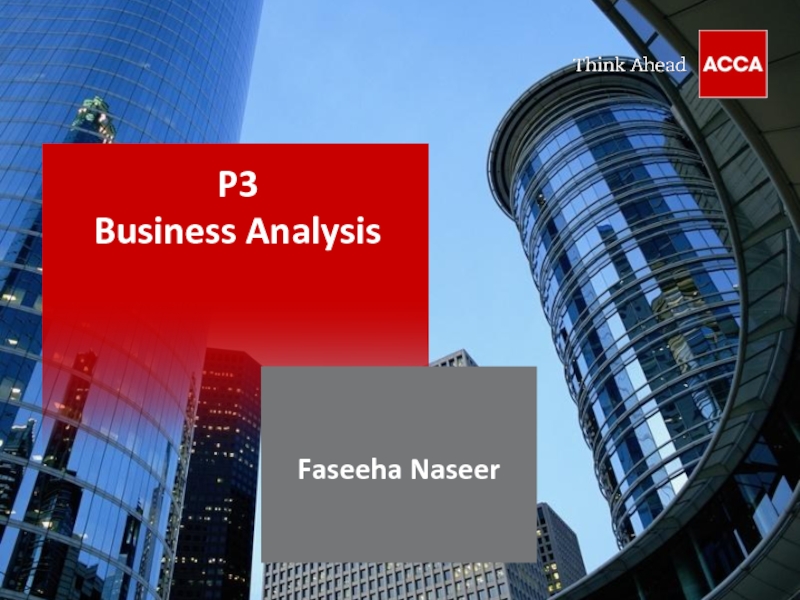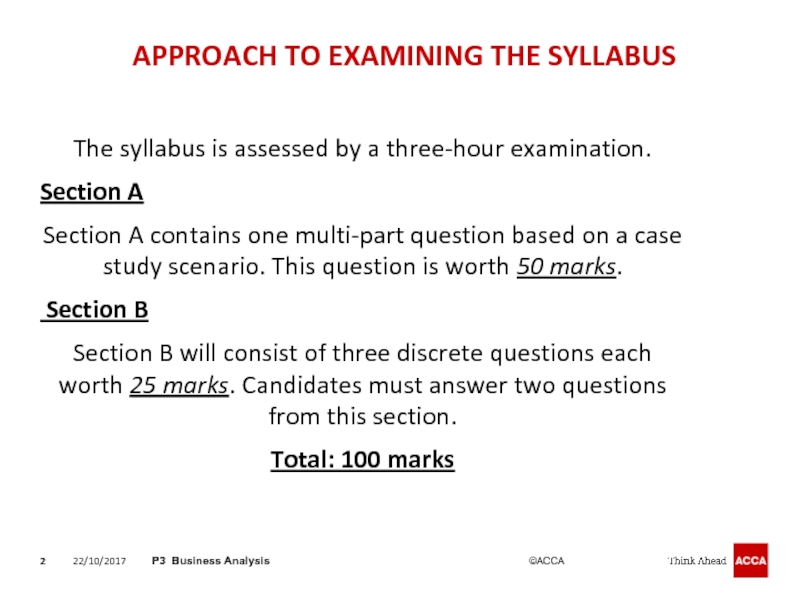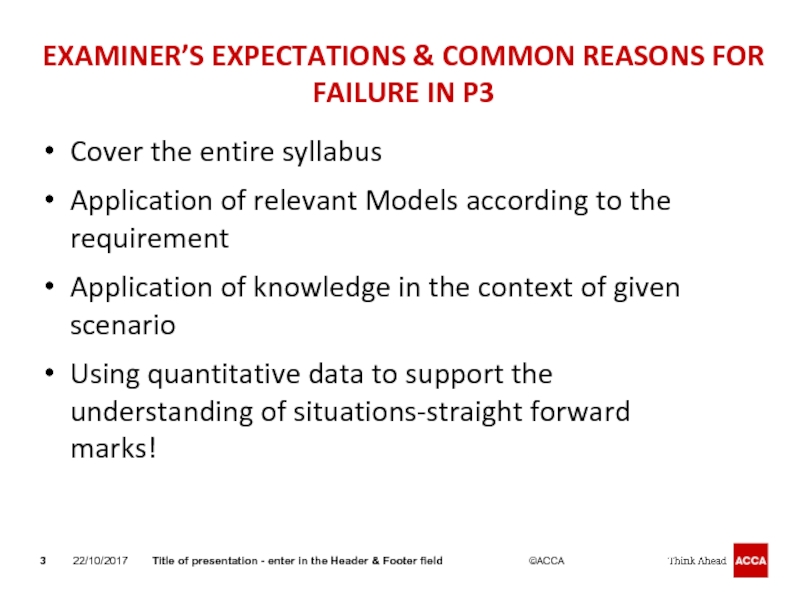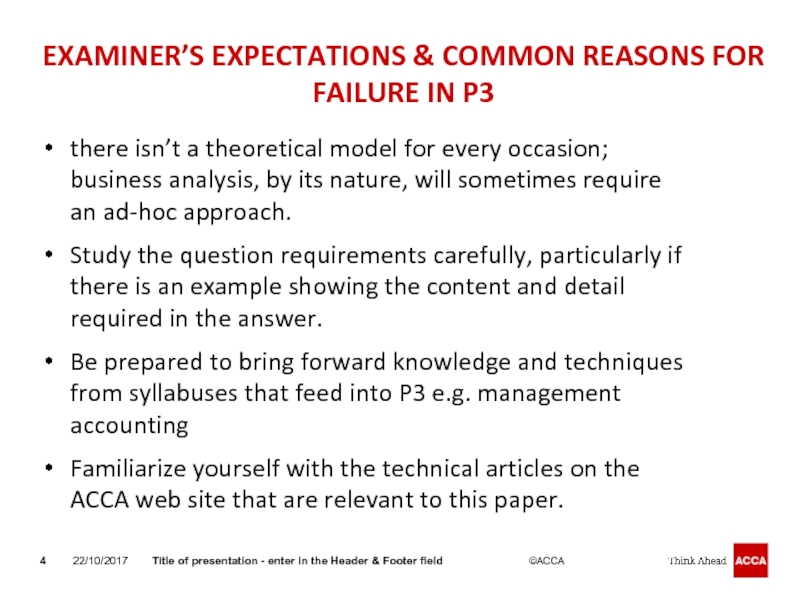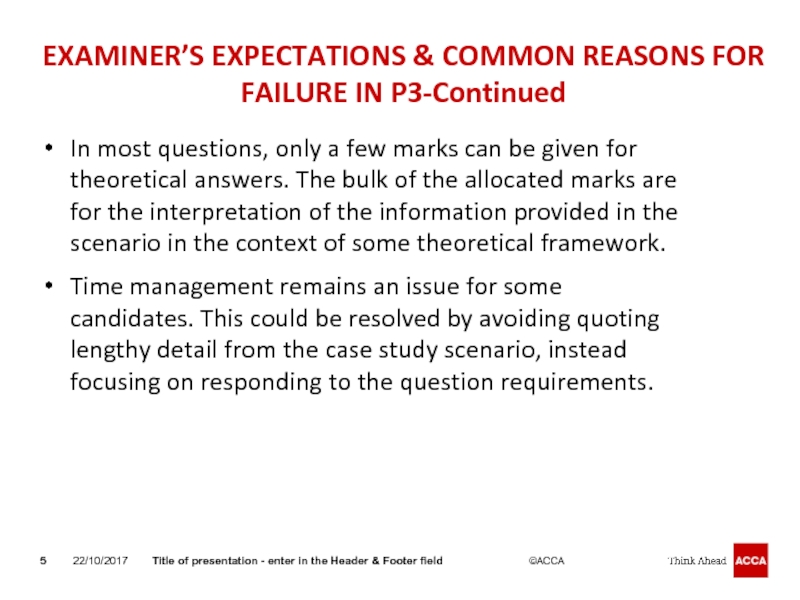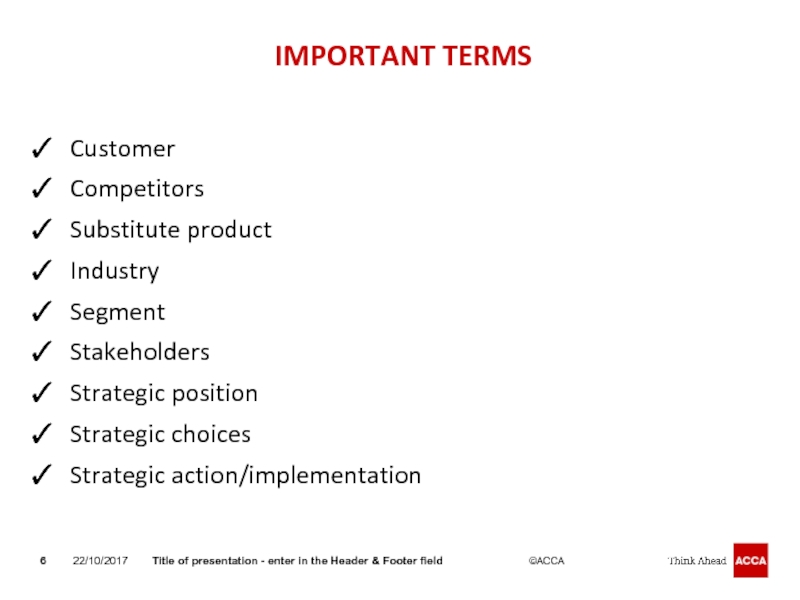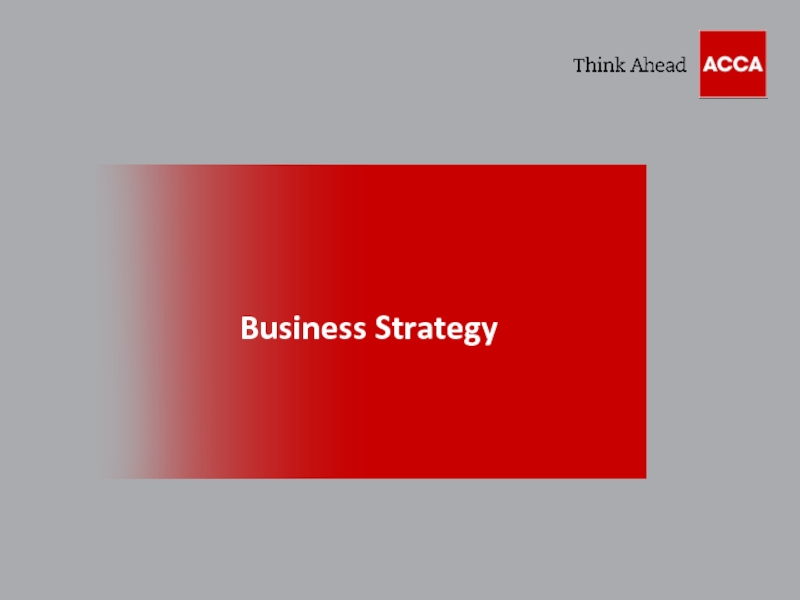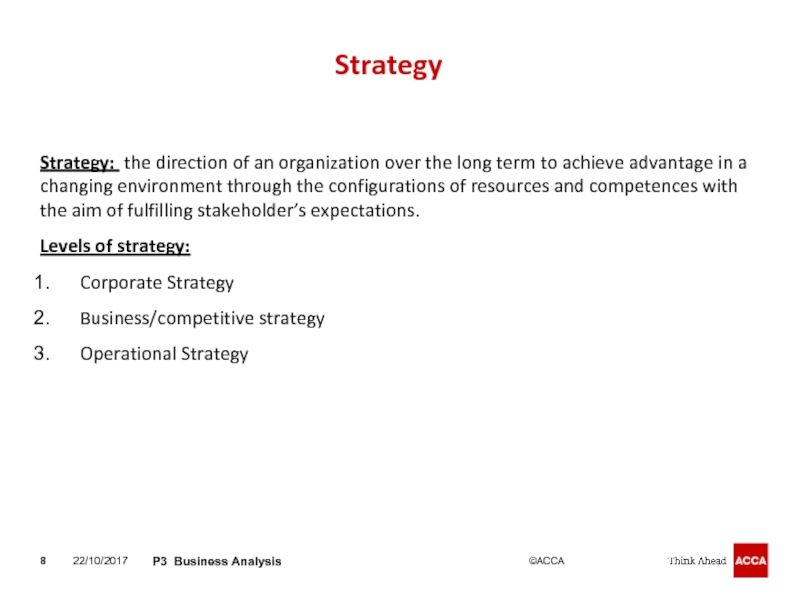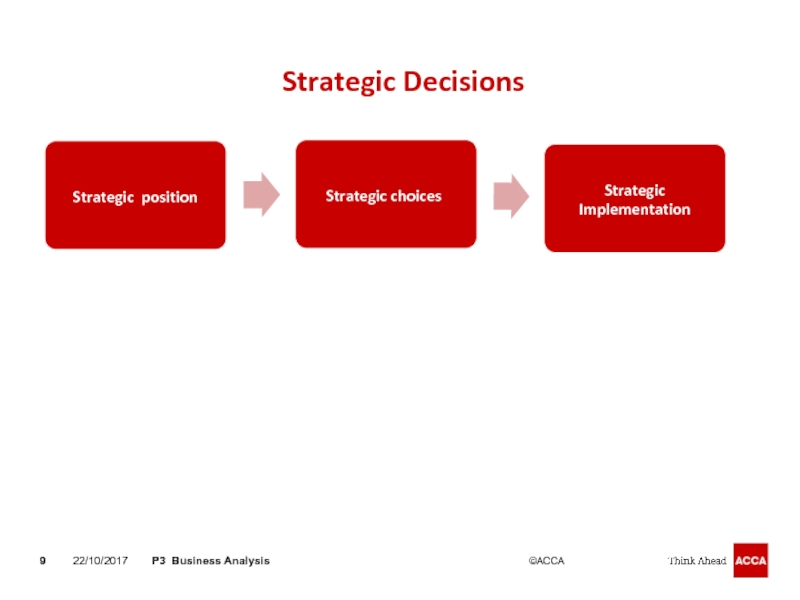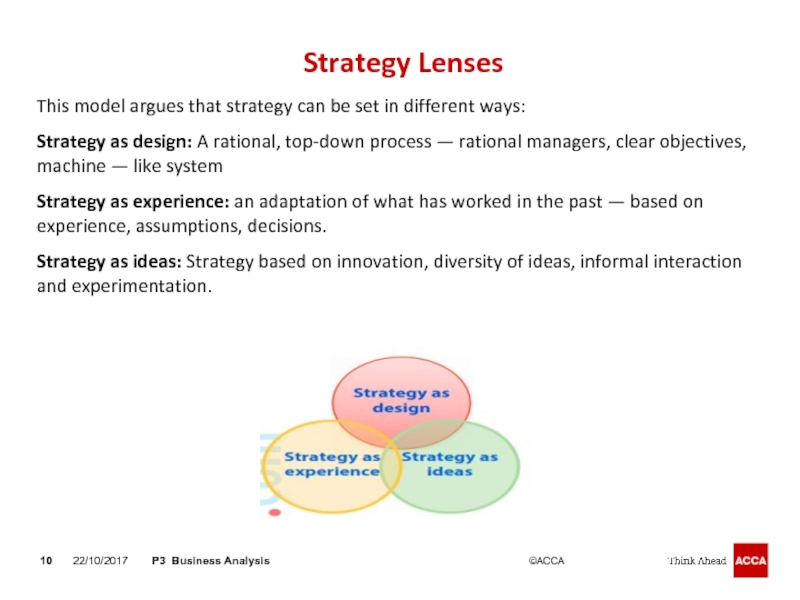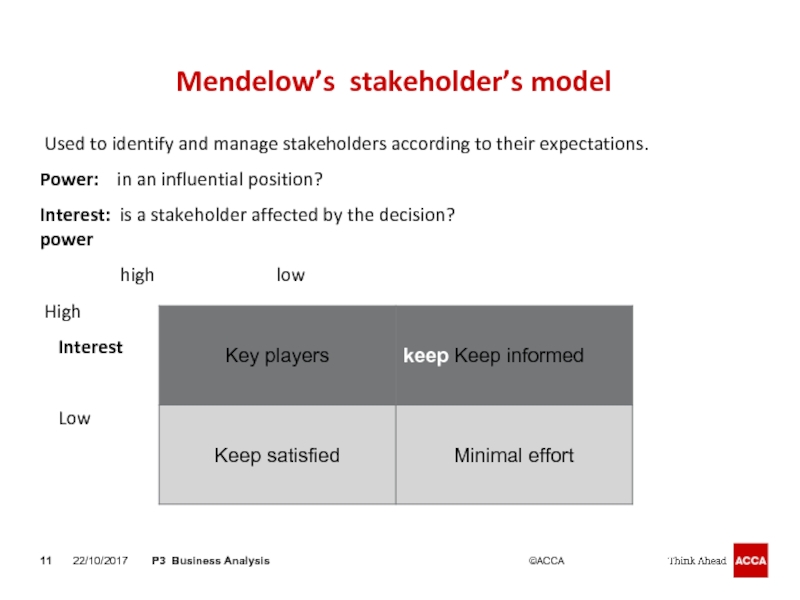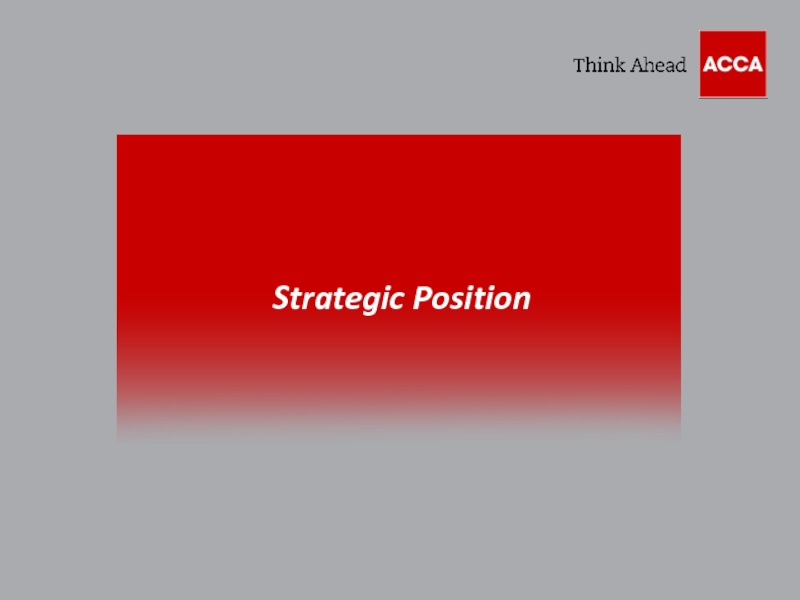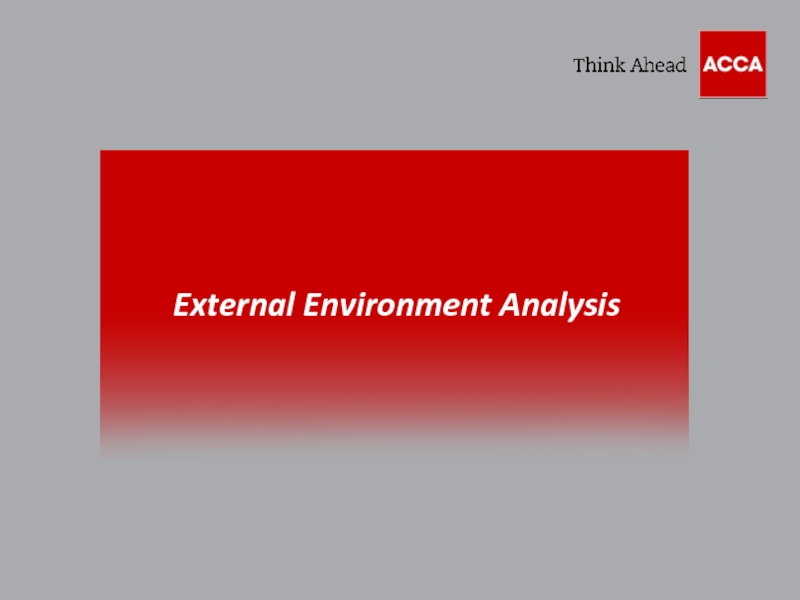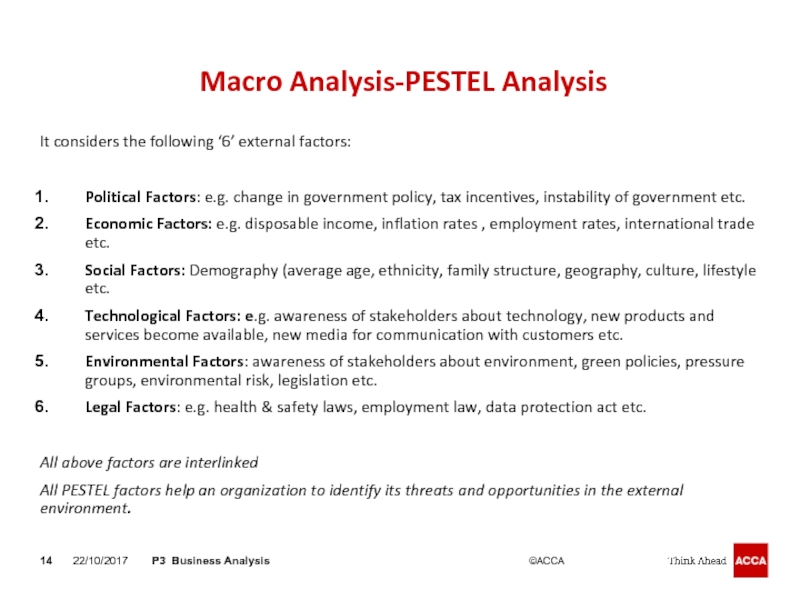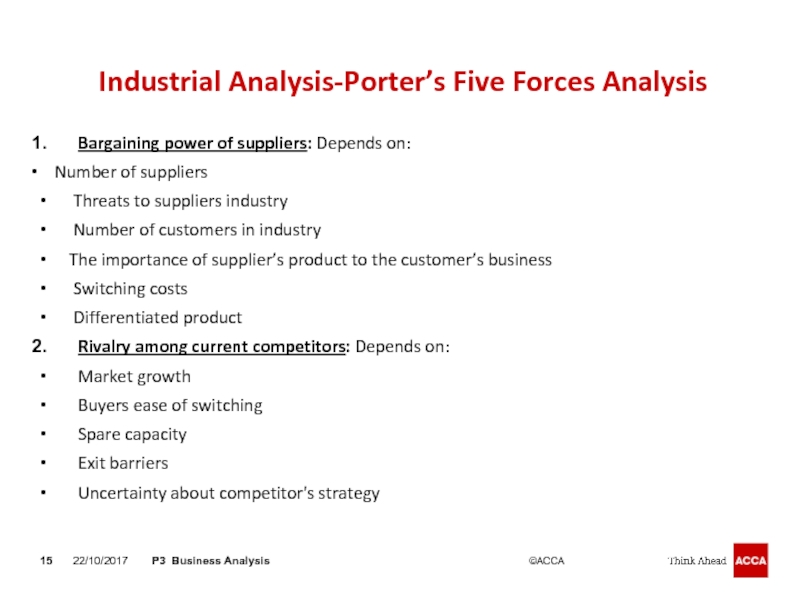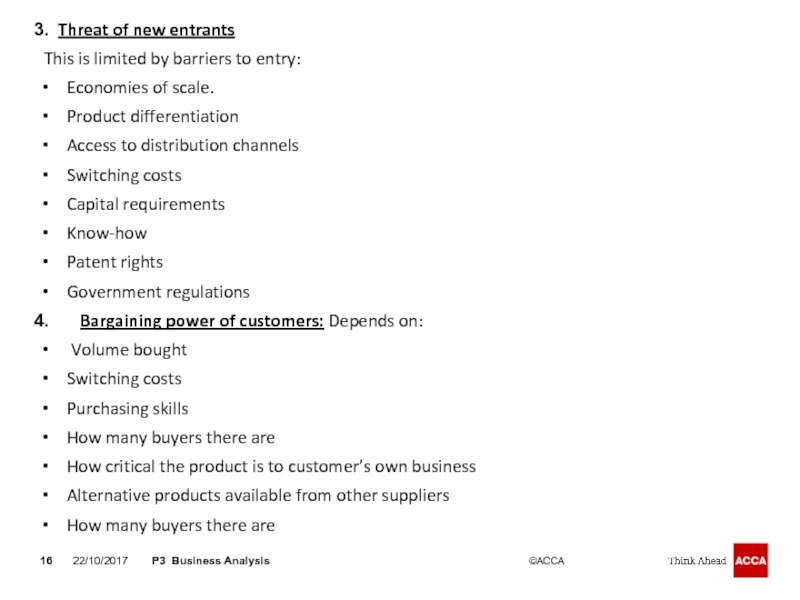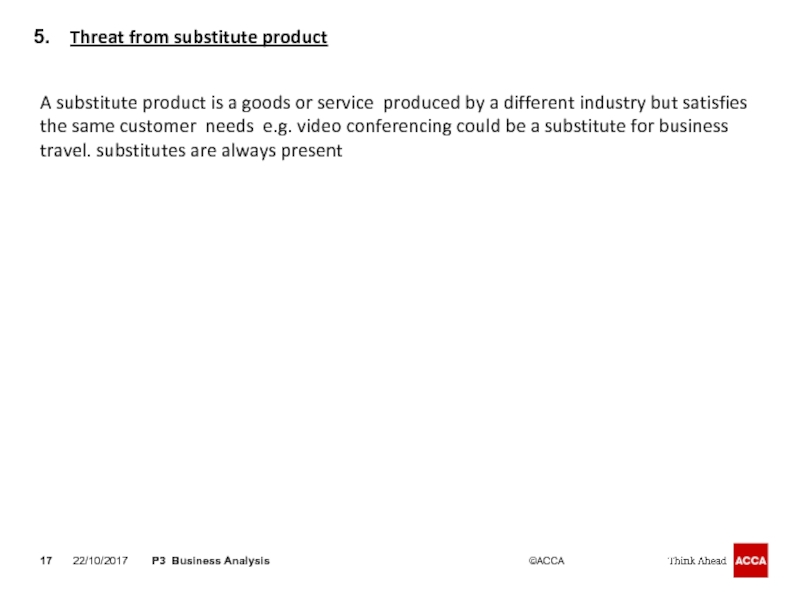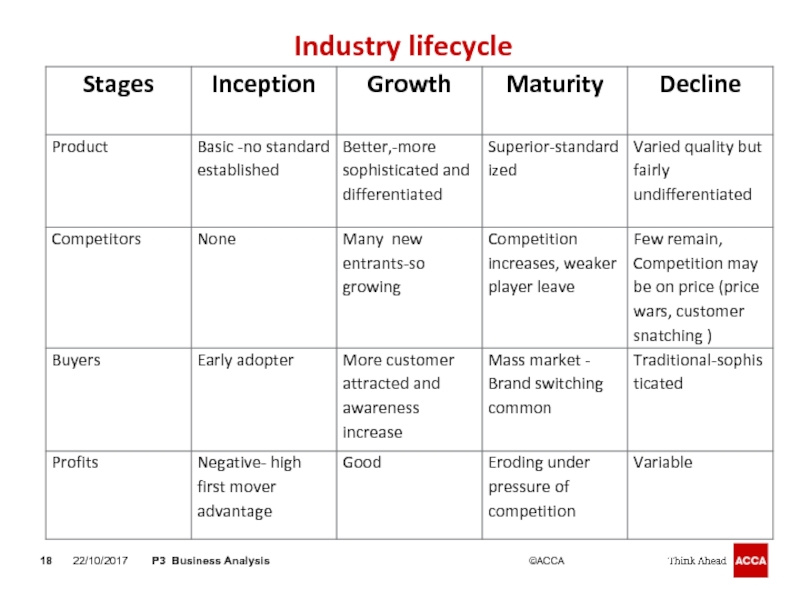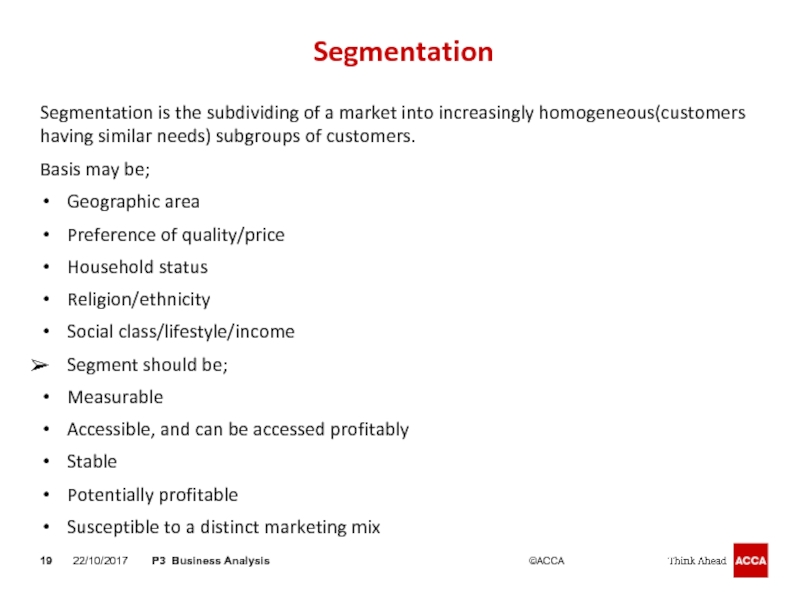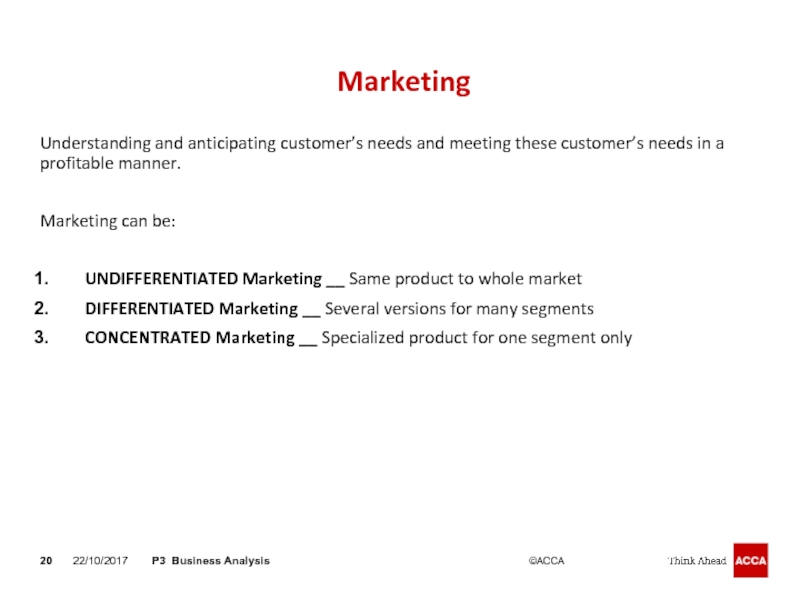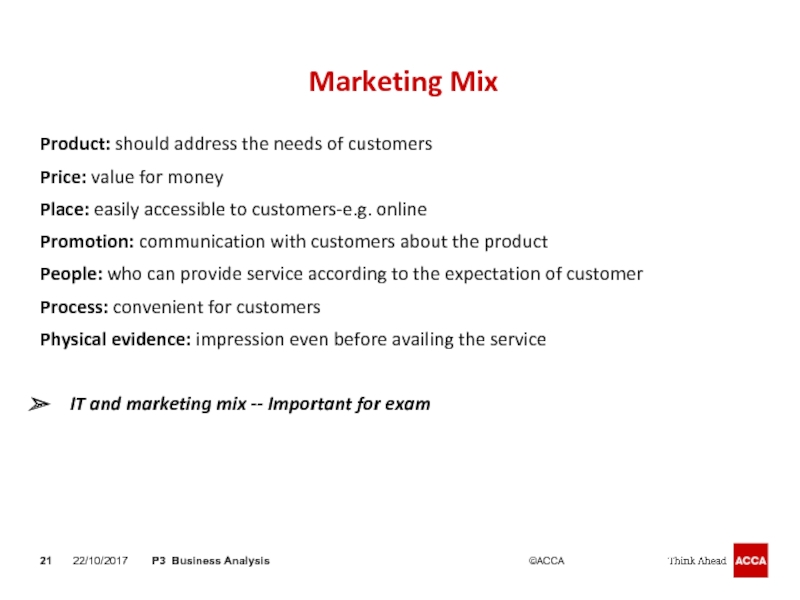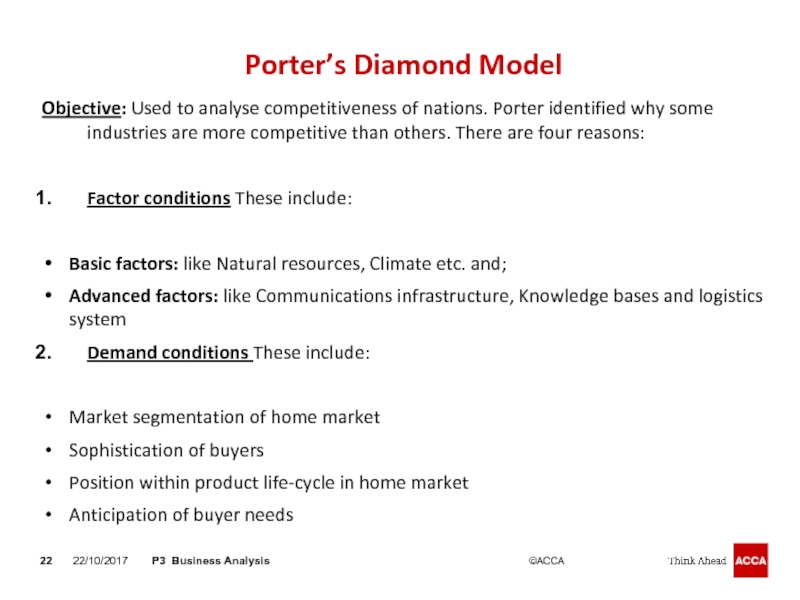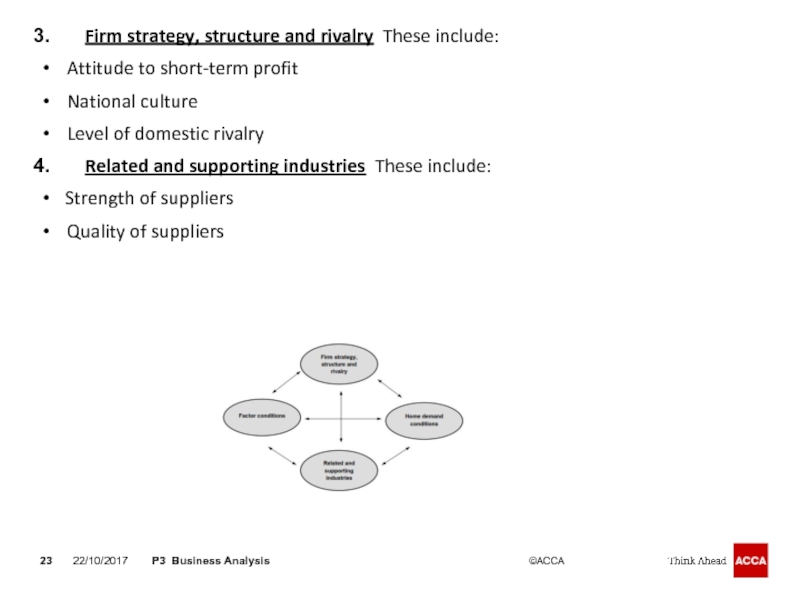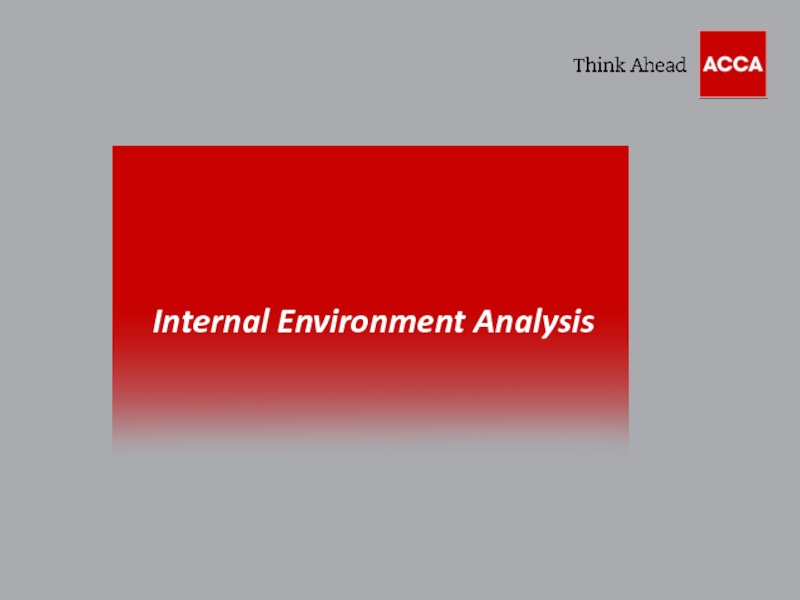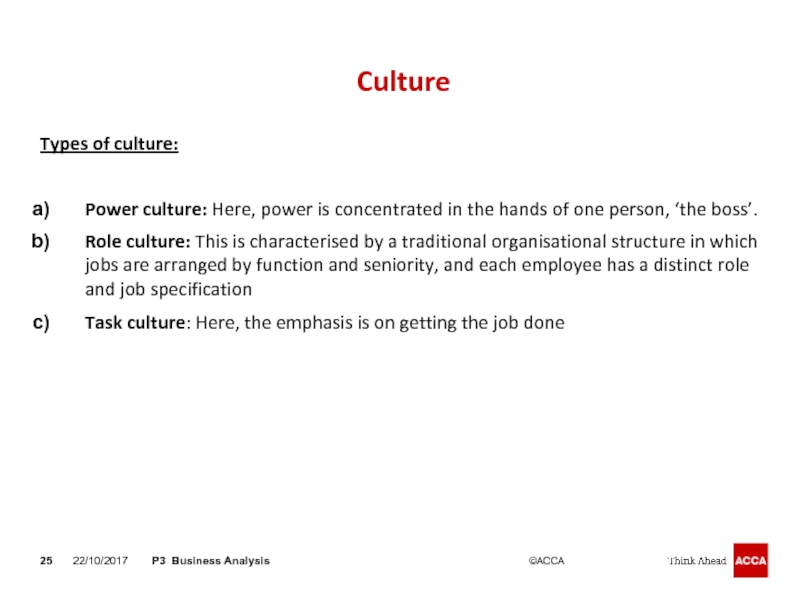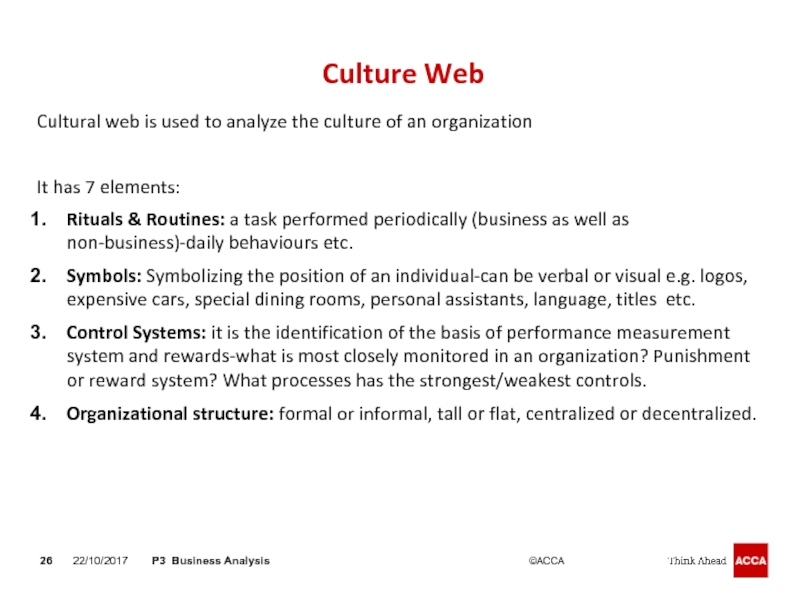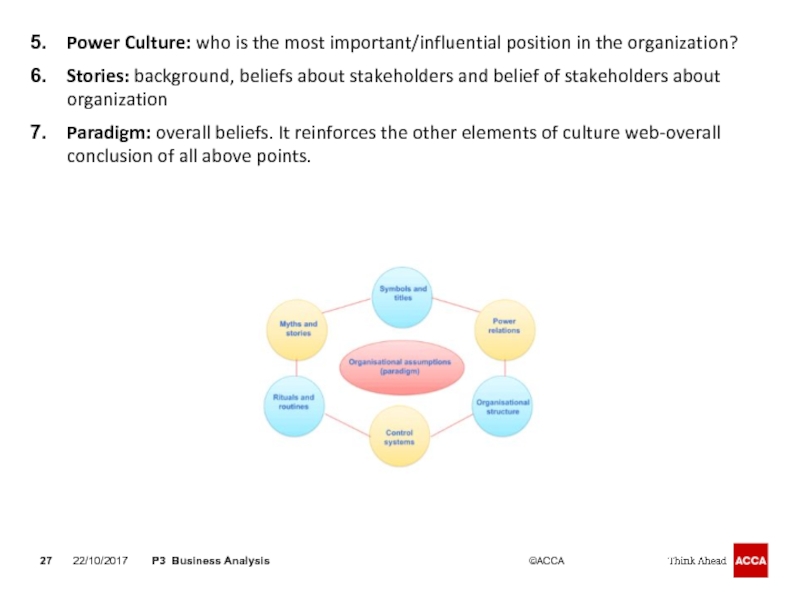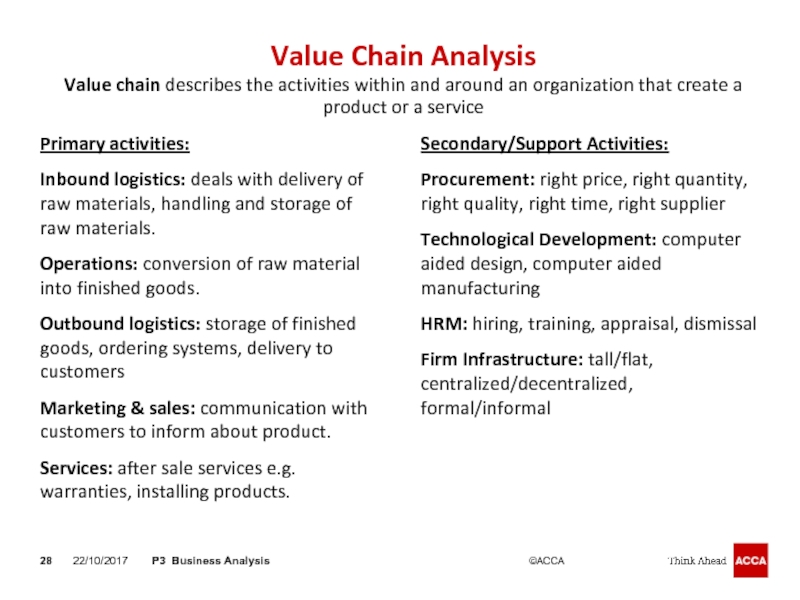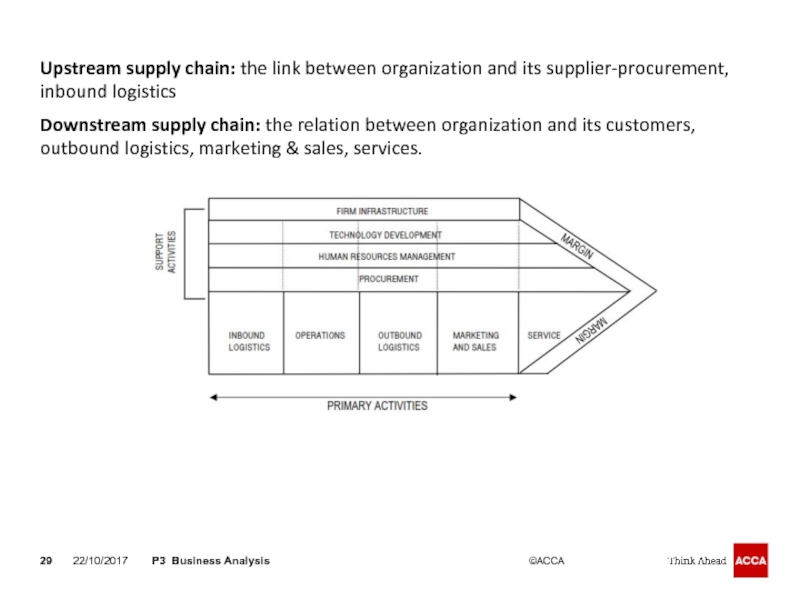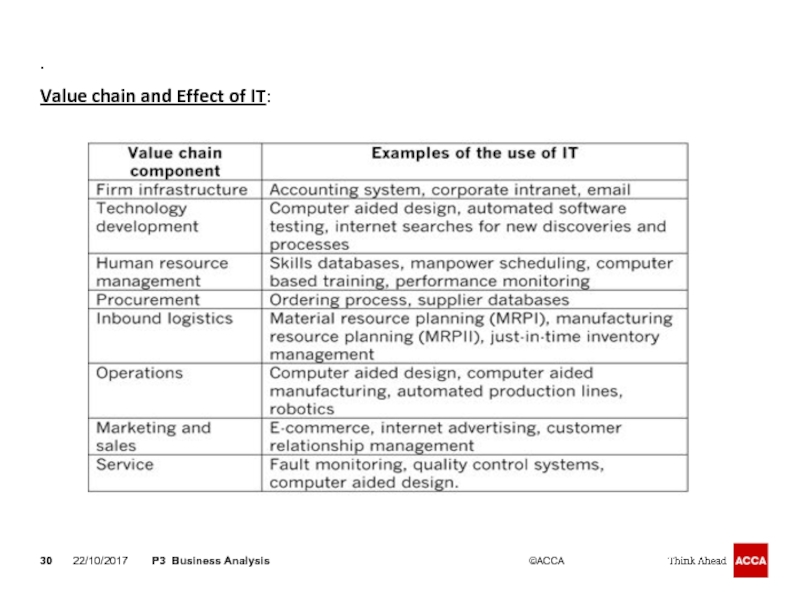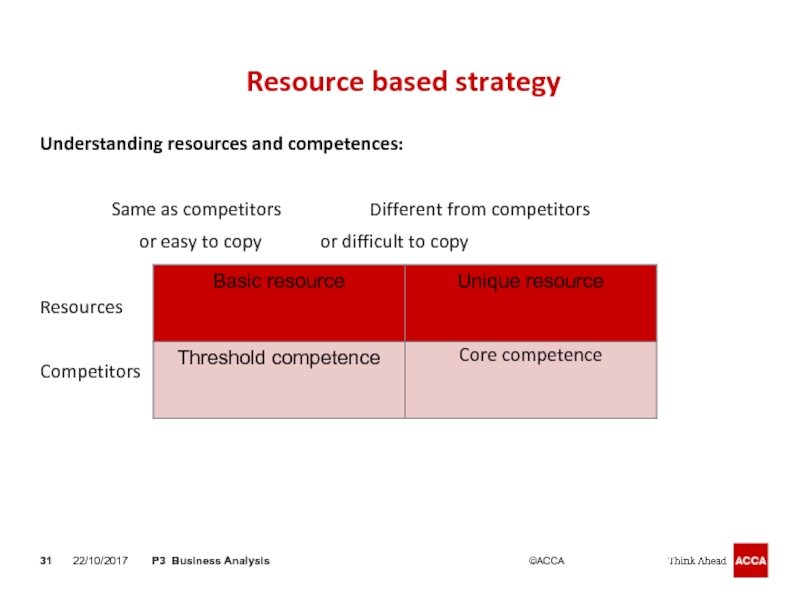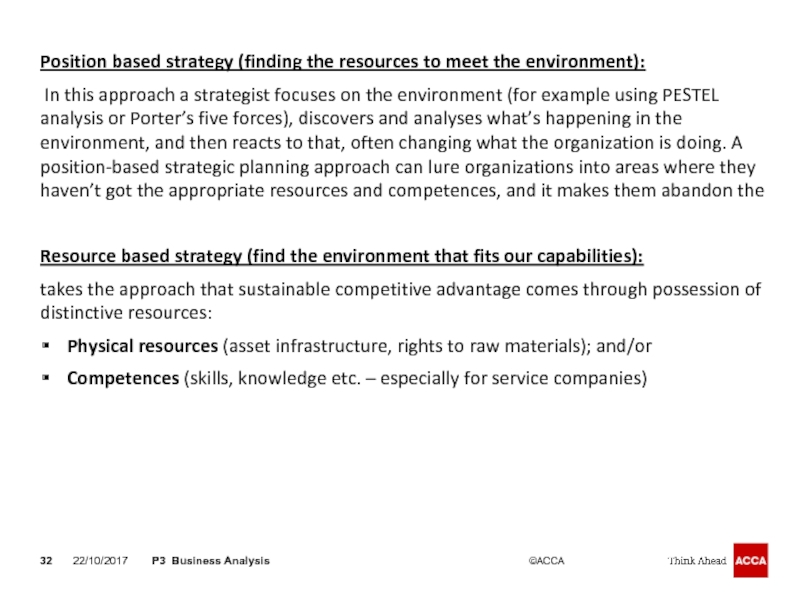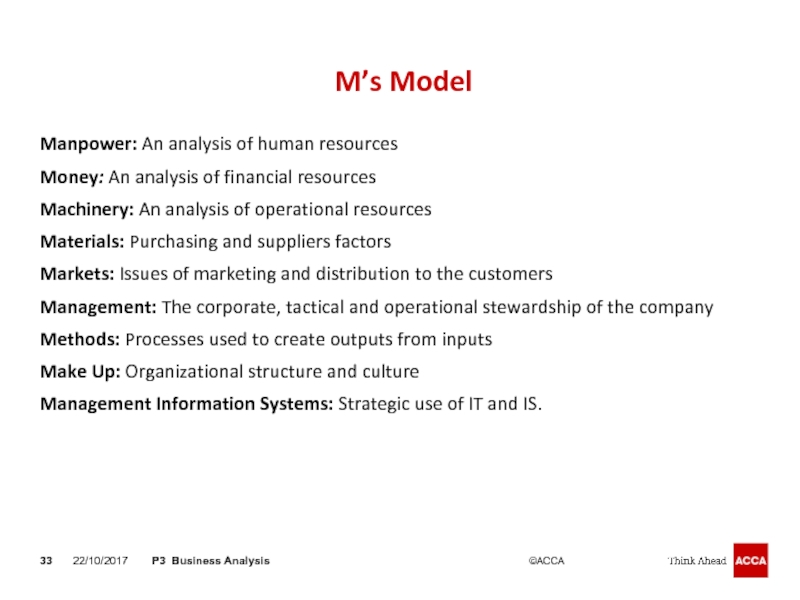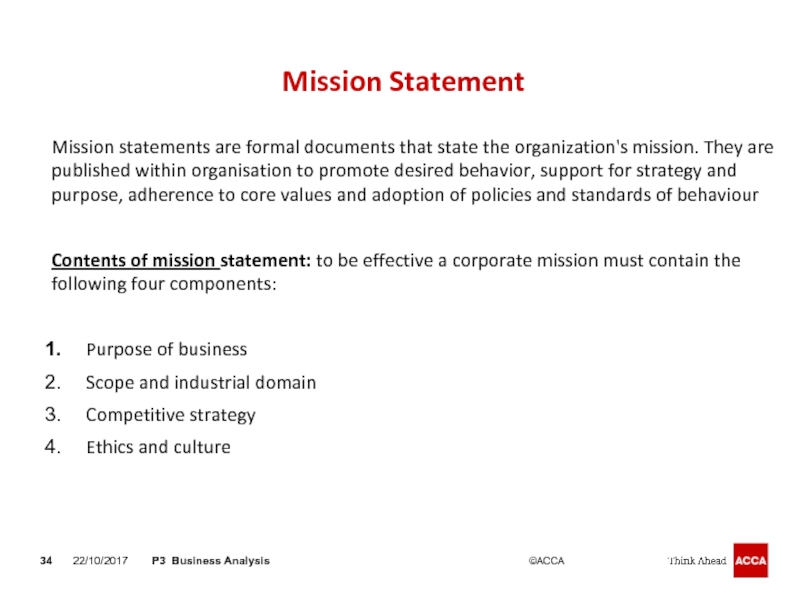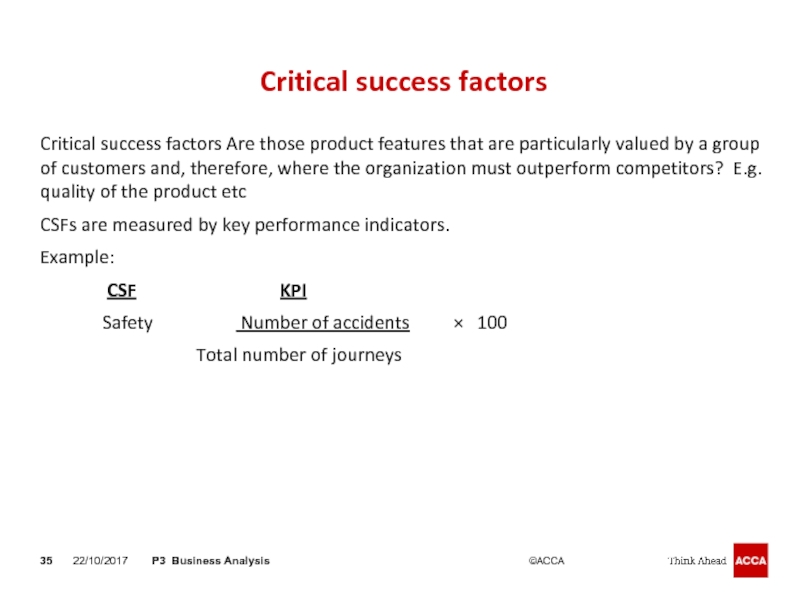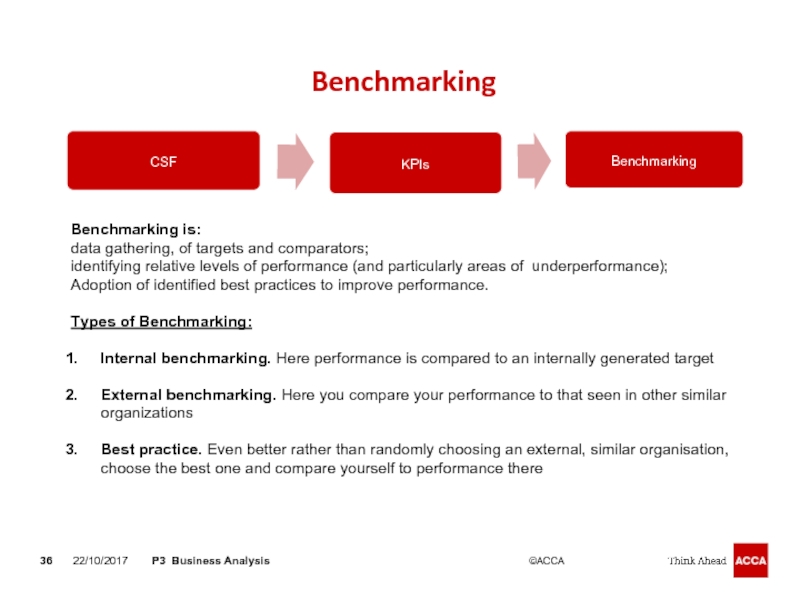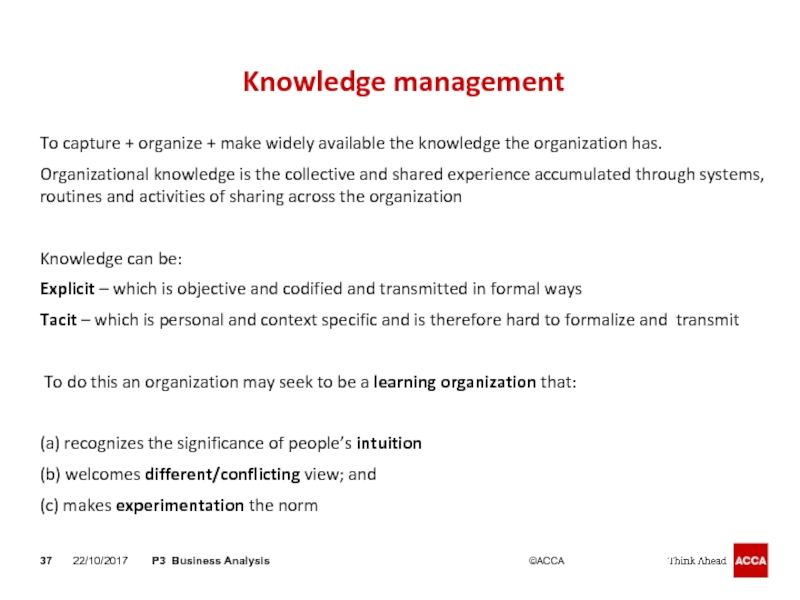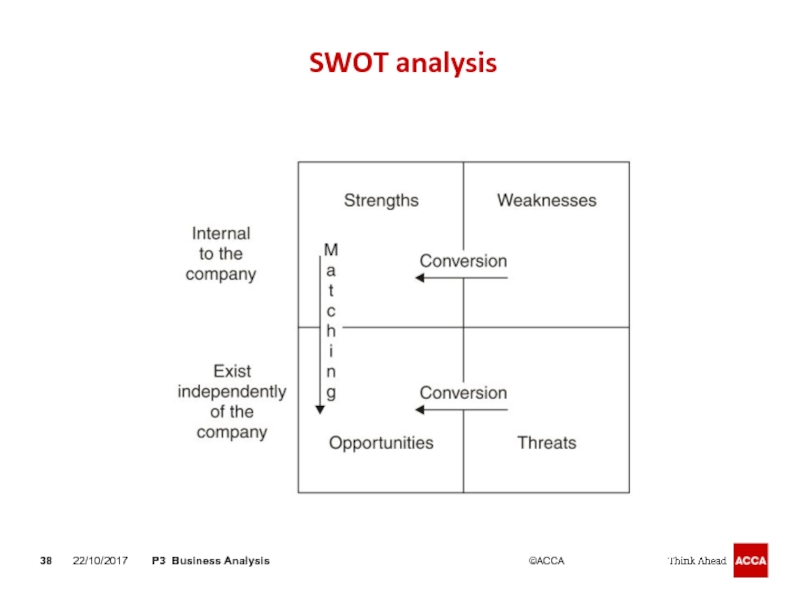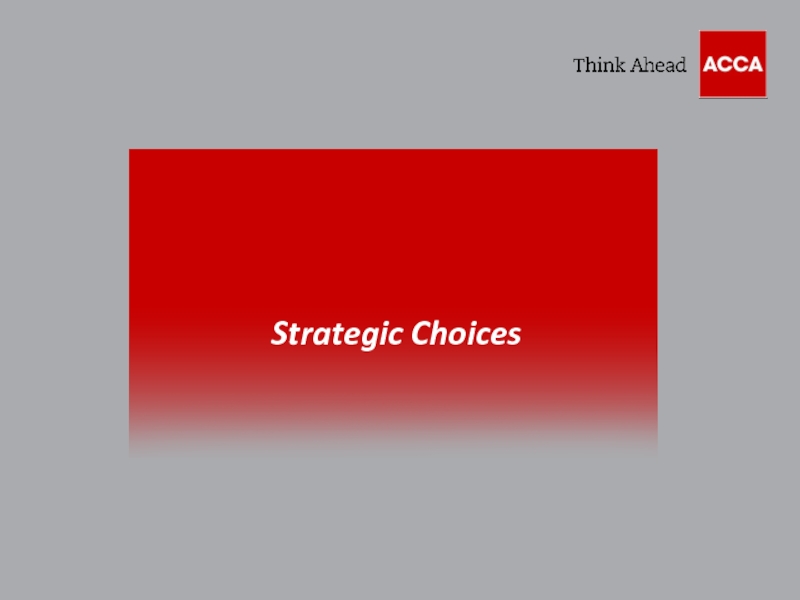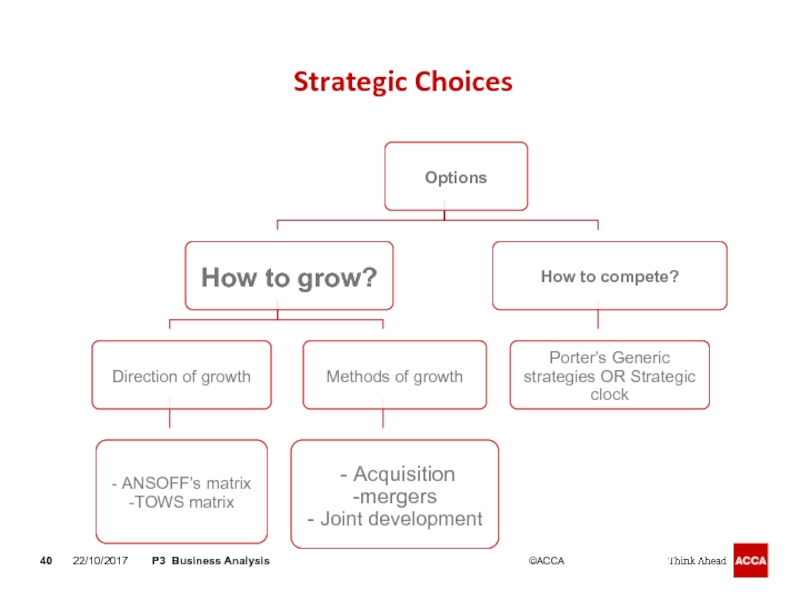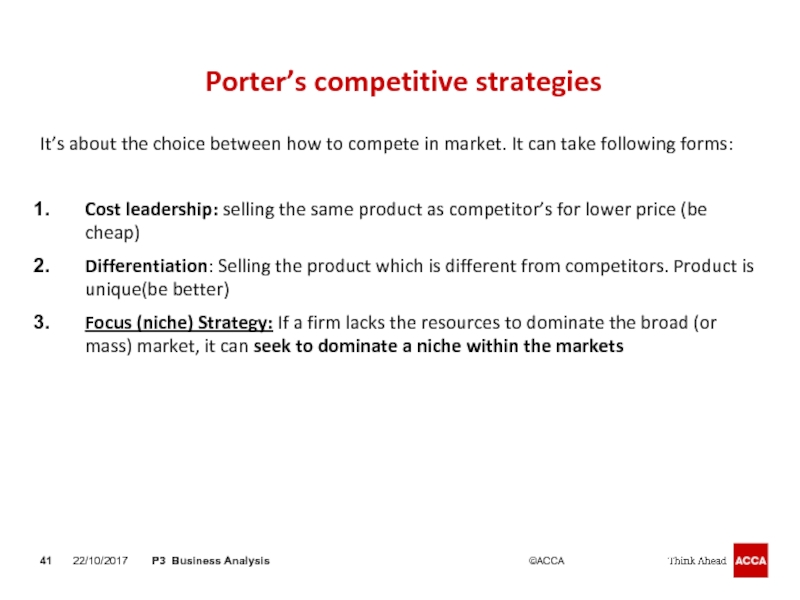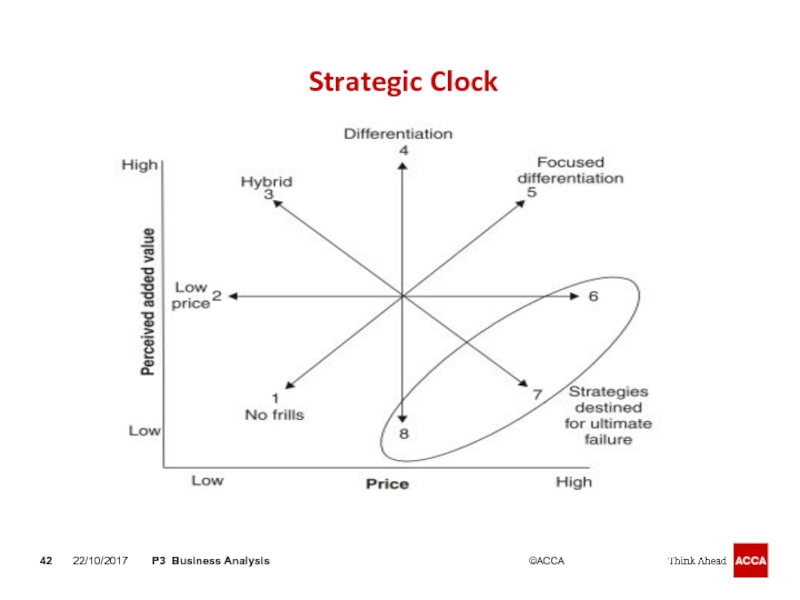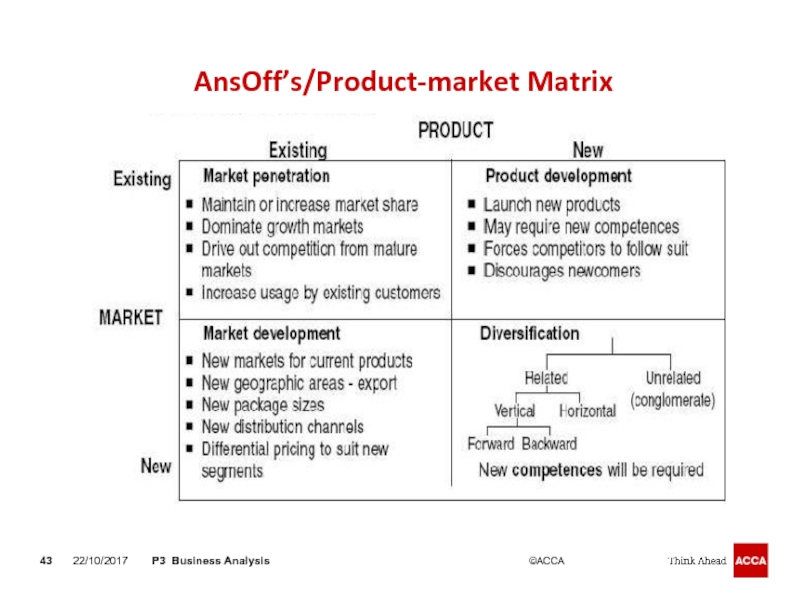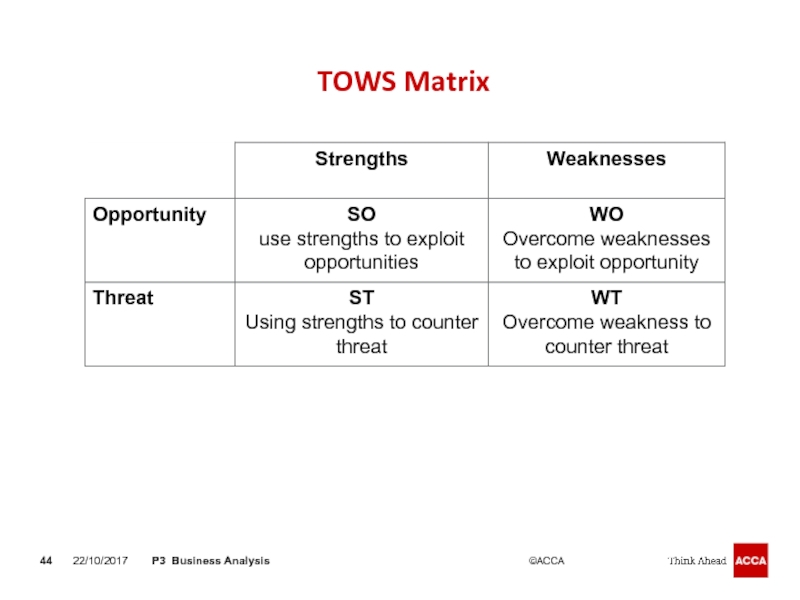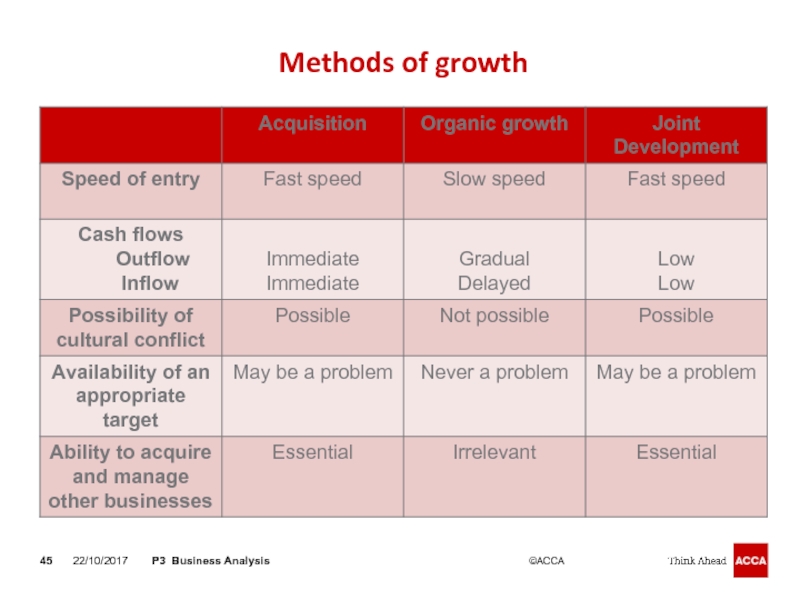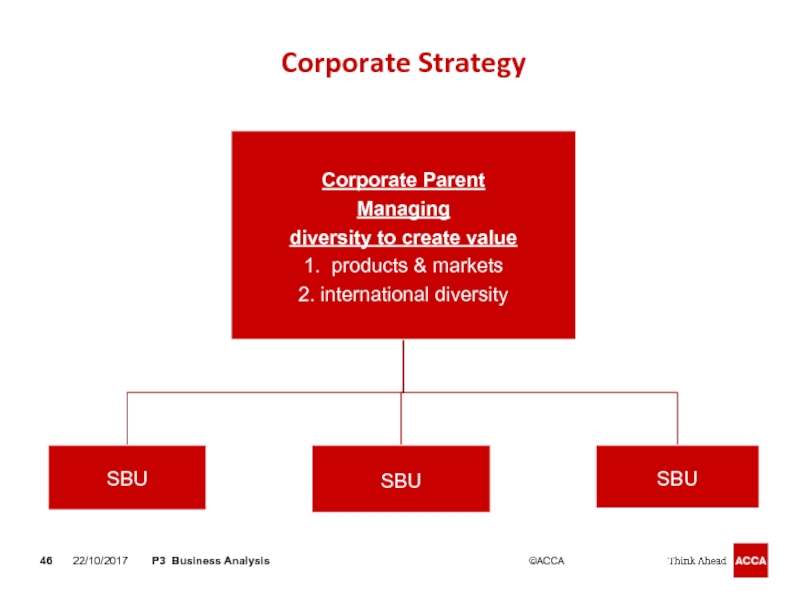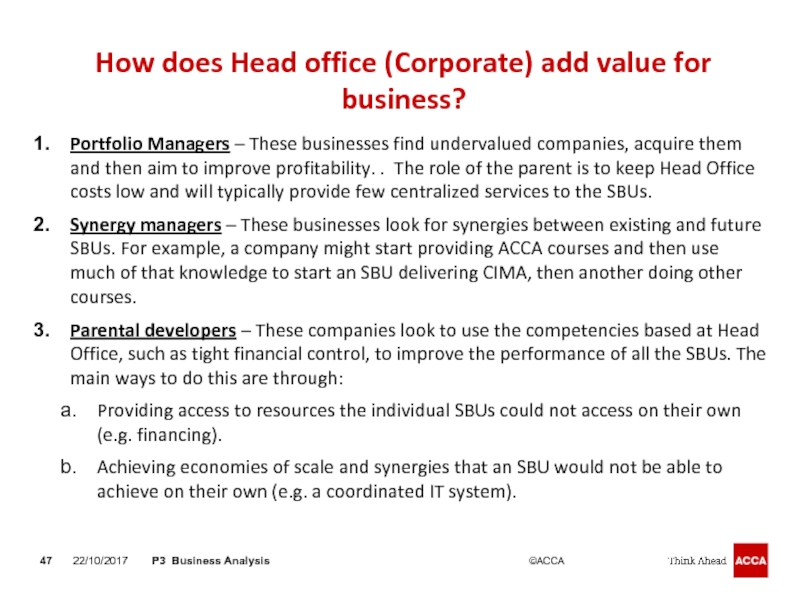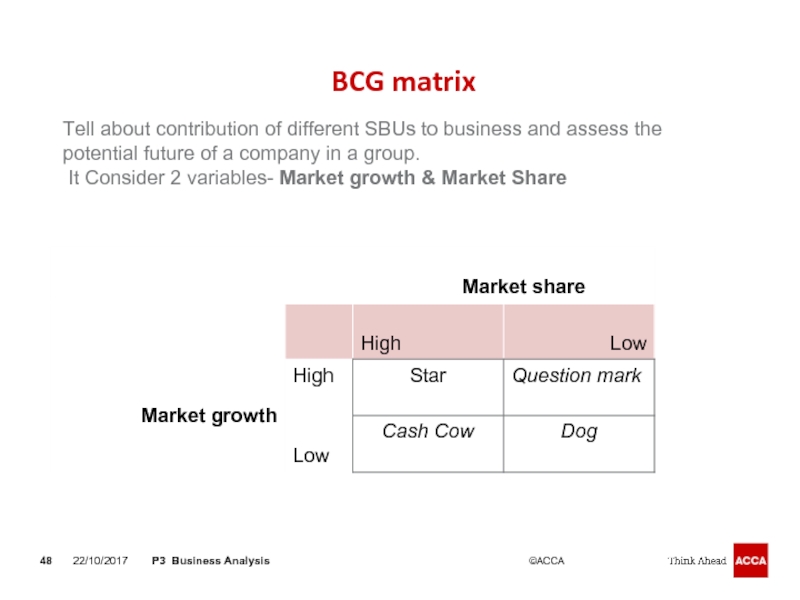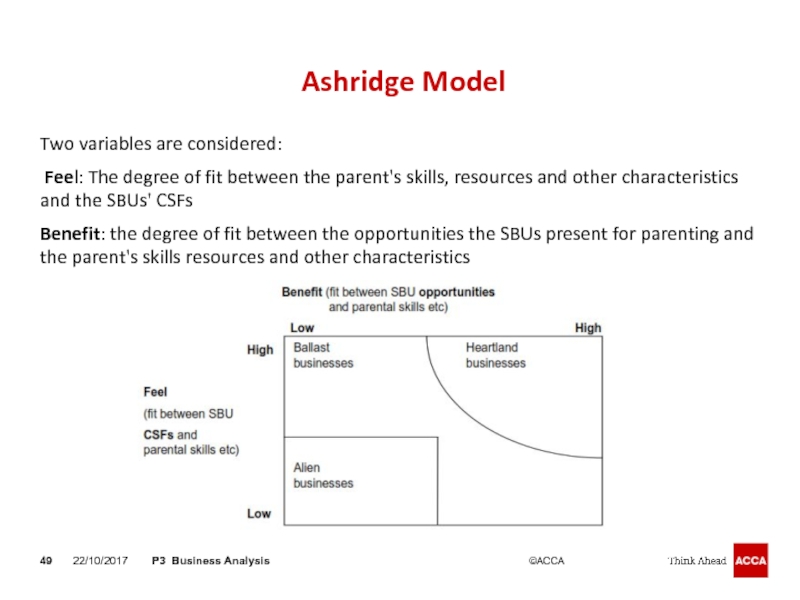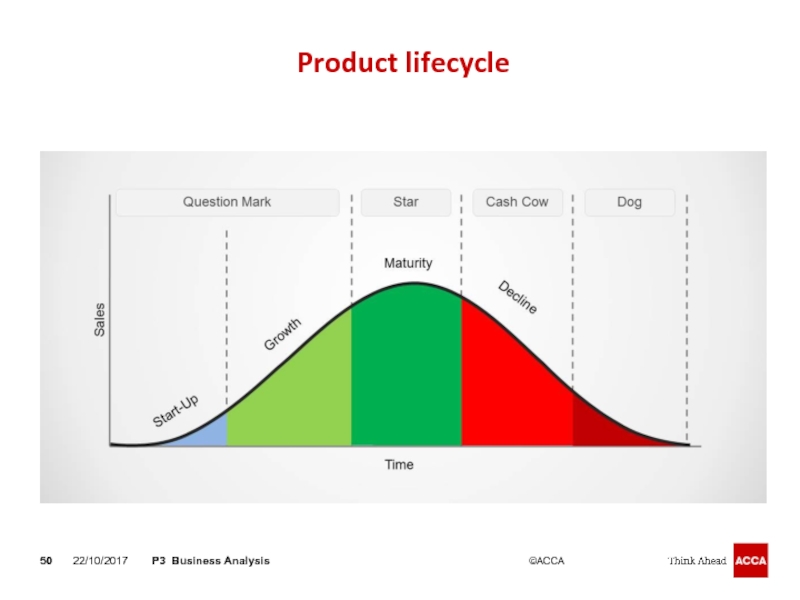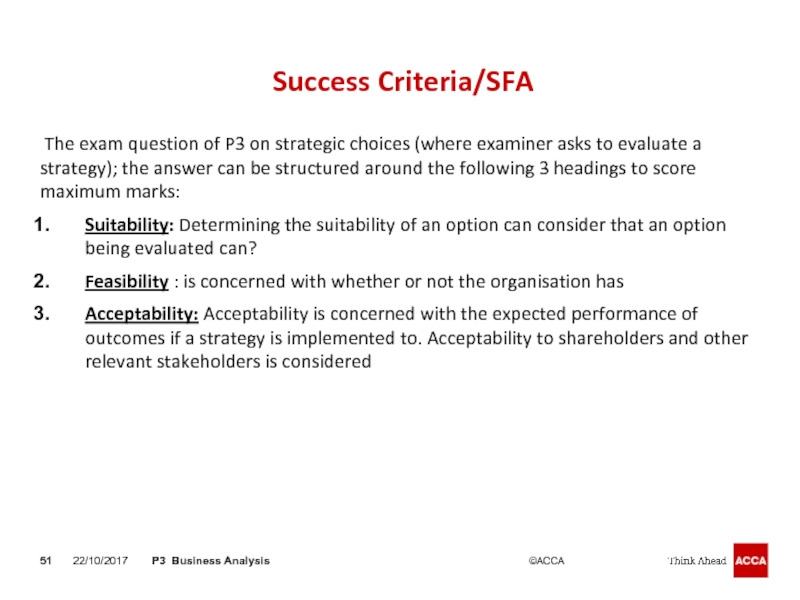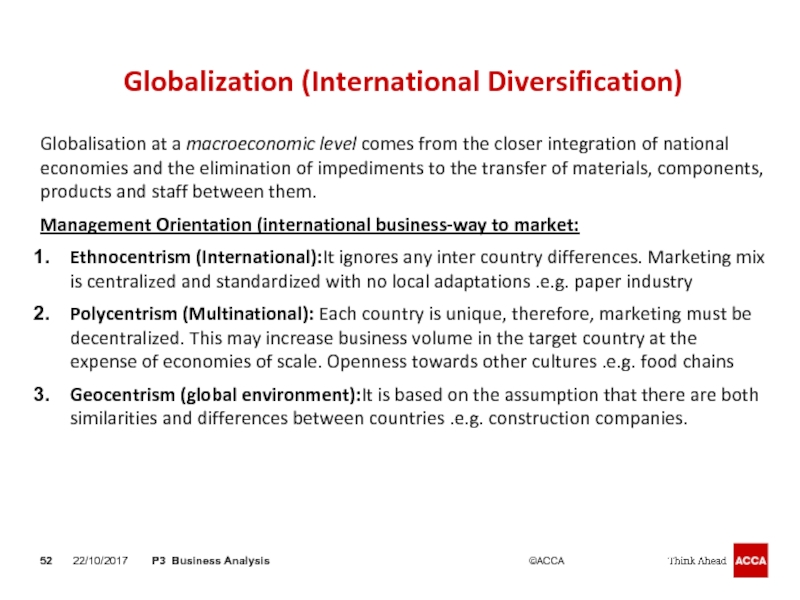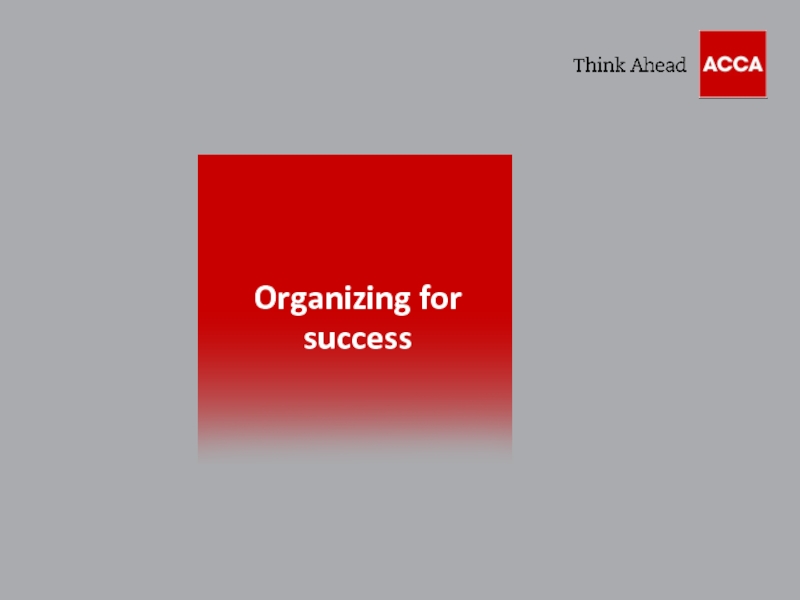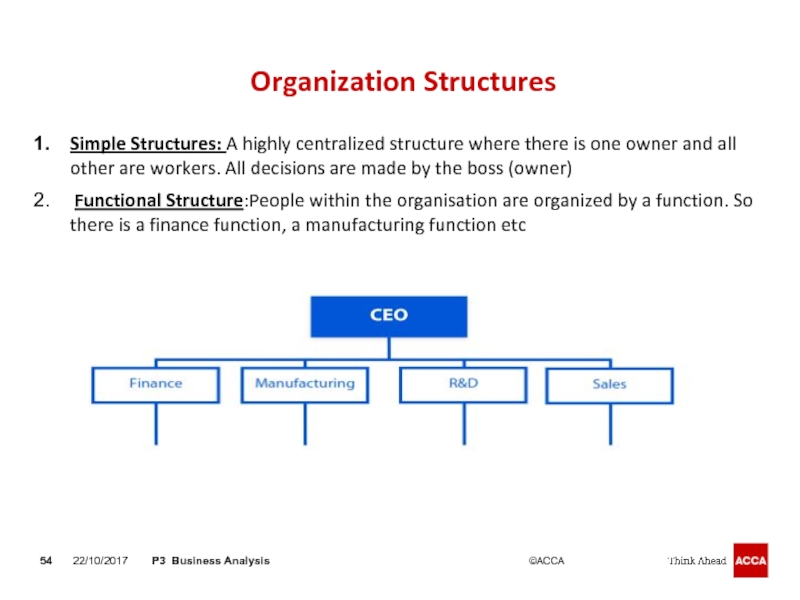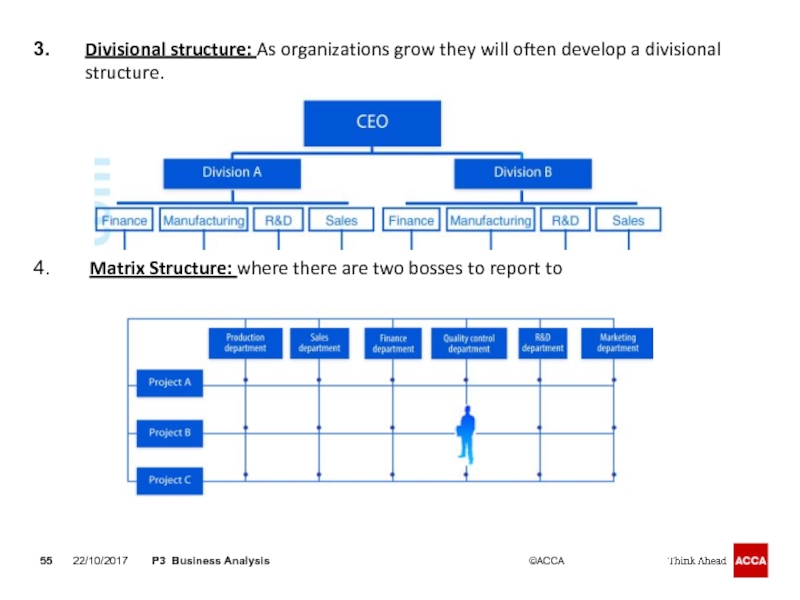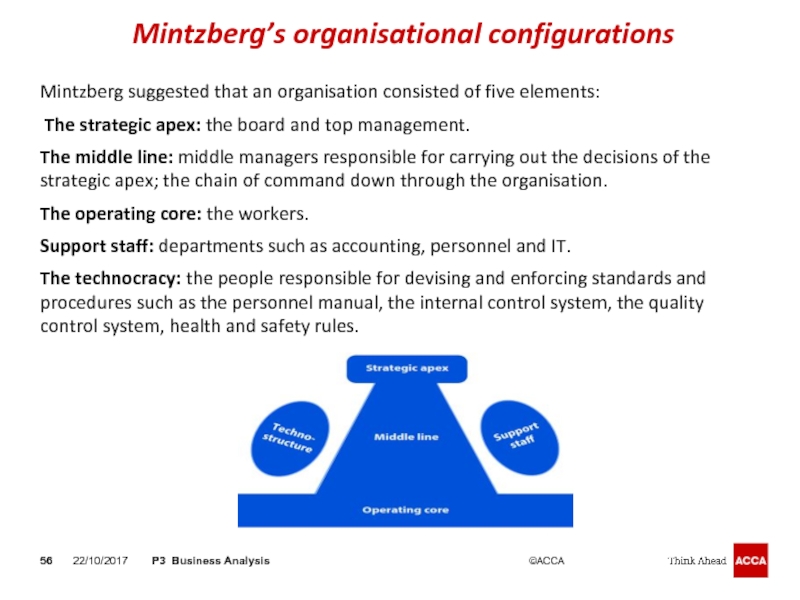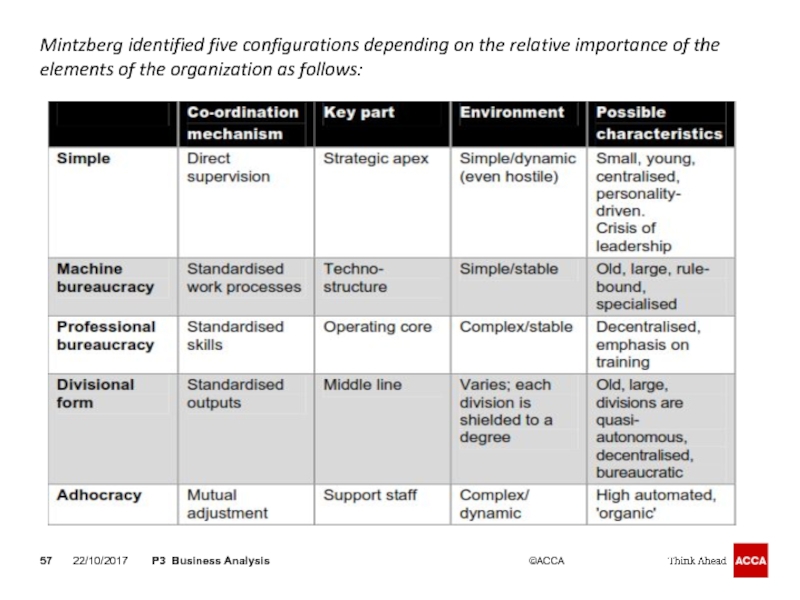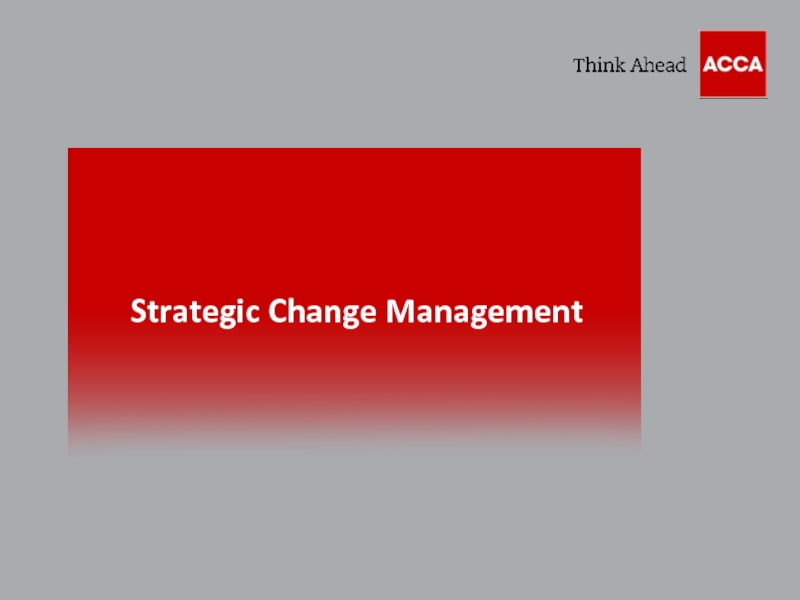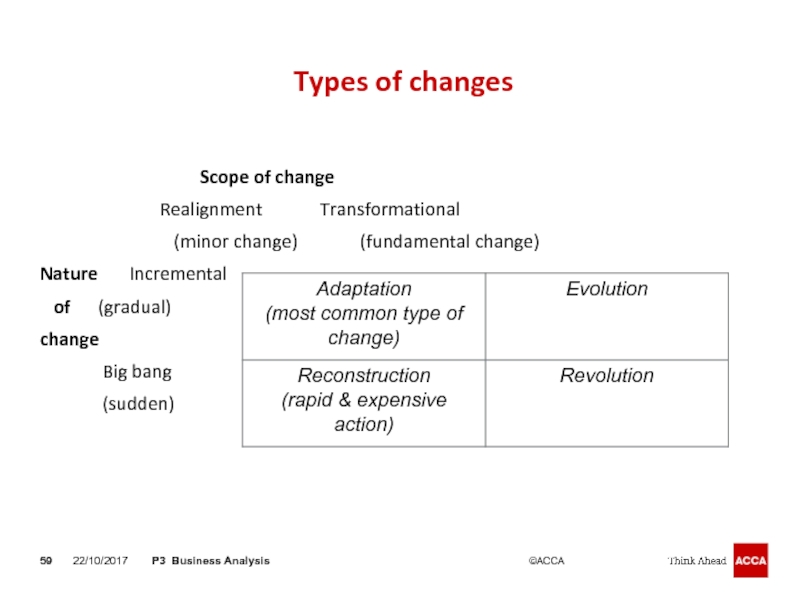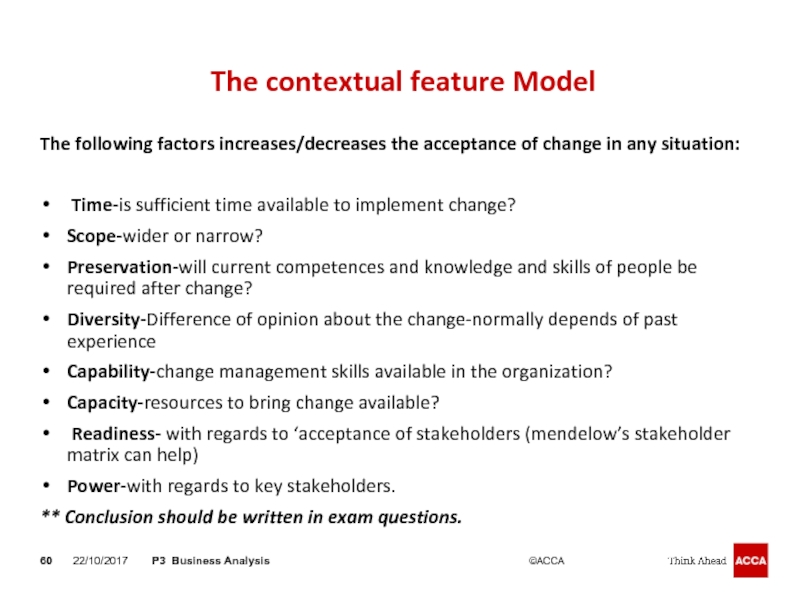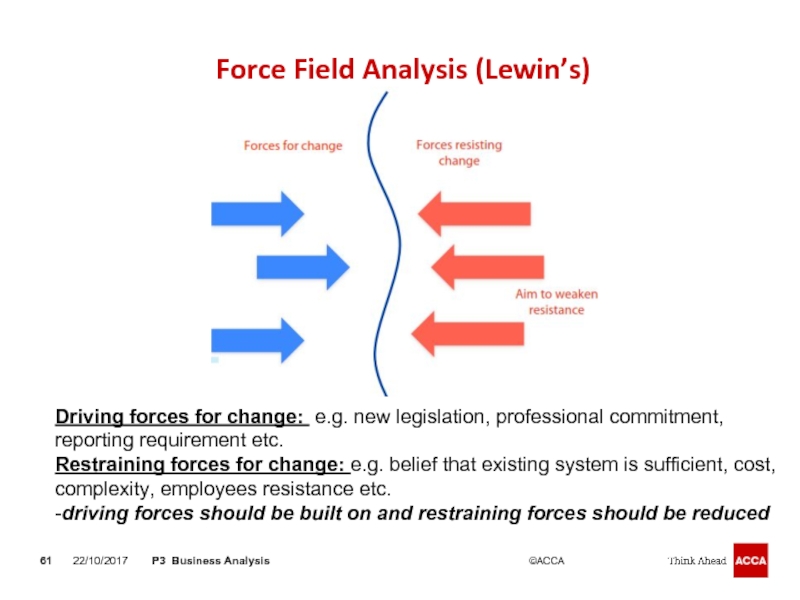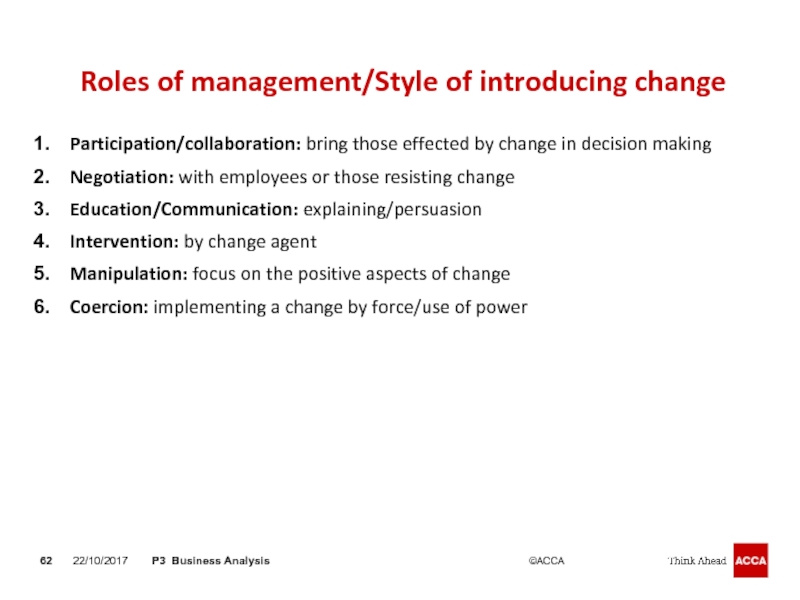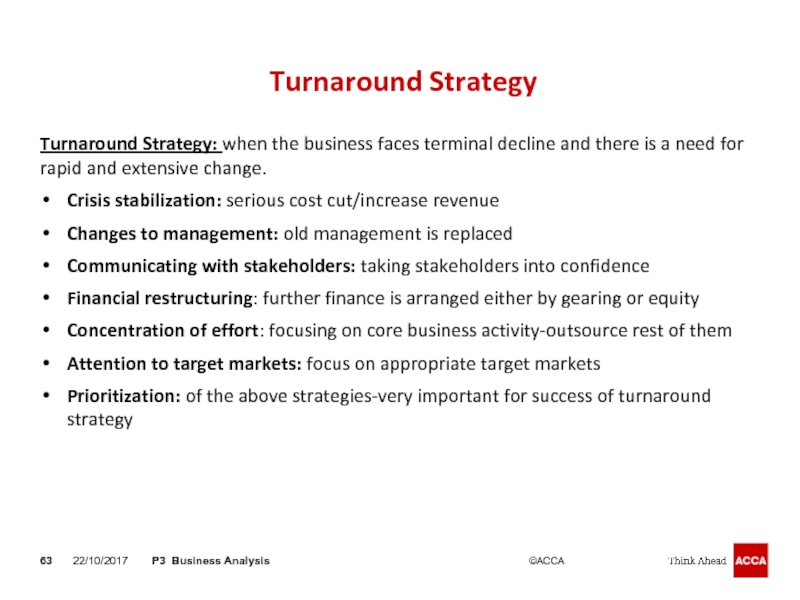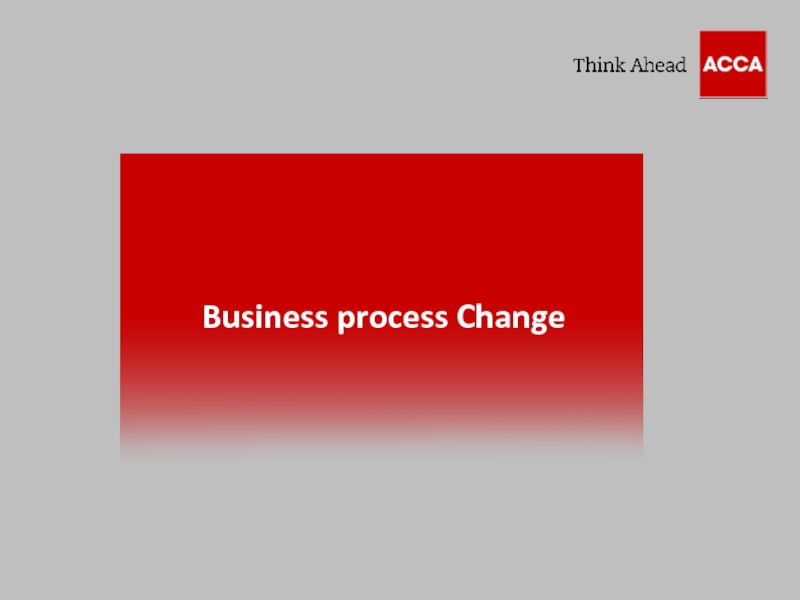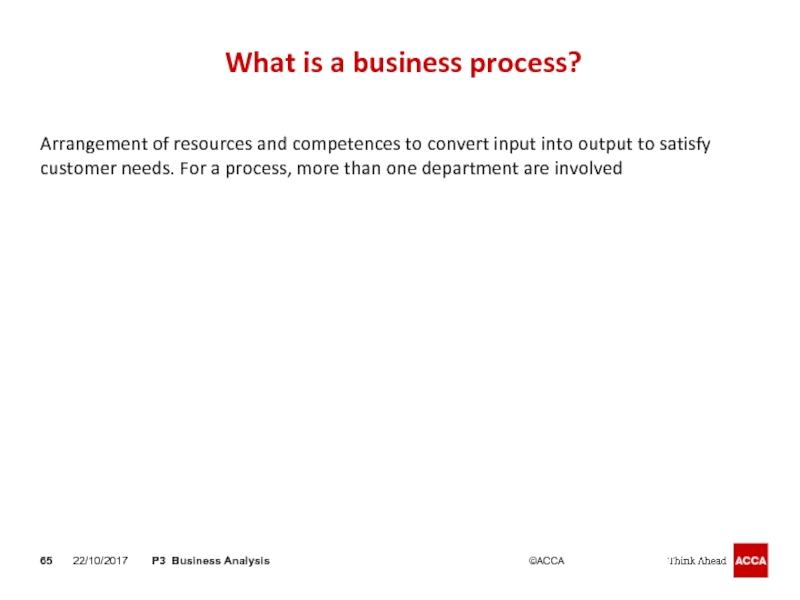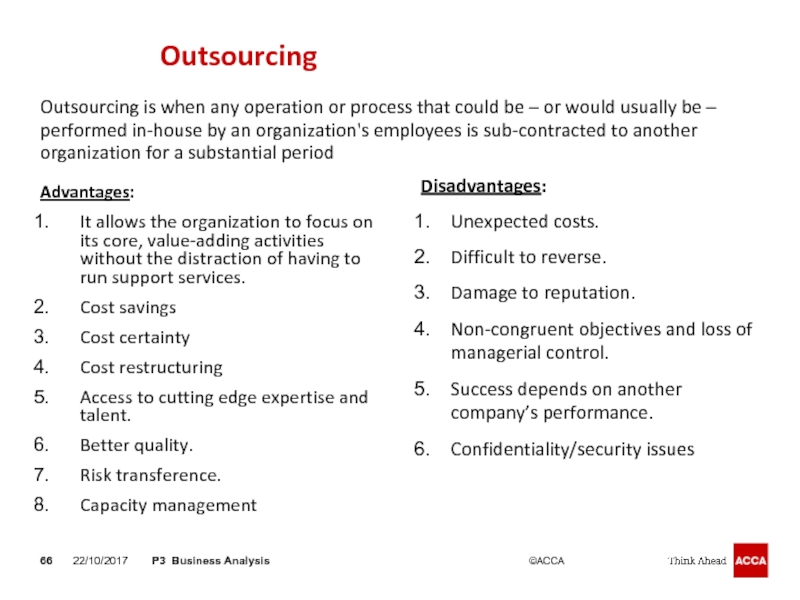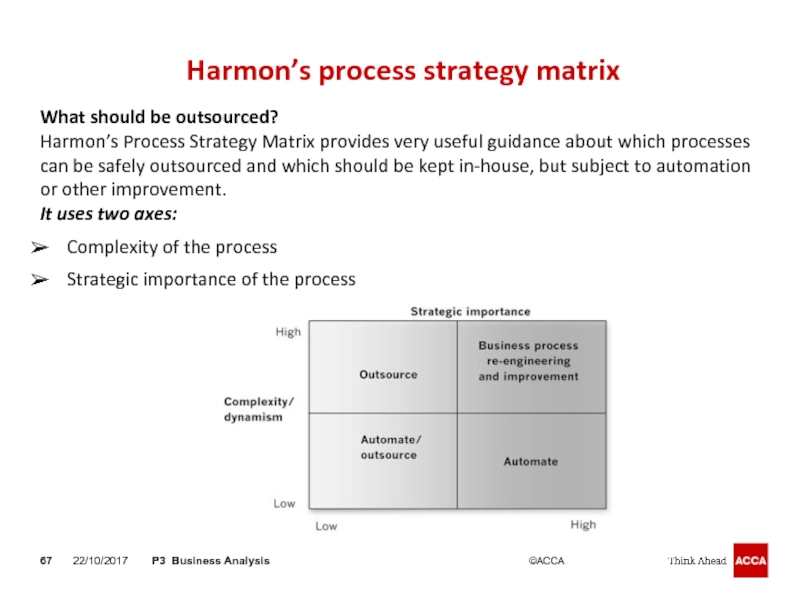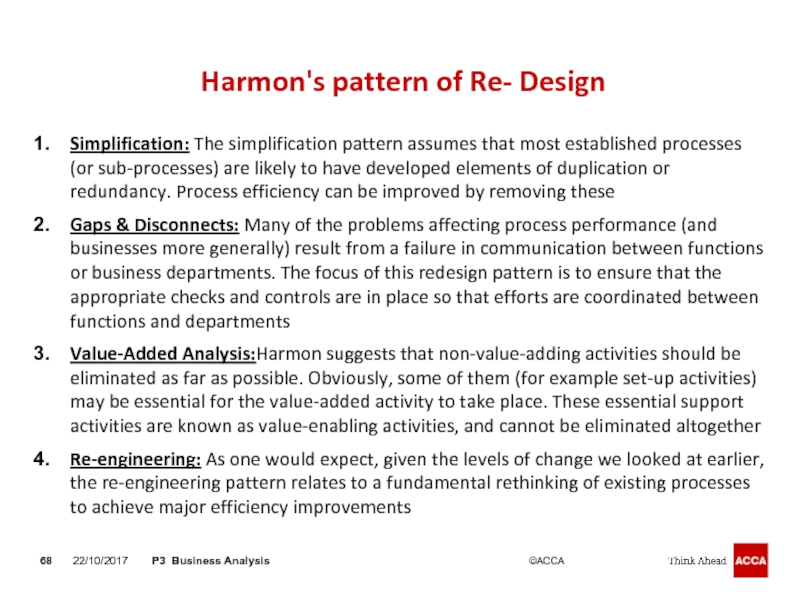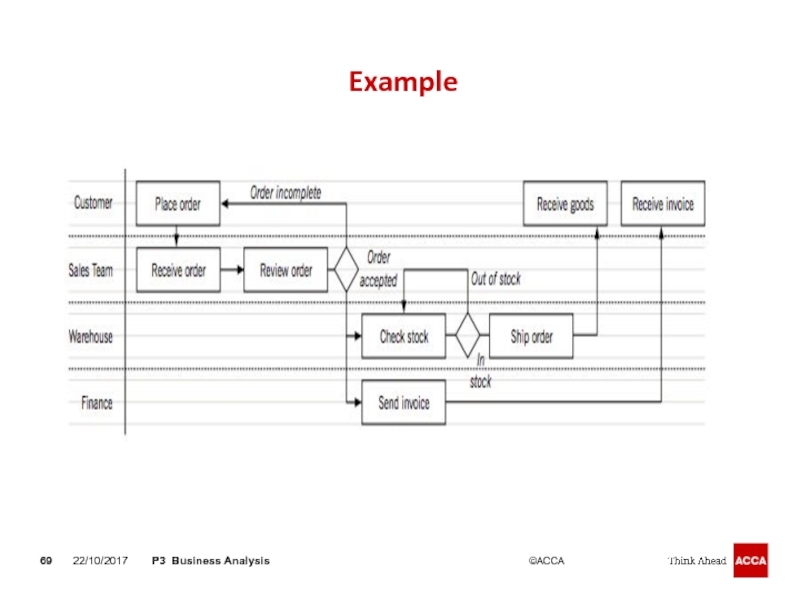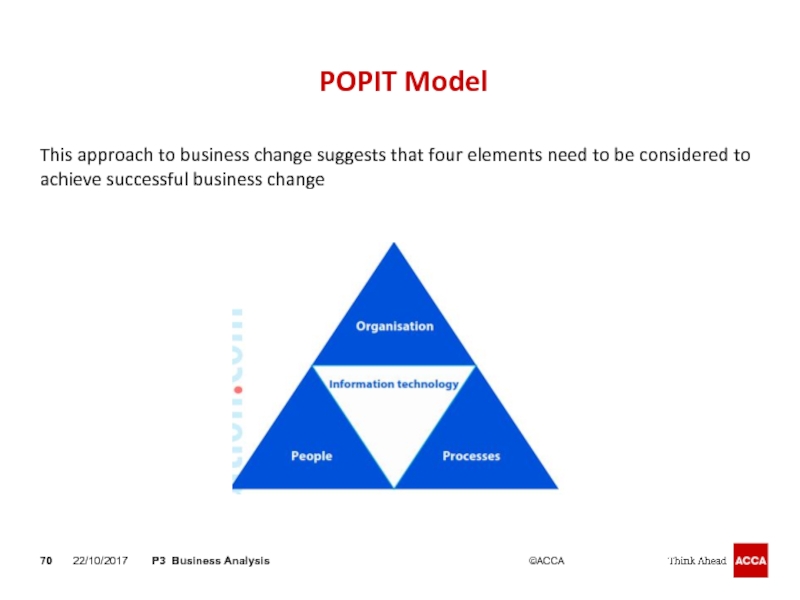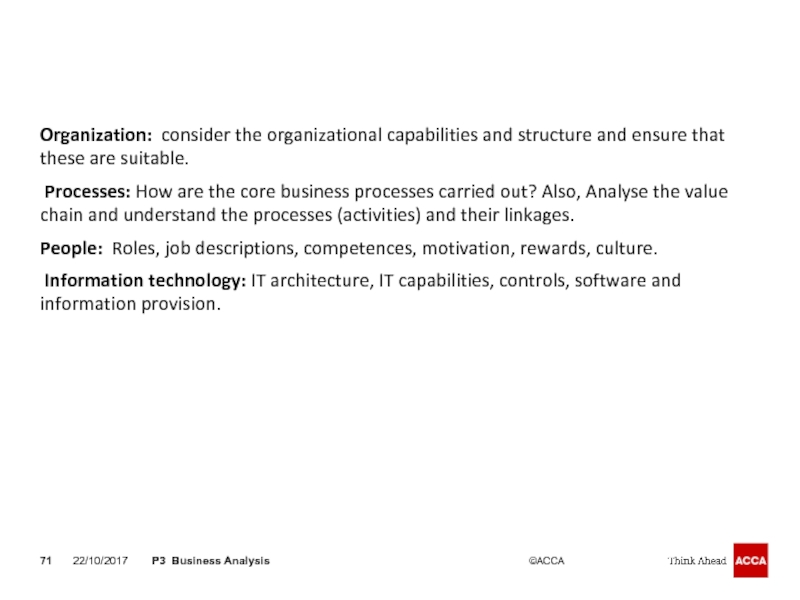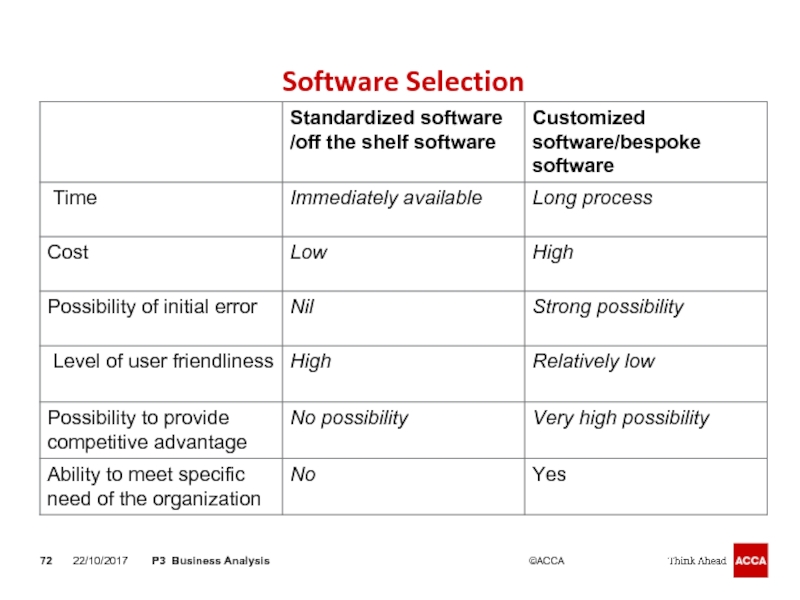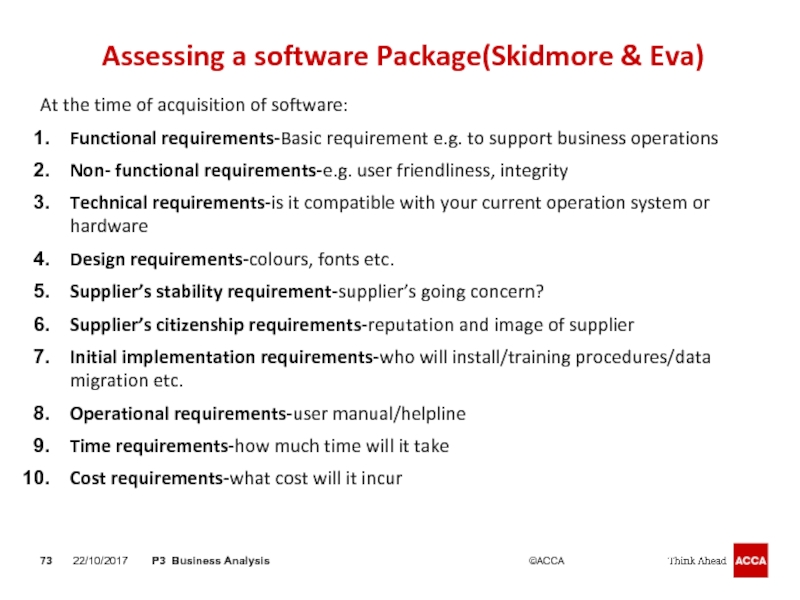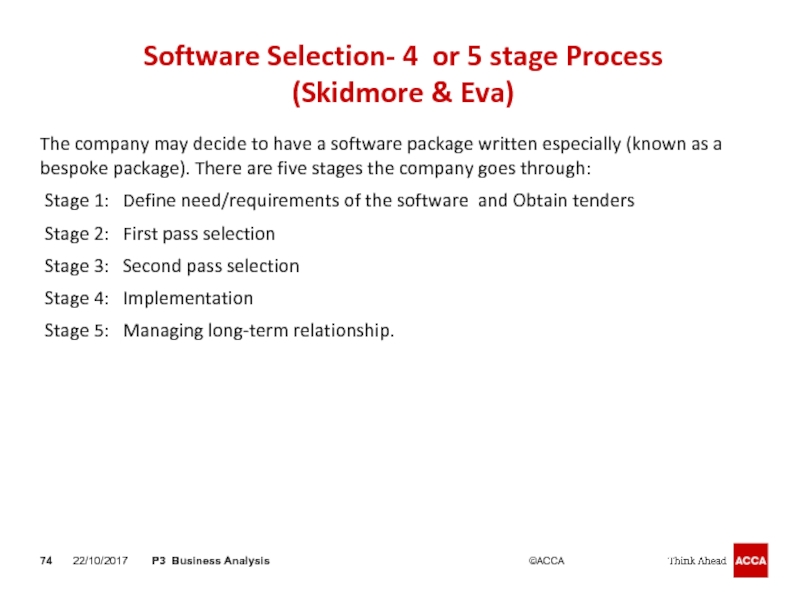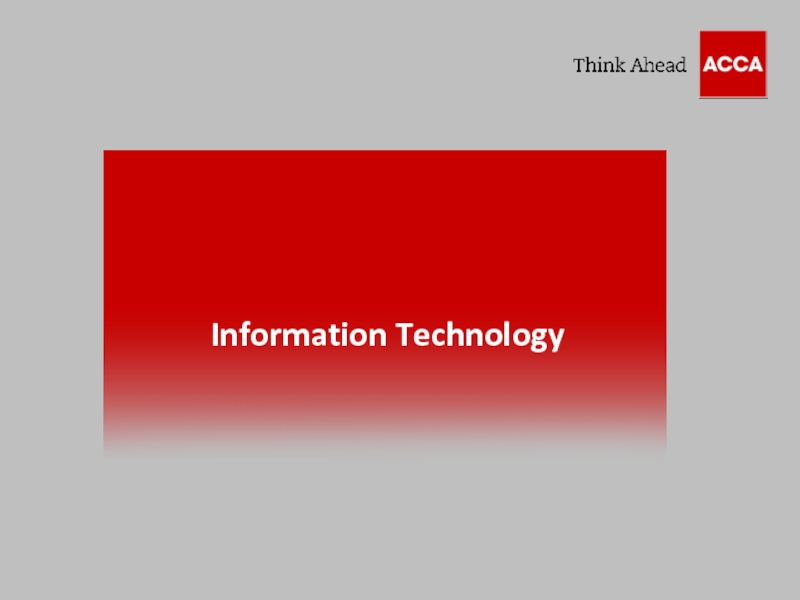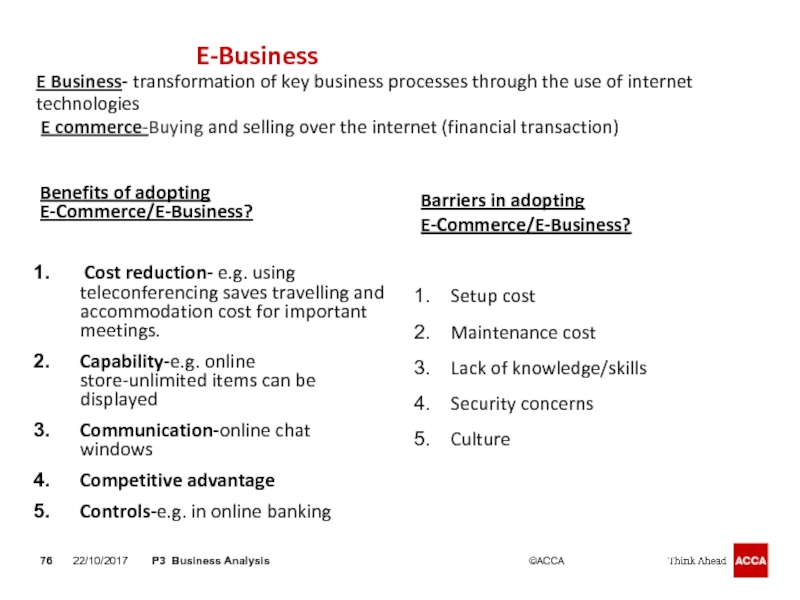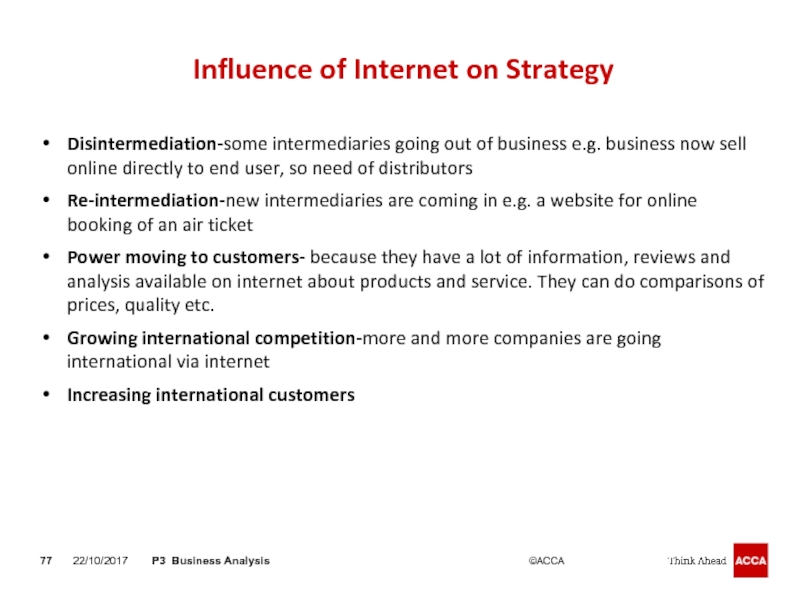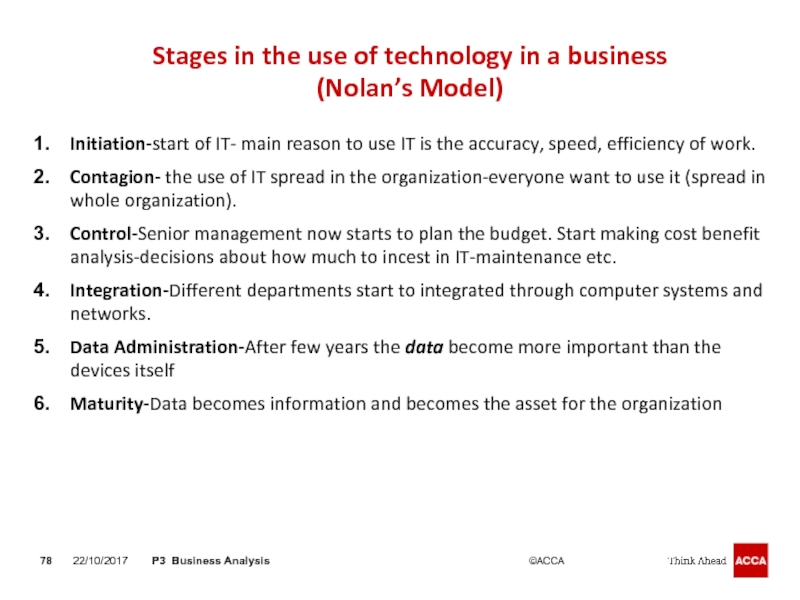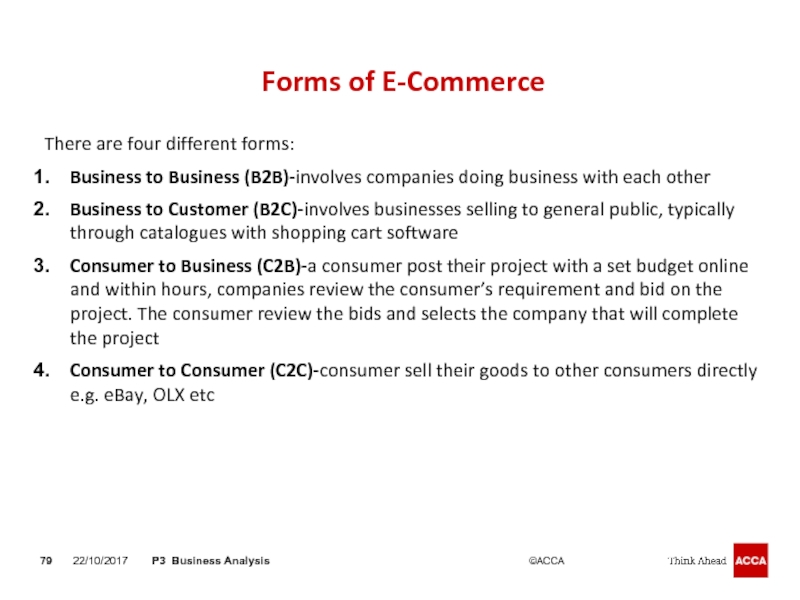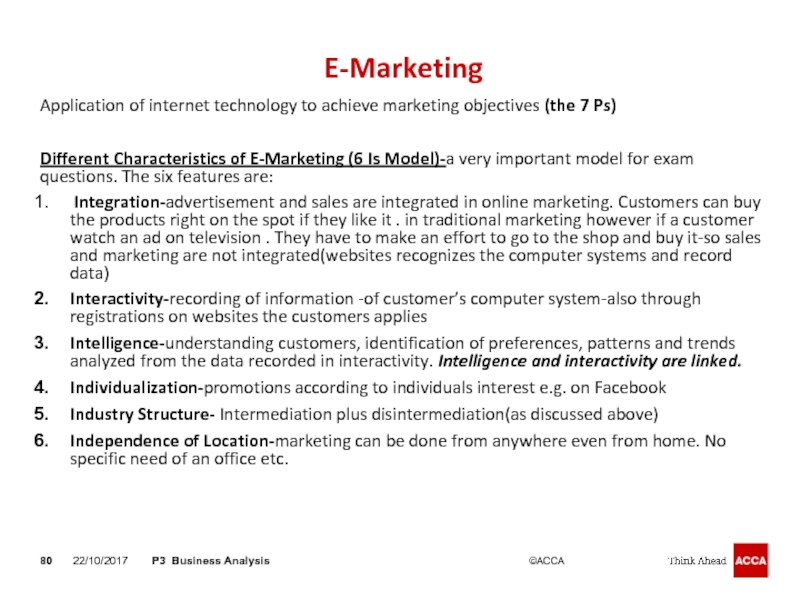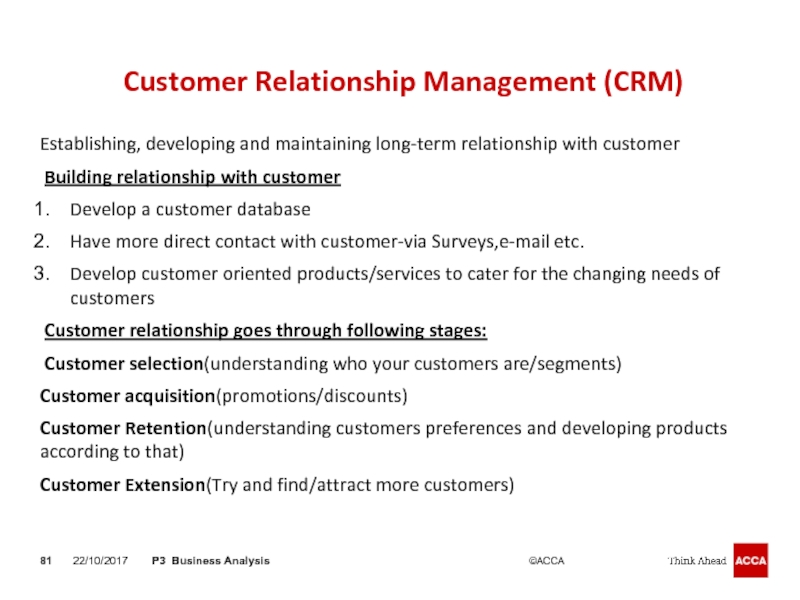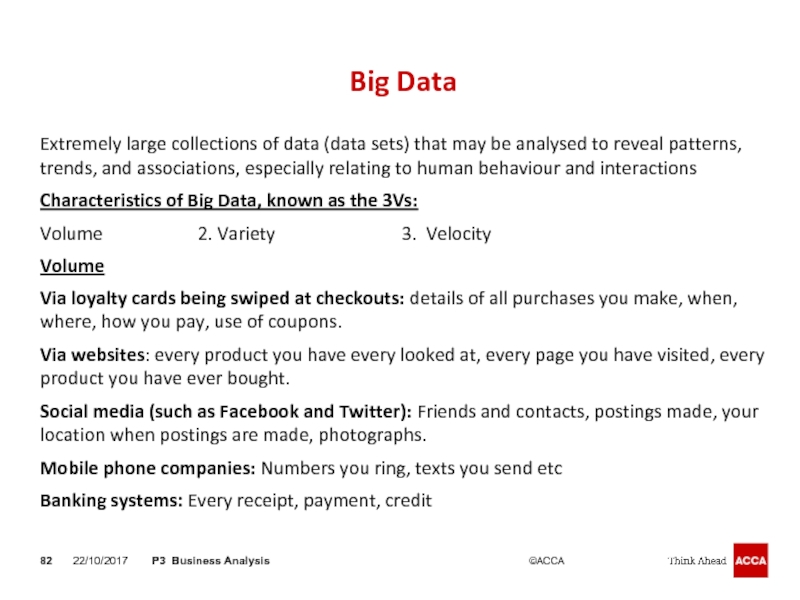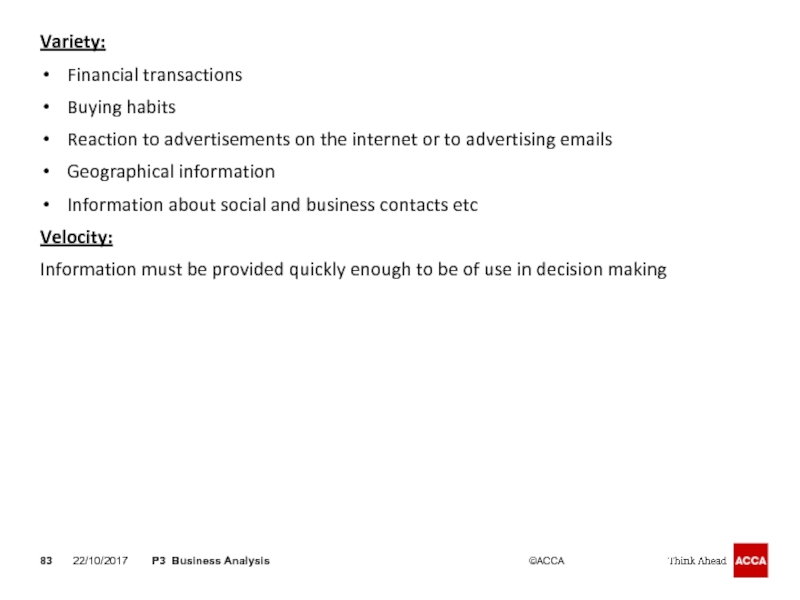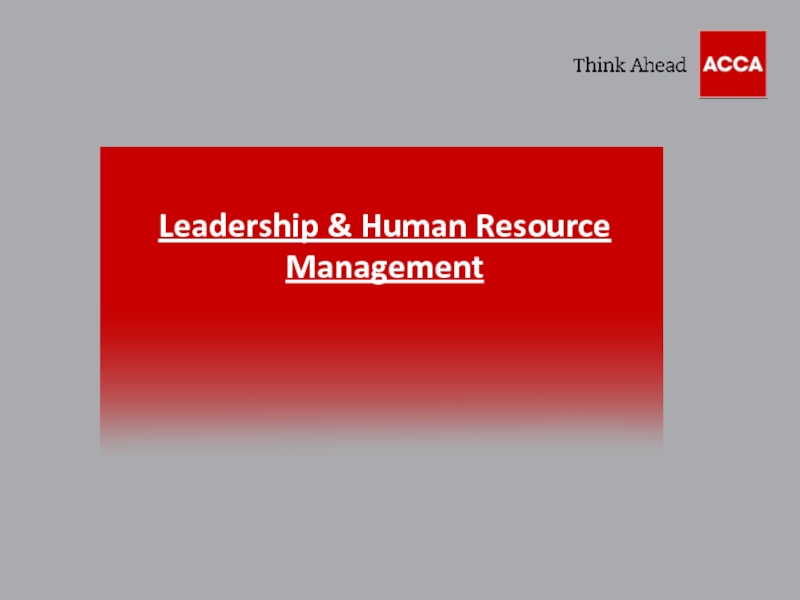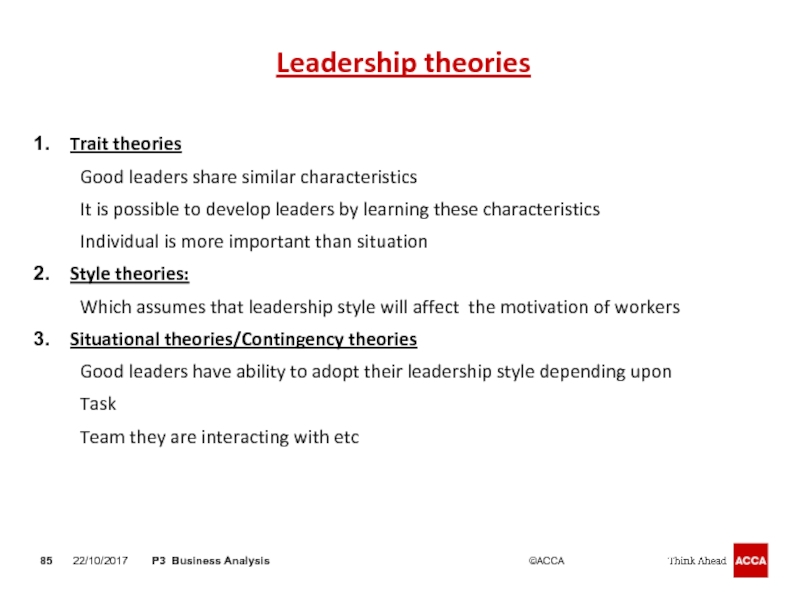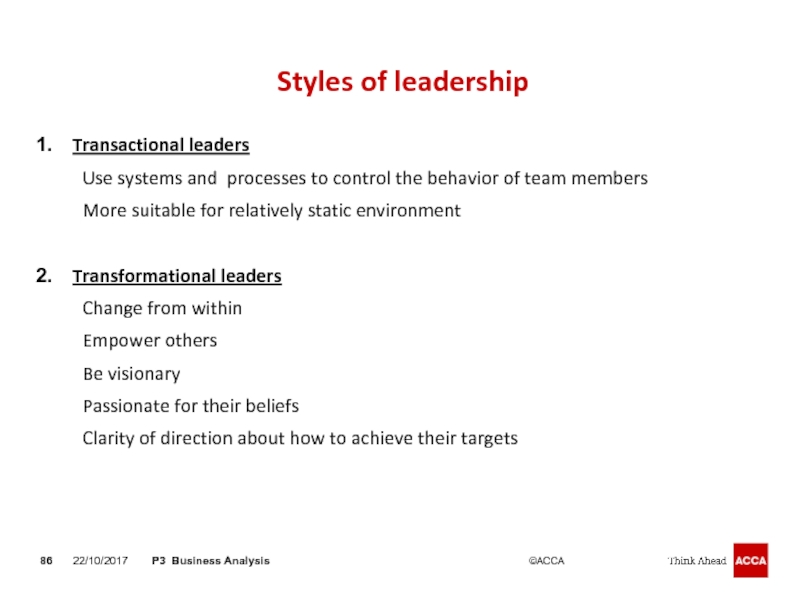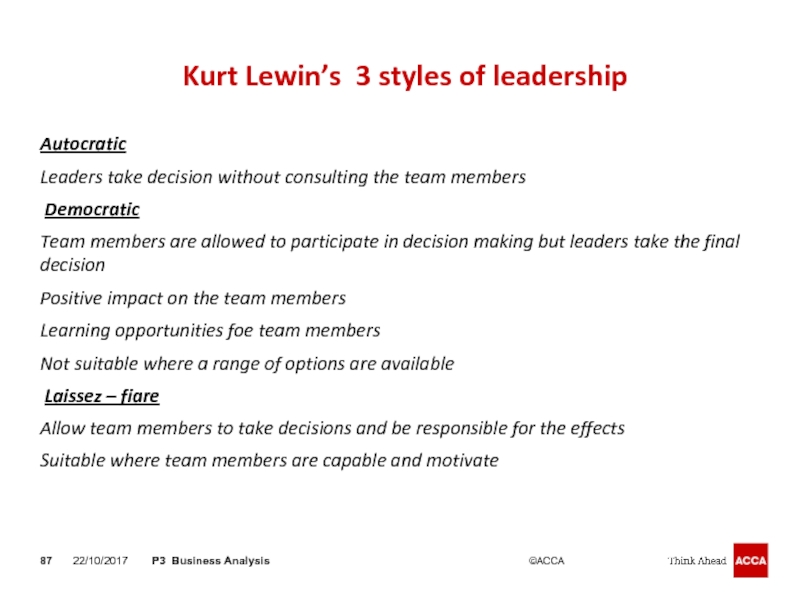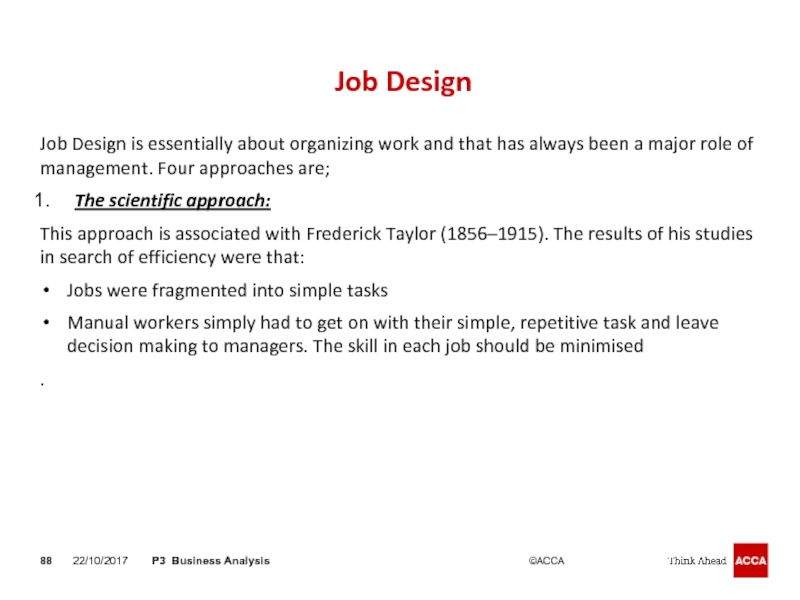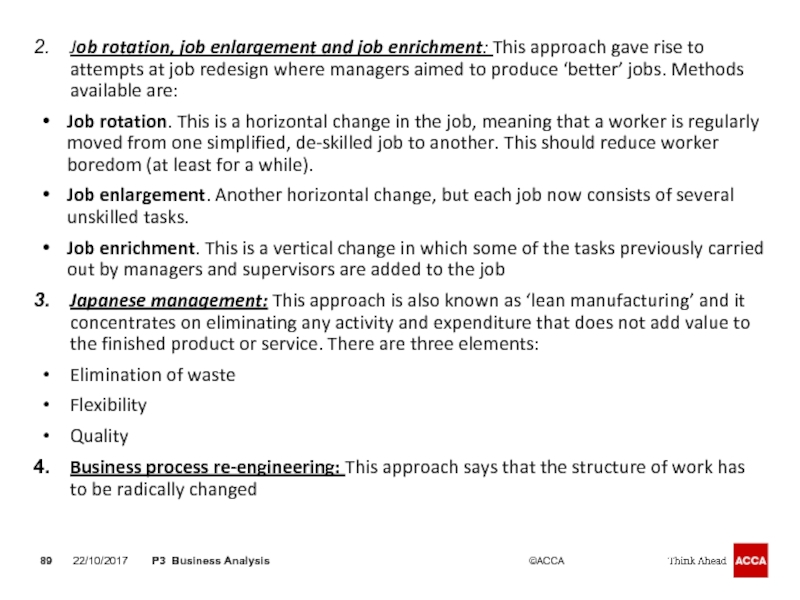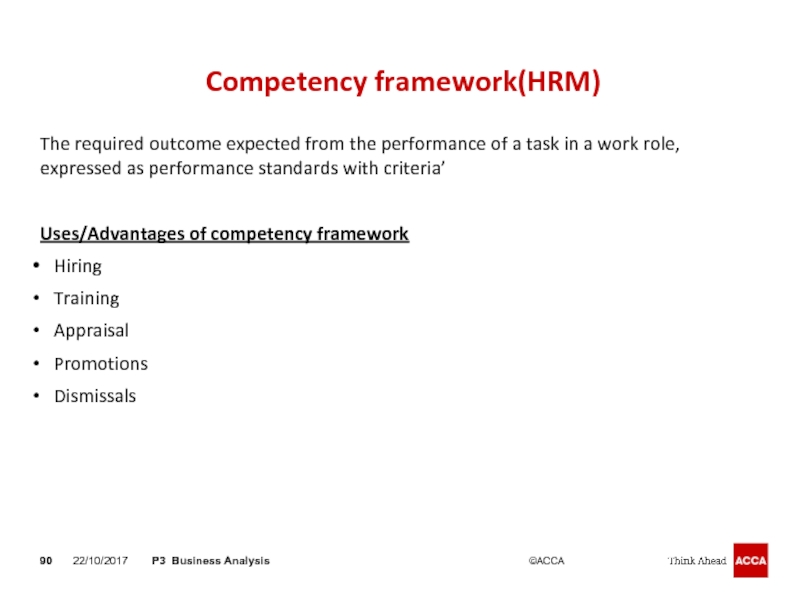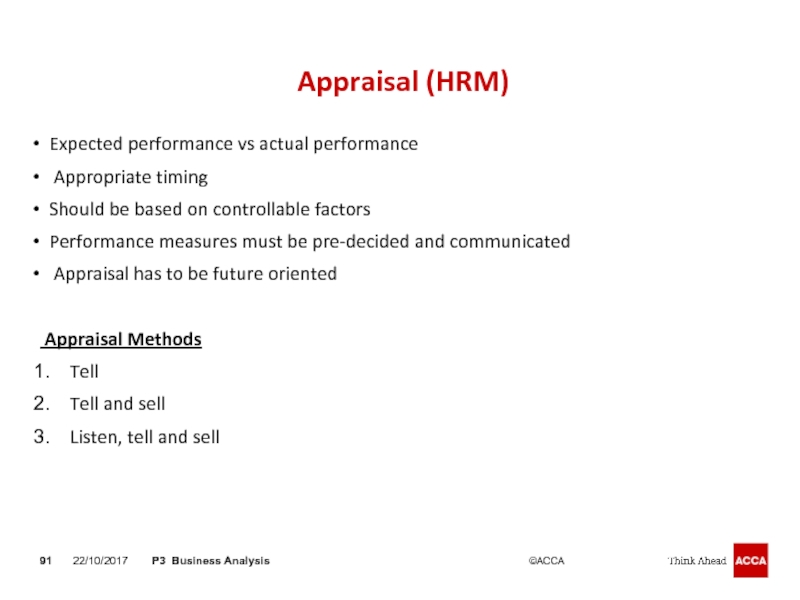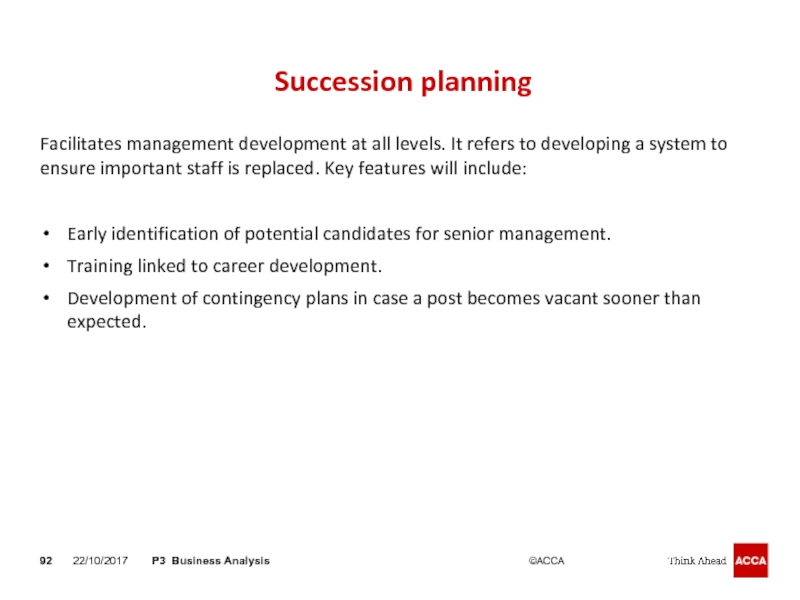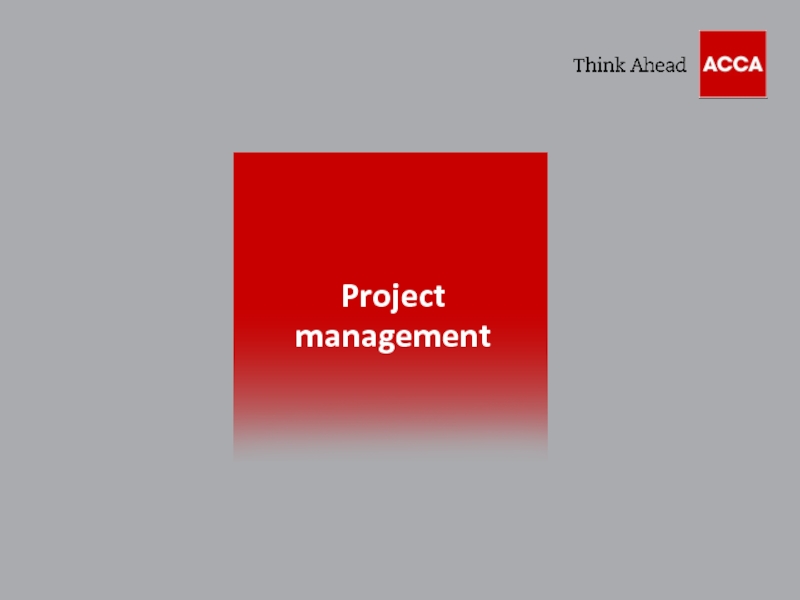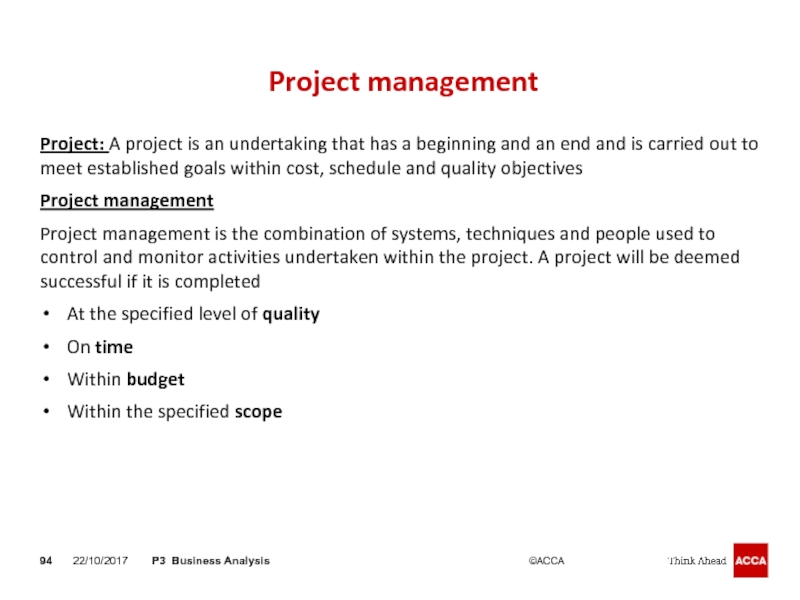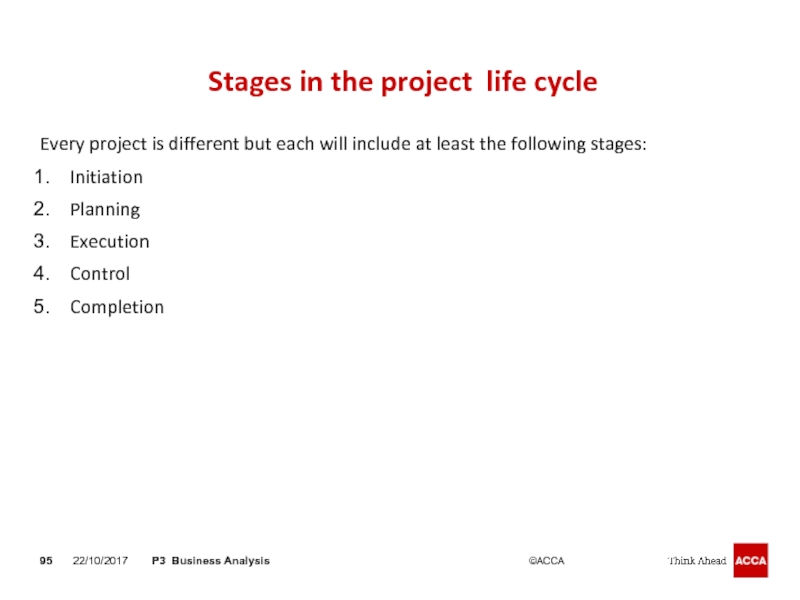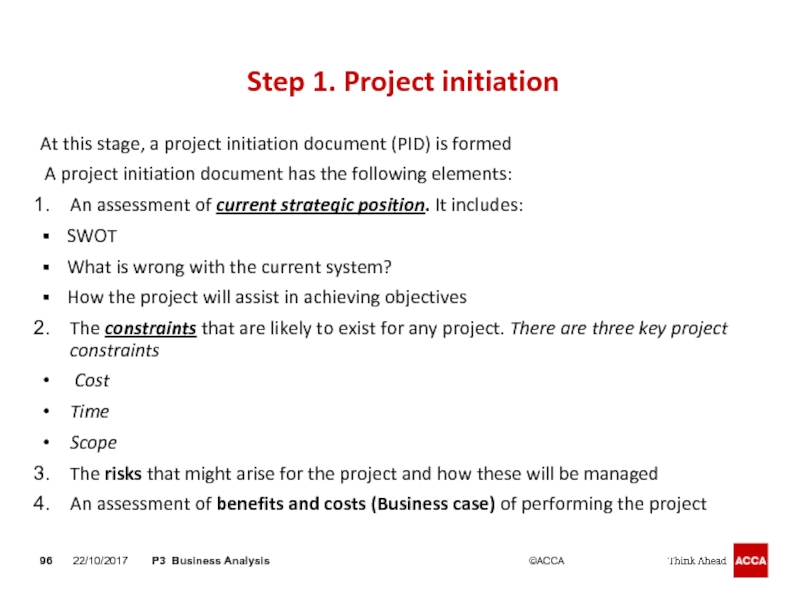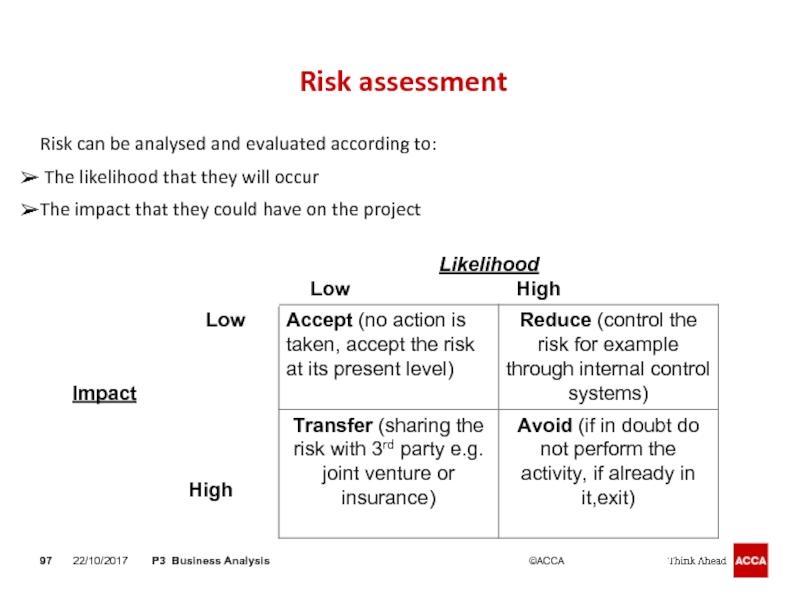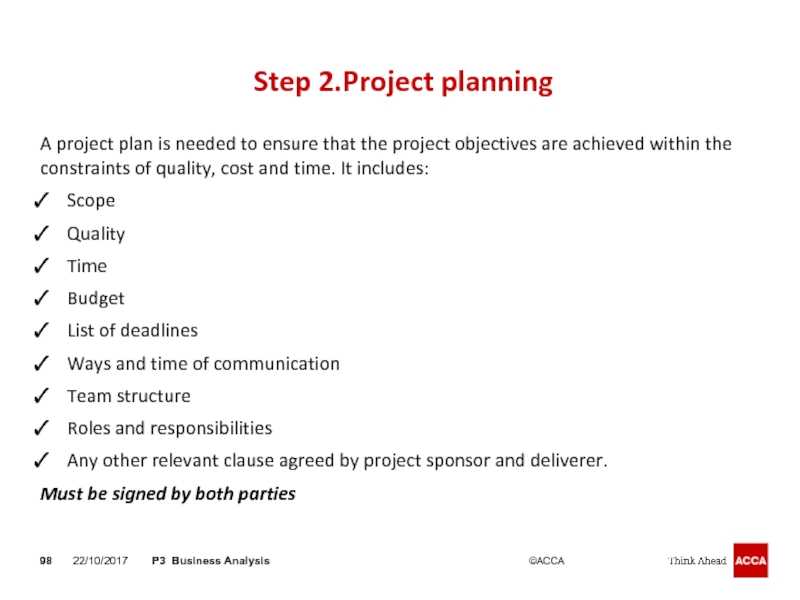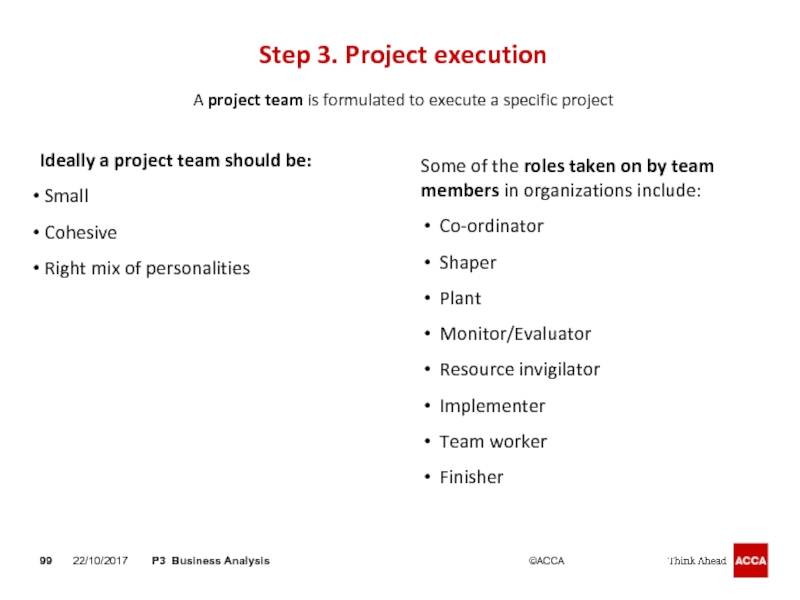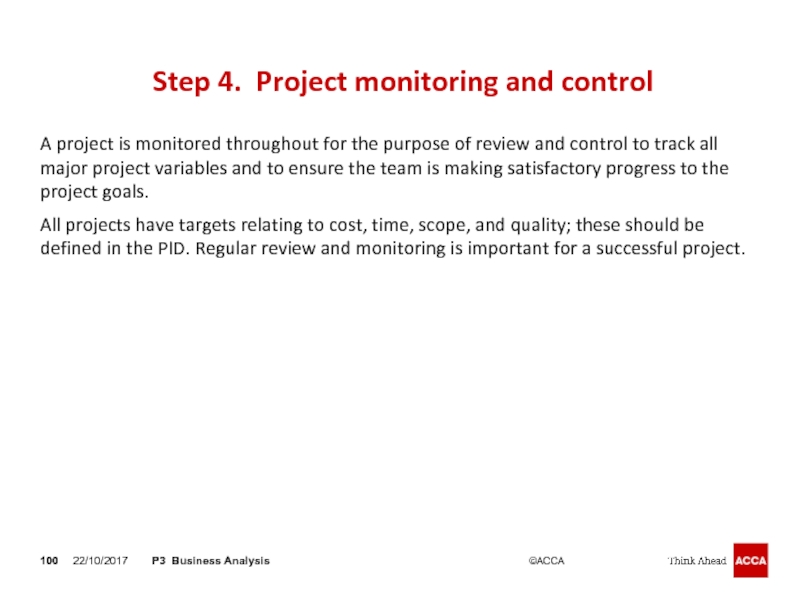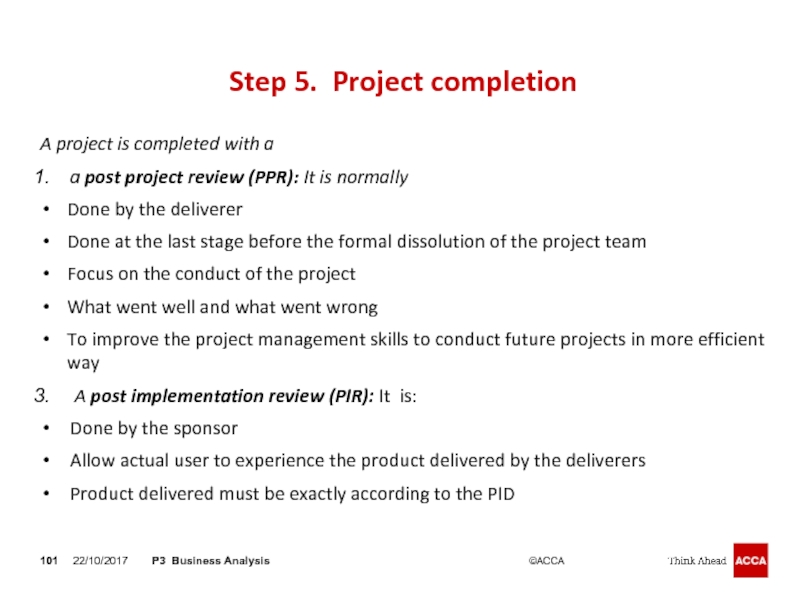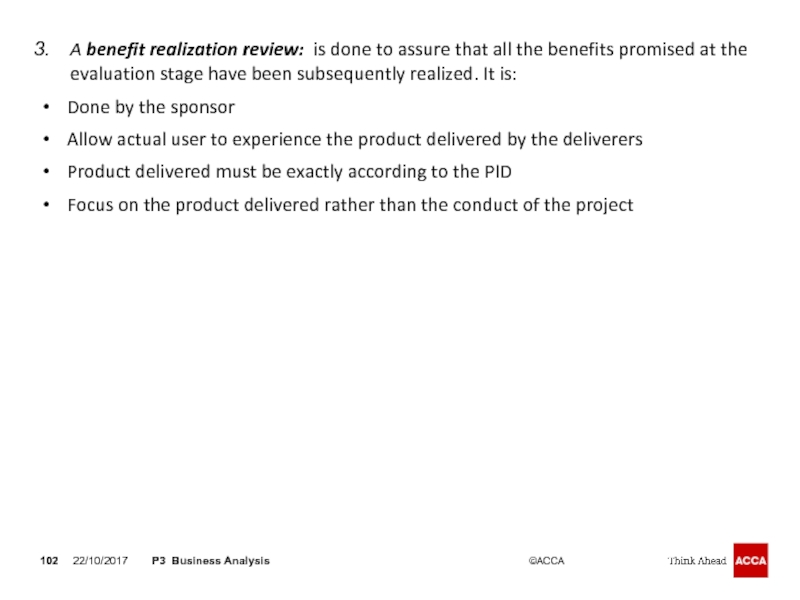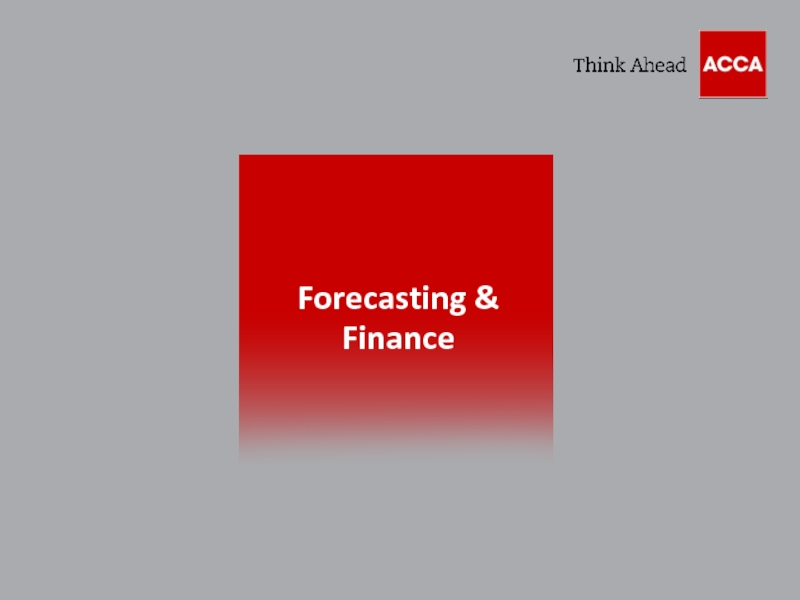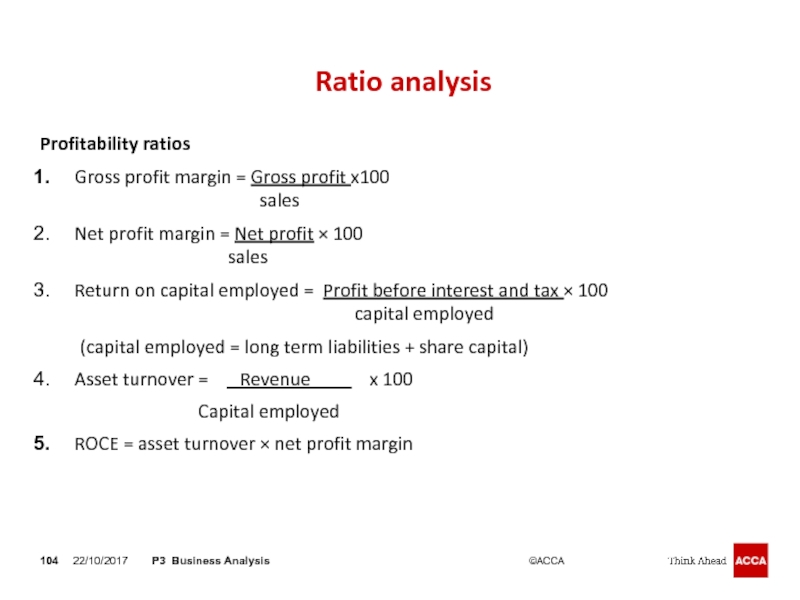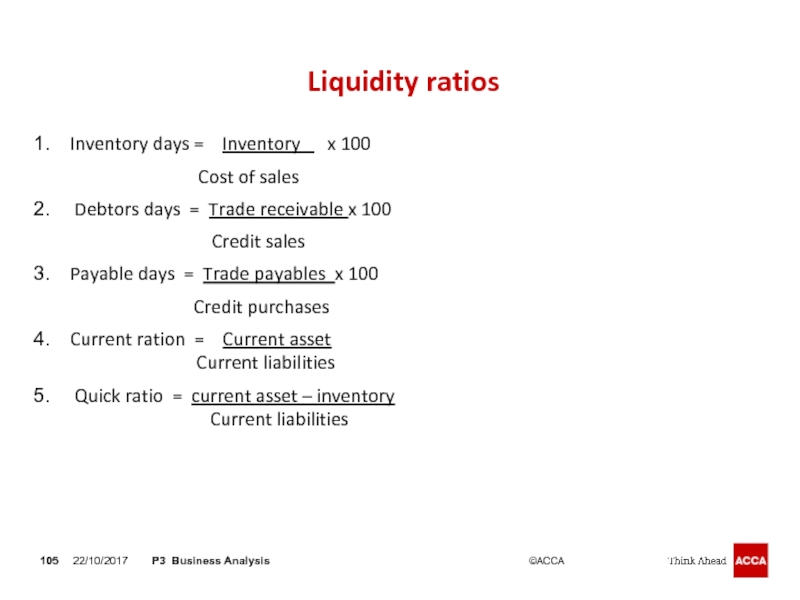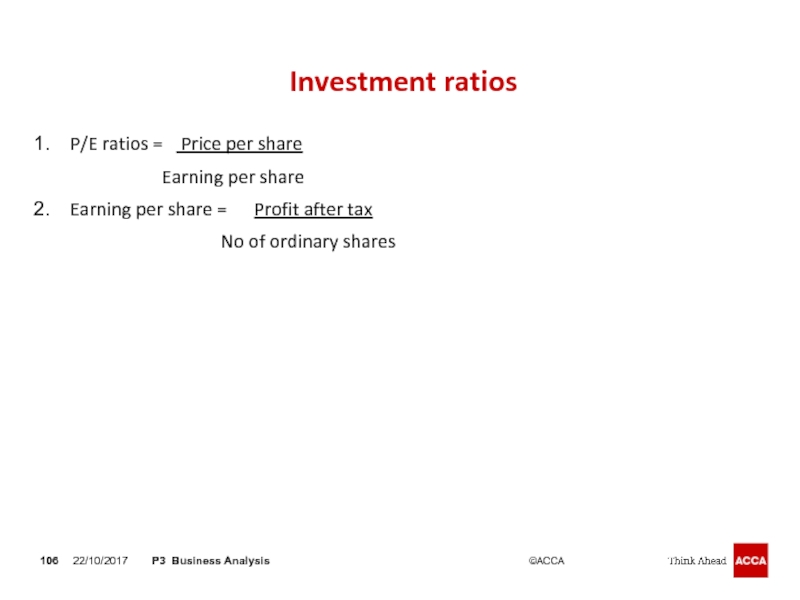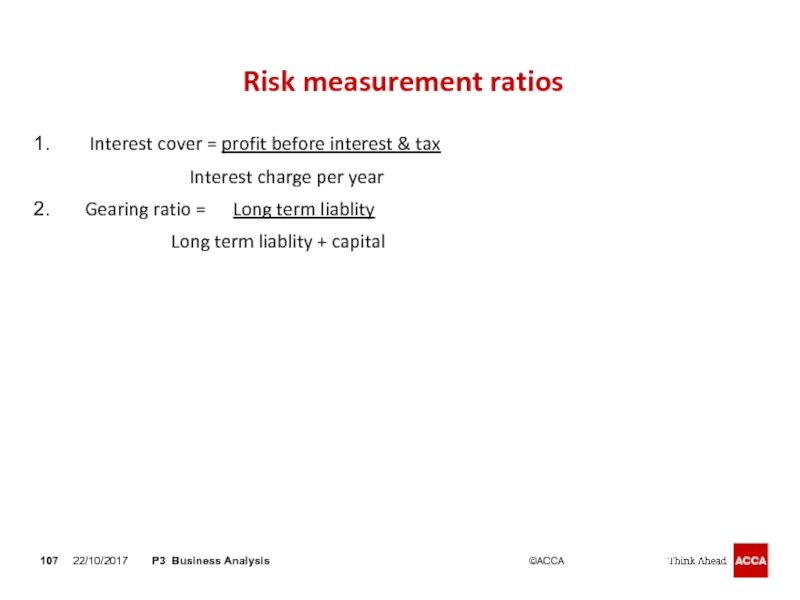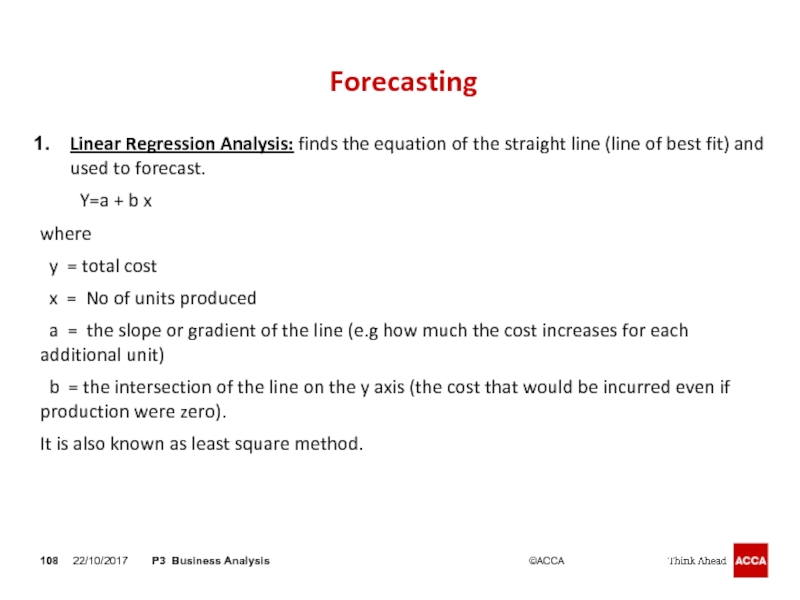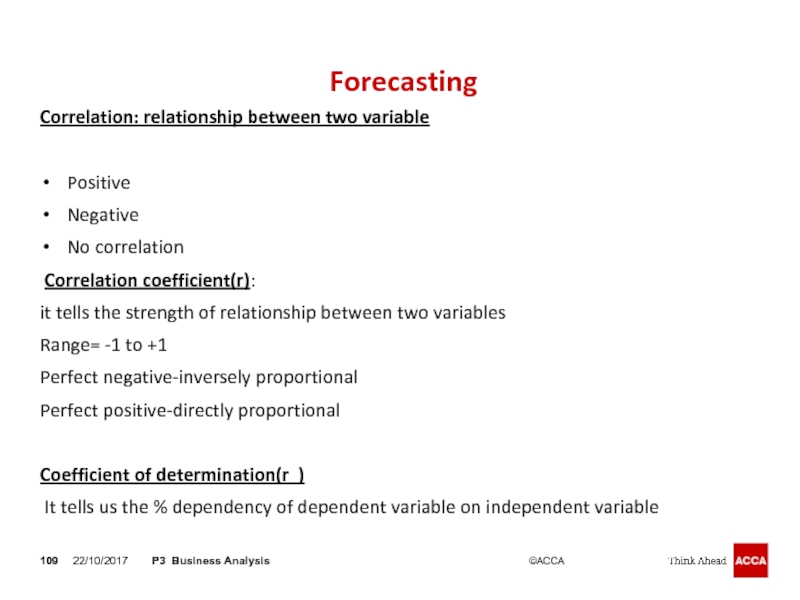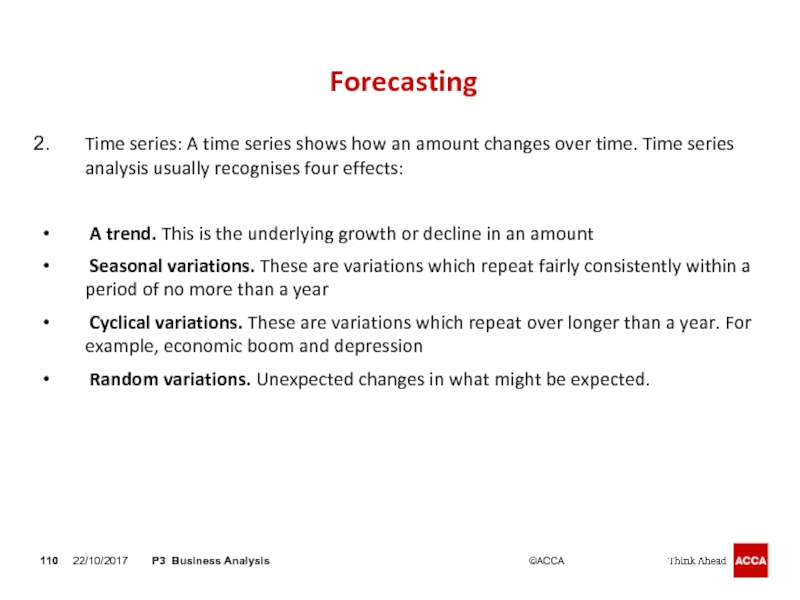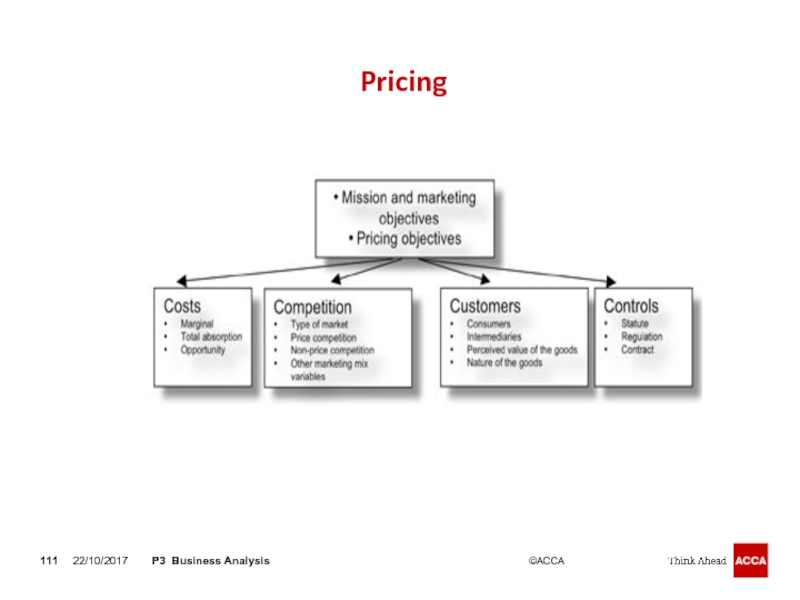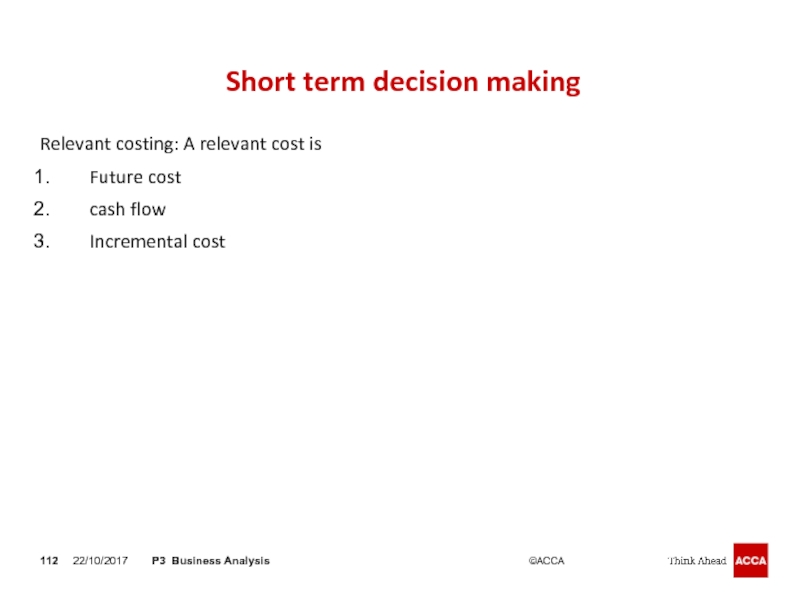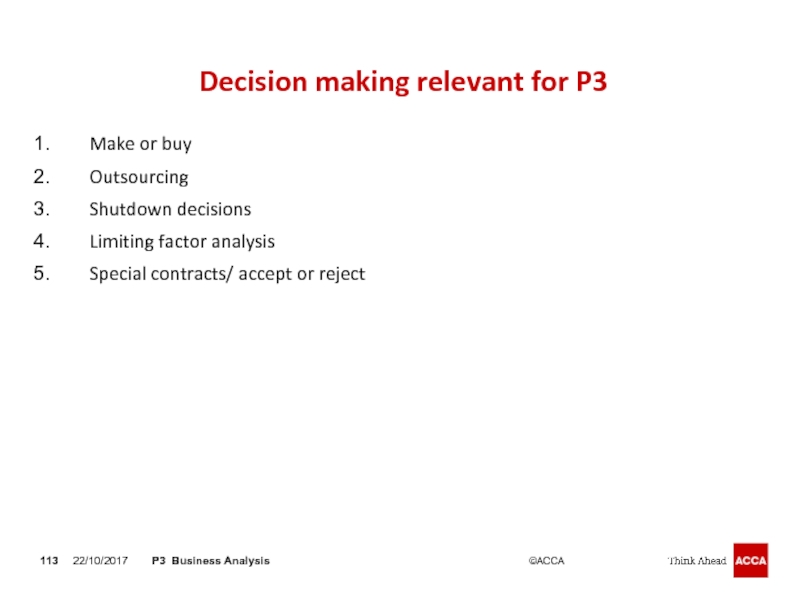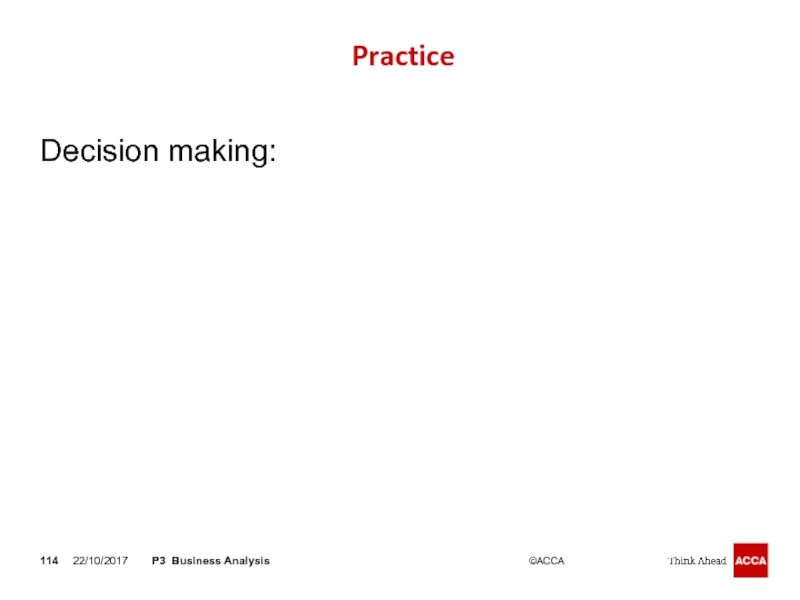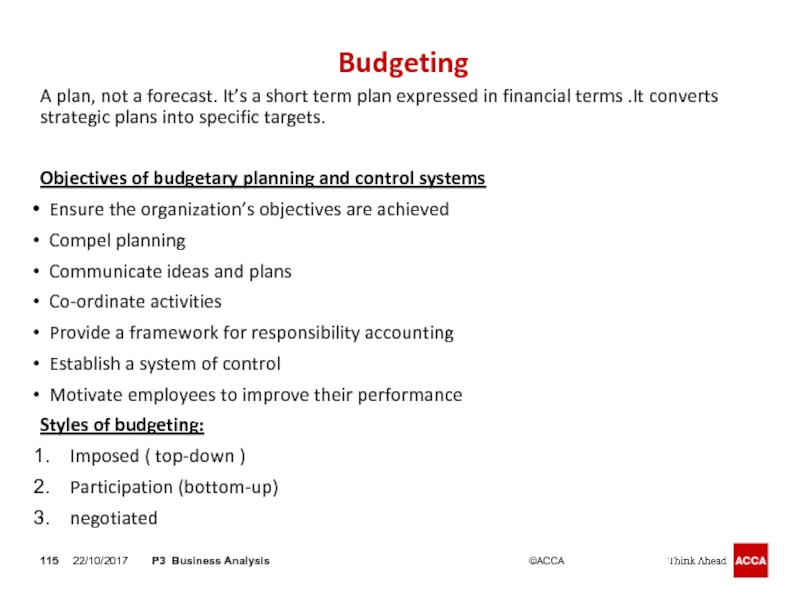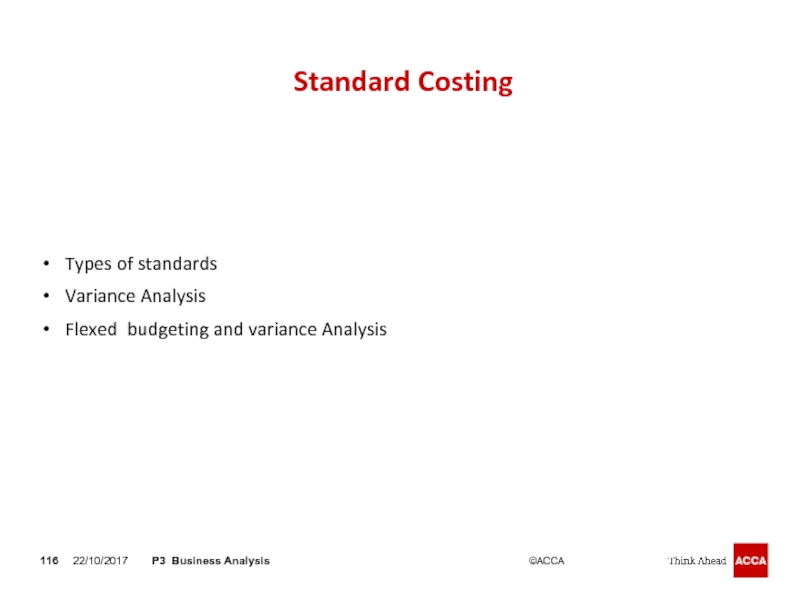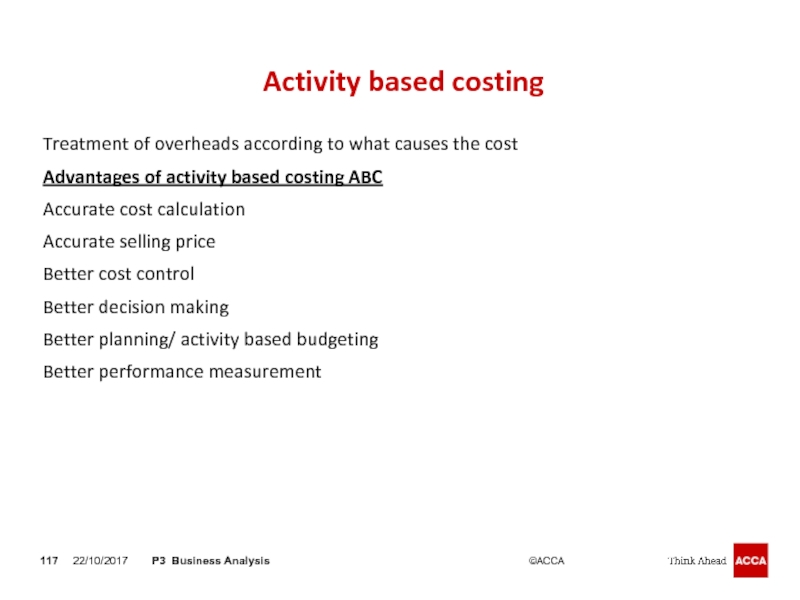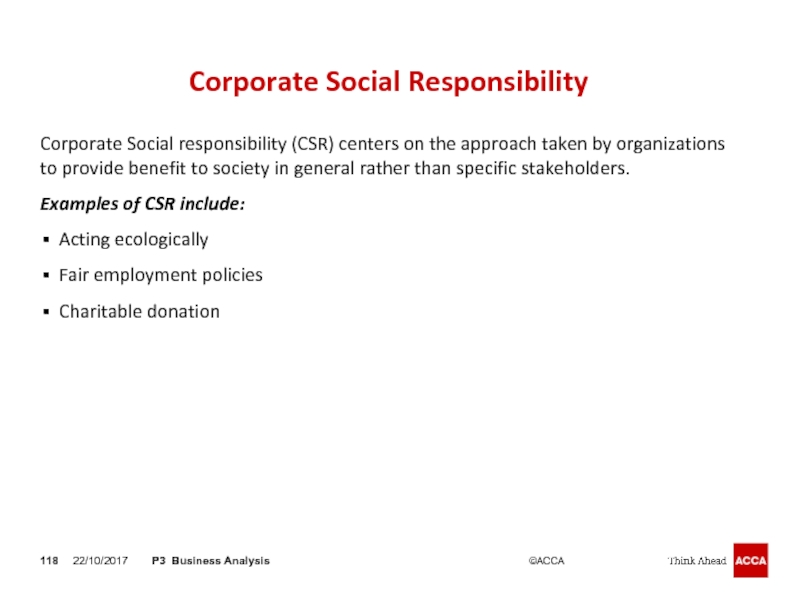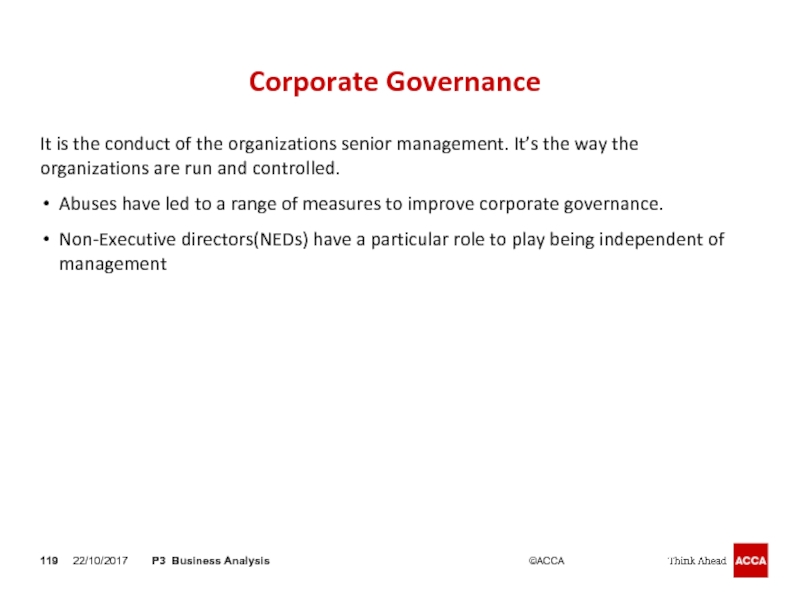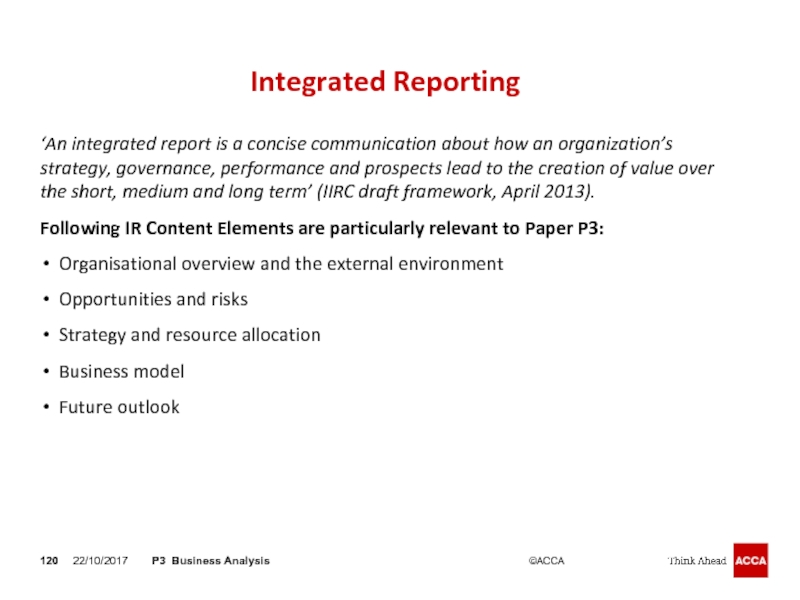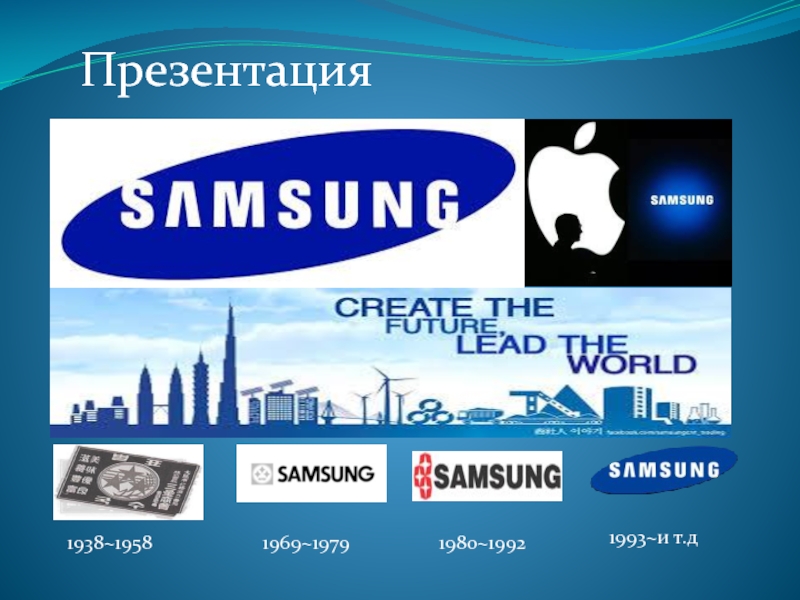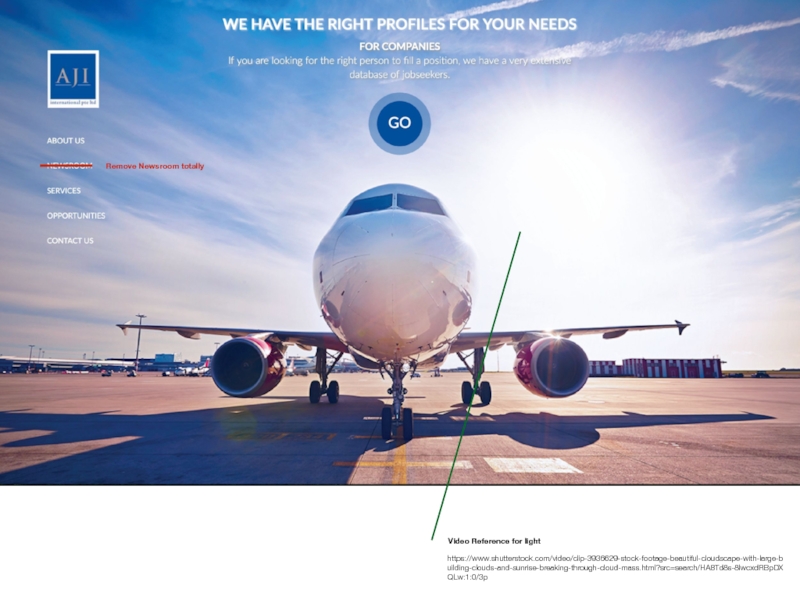- Главная
- Разное
- Дизайн
- Бизнес и предпринимательство
- Аналитика
- Образование
- Развлечения
- Красота и здоровье
- Финансы
- Государство
- Путешествия
- Спорт
- Недвижимость
- Армия
- Графика
- Культурология
- Еда и кулинария
- Лингвистика
- Английский язык
- Астрономия
- Алгебра
- Биология
- География
- Детские презентации
- Информатика
- История
- Литература
- Маркетинг
- Математика
- Медицина
- Менеджмент
- Музыка
- МХК
- Немецкий язык
- ОБЖ
- Обществознание
- Окружающий мир
- Педагогика
- Русский язык
- Технология
- Физика
- Философия
- Химия
- Шаблоны, картинки для презентаций
- Экология
- Экономика
- Юриспруденция
P3 Business Analysis презентация
Содержание
- 1. P3 Business Analysis
- 2. APPROACH TO EXAMINING THE SYLLABUS The syllabus
- 3. EXAMINER’S EXPECTATIONS & COMMON REASONS FOR FAILURE
- 4. EXAMINER’S EXPECTATIONS & COMMON REASONS FOR FAILURE
- 5. EXAMINER’S EXPECTATIONS & COMMON REASONS FOR FAILURE
- 6. IMPORTANT TERMS Customer Competitors Substitute product Industry
- 7. Business Strategy
- 8. Strategy Strategy: the direction of an
- 9. Strategic Decisions 22/10/2017 P3 Business Analysis
- 10. Strategy Lenses 22/10/2017 P3 Business Analysis This
- 11. Mendelow’s stakeholder’s model Used to identify
- 12. Strategic Position
- 13. External Environment Analysis
- 14. Macro Analysis-PESTEL Analysis It considers the following
- 15. Industrial Analysis-Porter’s Five Forces Analysis Bargaining power
- 16. Threat of new entrants This is limited
- 17. Threat from substitute product A
- 18. Industry lifecycle 22/10/2017 P3 Business Analysis
- 19. Segmentation Segmentation is the subdividing of
- 20. Marketing Understanding and anticipating customer’s needs and
- 21. Marketing Mix Product: should address the needs
- 22. Objective: Used to analyse competitiveness of nations.
- 23. Firm strategy, structure and rivalry These include:
- 24. Internal Environment Analysis
- 25. Culture Types of culture: Power culture:
- 26. Culture Web Cultural web is used to
- 27. Power Culture: who is the most important/influential
- 28. Value Chain Analysis Value chain describes the
- 29. 22/10/2017 P3 Business Analysis Upstream supply chain:
- 30. . Value chain and Effect of IT: 22/10/2017 P3 Business Analysis
- 31. Resource based strategy Understanding resources and competences:
- 32. Position based strategy (finding the resources to
- 33. M’s Model Manpower: An analysis of human
- 34. Mission Statement Mission statements are formal documents
- 35. Critical success factors Critical success factors
- 36. Benchmarking 22/10/2017 P3 Business Analysis Benchmarking is:
- 37. Knowledge management To capture + organize +
- 38. SWOT analysis 22/10/2017 P3 Business Analysis
- 39. Strategic Choices
- 40. Strategic Choices 22/10/2017 P3 Business Analysis
- 41. Porter’s competitive strategies It’s about the choice
- 42. Strategic Clock 22/10/2017 P3 Business Analysis
- 43. AnsOff’s/Product-market Matrix 22/10/2017 P3 Business Analysis
- 44. TOWS Matrix 22/10/2017 P3 Business Analysis
- 45. Methods of growth 22/10/2017 P3 Business Analysis
- 46. Corporate Strategy 22/10/2017 P3 Business Analysis
- 47. How does Head office (Corporate) add value
- 48. BCG matrix 22/10/2017 P3 Business Analysis
- 49. Ashridge Model Two variables are considered: Feel:
- 50. Product lifecycle 22/10/2017 P3 Business Analysis
- 51. Success Criteria/SFA The exam question
- 52. Globalization (International Diversification) Globalisation at a macroeconomic
- 53. Organizing for success
- 54. Organization Structures Simple Structures: A highly centralized
- 55. Divisional structure: As organizations grow they will
- 56. Mintzberg’s organisational configurations Mintzberg suggested that
- 57. Mintzberg identified five configurations depending on the
- 58. Strategic Change Management
- 59. Types of changes Scope of change
- 60. The contextual feature Model The following factors
- 61. Force Field Analysis (Lewin’s) 22/10/2017 P3 Business
- 62. Roles of management/Style of introducing change Participation/collaboration:
- 63. Turnaround Strategy Turnaround Strategy: when the business
- 64. Business process Change
- 65. What is a business process? Arrangement
- 66. Outsourcing Outsourcing is when any
- 67. Harmon’s process strategy matrix What should be
- 68. Harmon's pattern of Re- Design Simplification: The
- 69. Example 22/10/2017 P3 Business Analysis
- 70. POPIT Model This approach to business
- 71. Organization: consider the organizational capabilities and
- 72. Software Selection 22/10/2017 P3 Business Analysis
- 73. Assessing a software Package(Skidmore & Eva) At
- 74. Software Selection- 4 or 5 stage Process
- 75. Information Technology
- 76. E-Business E Business- transformation of key
- 77. Influence of Internet on Strategy Disintermediation-some
- 78. Stages in the use of technology in
- 79. Forms of E-Commerce There are four
- 80. E-Marketing Application of internet technology to achieve
- 81. Customer Relationship Management (CRM) Establishing, developing and
- 82. Big Data Extremely large collections of data
- 83. Variety: Financial transactions Buying habits Reaction to
- 84. Leadership & Human Resource Management
- 85. Leadership theories Trait theories Good leaders
- 86. Styles of leadership Transactional leaders Use systems
- 87. Kurt Lewin’s 3 styles of leadership Autocratic
- 88. Job Design Job Design is essentially about
- 89. Job rotation, job enlargement and job enrichment:
- 90. Competency framework(HRM) The required outcome expected from
- 91. Appraisal (HRM) Expected performance vs actual
- 92. Succession planning Facilitates management development at all
- 93. Project management
- 94. Project management Project: A project is an
- 95. Stages in the project life cycle Every
- 96. Step 1. Project initiation At this stage,
- 97. Risk assessment Risk can be analysed and
- 98. Step 2.Project planning A project plan is
- 99. Step 3. Project execution A project
- 100. Step 4. Project monitoring and control A
- 101. Step 5. Project completion A project is
- 102. A benefit realization review: is done to
- 103. Forecasting & Finance
- 104. Ratio analysis Profitability ratios Gross profit
- 105. Liquidity ratios Inventory days = Inventory
- 106. Investment ratios P/E ratios =
- 107. Risk measurement ratios Interest cover =
- 108. Forecasting Linear Regression Analysis: finds the equation
- 109. Forecasting Correlation: relationship between two variable
- 110. Forecasting Time series: A time series shows
- 111. Pricing 22/10/2017 P3 Business Analysis
- 112. Short term decision making Relevant costing: A
- 113. Decision making relevant for P3 Make
- 114. Practice Decision making: 22/10/2017 P3 Business Analysis
- 115. Budgeting A plan, not a forecast. It’s
- 116. Types of standards Variance Analysis Flexed
- 117. Activity based costing Treatment of overheads according
- 118. Corporate Social Responsibility Corporate Social responsibility (CSR)
- 119. Corporate Governance It is the conduct of
- 120. Integrated Reporting ‘An integrated report is a
Слайд 2APPROACH TO EXAMINING THE SYLLABUS
The syllabus is assessed by a three-hour
Section A
Section A contains one multi-part question based on a case study scenario. This question is worth 50 marks.
Section B
Section B will consist of three discrete questions each worth 25 marks. Candidates must answer two questions from this section.
Total: 100 marks
22/10/2017
P3 Business Analysis
Слайд 3EXAMINER’S EXPECTATIONS & COMMON REASONS FOR FAILURE IN P3
Cover the entire
Application of relevant Models according to the requirement
Application of knowledge in the context of given scenario
Using quantitative data to support the understanding of situations-straight forward marks!
22/10/2017
Title of presentation - enter in the Header & Footer field
Слайд 4EXAMINER’S EXPECTATIONS & COMMON REASONS FOR FAILURE IN P3
there isn’t a
Study the question requirements carefully, particularly if there is an example showing the content and detail required in the answer.
Be prepared to bring forward knowledge and techniques from syllabuses that feed into P3 e.g. management accounting
Familiarize yourself with the technical articles on the ACCA web site that are relevant to this paper.
22/10/2017
Title of presentation - enter in the Header & Footer field
Слайд 5EXAMINER’S EXPECTATIONS & COMMON REASONS FOR FAILURE IN P3-Continued
In most questions,
Time management remains an issue for some candidates. This could be resolved by avoiding quoting lengthy detail from the case study scenario, instead focusing on responding to the question requirements.
22/10/2017
Title of presentation - enter in the Header & Footer field
Слайд 6IMPORTANT TERMS
Customer
Competitors
Substitute product
Industry
Segment
Stakeholders
Strategic position
Strategic choices
Strategic action/implementation
22/10/2017
Title of presentation - enter in
Слайд 8Strategy
Strategy: the direction of an organization over the long term to
Levels of strategy:
Corporate Strategy
Business/competitive strategy
Operational Strategy
22/10/2017
P3 Business Analysis
Слайд 10Strategy Lenses
22/10/2017
P3 Business Analysis
This model argues that strategy can be set
Strategy as design: A rational, top-down process — rational managers, clear objectives, machine — like system
Strategy as experience: an adaptation of what has worked in the past — based on experience, assumptions, decisions.
Strategy as ideas: Strategy based on innovation, diversity of ideas, informal interaction and experimentation.
Слайд 11Mendelow’s stakeholder’s model
Used to identify and manage stakeholders according to
Power: in an influential position?
Interest: is a stakeholder affected by the decision? power high
high low
High
Interest
Low
22/10/2017
P3 Business Analysis
Слайд 14Macro Analysis-PESTEL Analysis
It considers the following ‘6’ external factors:
Political Factors: e.g.
Economic Factors: e.g. disposable income, inflation rates , employment rates, international trade etc.
Social Factors: Demography (average age, ethnicity, family structure, geography, culture, lifestyle etc.
Technological Factors: e.g. awareness of stakeholders about technology, new products and services become available, new media for communication with customers etc.
Environmental Factors: awareness of stakeholders about environment, green policies, pressure groups, environmental risk, legislation etc.
Legal Factors: e.g. health & safety laws, employment law, data protection act etc.
All above factors are interlinked
All PESTEL factors help an organization to identify its threats and opportunities in the external environment.
22/10/2017
P3 Business Analysis
Слайд 15Industrial Analysis-Porter’s Five Forces Analysis
Bargaining power of suppliers: Depends on:
Threats to suppliers industry
Number of customers in industry
The importance of supplier’s product to the customer’s business
Switching costs
Differentiated product
Rivalry among current competitors: Depends on:
Market growth
Buyers ease of switching
Spare capacity
Exit barriers
Uncertainty about competitor's strategy
22/10/2017
P3 Business Analysis
Слайд 16Threat of new entrants
This is limited by barriers to entry:
Economies of
Product differentiation
Access to distribution channels
Switching costs
Capital requirements
Know-how
Patent rights
Government regulations
Bargaining power of customers: Depends on:
Volume bought
Switching costs
Purchasing skills
How many buyers there are
How critical the product is to customer’s own business
Alternative products available from other suppliers
How many buyers there are
22/10/2017
P3 Business Analysis
Слайд 17Threat from substitute product
A substitute product is a goods or
22/10/2017
P3 Business Analysis
Слайд 19Segmentation
Segmentation is the subdividing of a market into increasingly homogeneous(customers having
Basis may be;
Geographic area
Preference of quality/price
Household status
Religion/ethnicity
Social class/lifestyle/income
Segment should be;
Measurable
Accessible, and can be accessed profitably
Stable
Potentially profitable
Susceptible to a distinct marketing mix
22/10/2017
P3 Business Analysis
Слайд 20Marketing
Understanding and anticipating customer’s needs and meeting these customer’s needs in
Marketing can be:
UNDIFFERENTIATED Marketing __ Same product to whole market
DIFFERENTIATED Marketing __ Several versions for many segments
CONCENTRATED Marketing __ Specialized product for one segment only
22/10/2017
P3 Business Analysis
Слайд 21Marketing Mix
Product: should address the needs of customers
Price: value for money
Place:
Promotion: communication with customers about the product
People: who can provide service according to the expectation of customer
Process: convenient for customers
Physical evidence: impression even before availing the service
IT and marketing mix -- Important for exam
22/10/2017
P3 Business Analysis
Слайд 22Objective: Used to analyse competitiveness of nations. Porter identified why some
Factor conditions These include:
Basic factors: like Natural resources, Climate etc. and;
Advanced factors: like Communications infrastructure, Knowledge bases and logistics system
Demand conditions These include:
Market segmentation of home market
Sophistication of buyers
Position within product life-cycle in home market
Anticipation of buyer needs
22/10/2017
P3 Business Analysis
Porter’s Diamond Model
Слайд 23Firm strategy, structure and rivalry These include:
Attitude to short-term profit
National culture
Level of domestic rivalry
Related and supporting industries These include:
Strength of suppliers
Quality of suppliers
22/10/2017
P3 Business Analysis
Слайд 25Culture
Types of culture:
Power culture: Here, power is concentrated in the hands
Role culture: This is characterised by a traditional organisational structure in which jobs are arranged by function and seniority, and each employee has a distinct role and job specification
Task culture: Here, the emphasis is on getting the job done
22/10/2017
P3 Business Analysis
Слайд 26Culture Web
Cultural web is used to analyze the culture of an
It has 7 elements:
Rituals & Routines: a task performed periodically (business as well as non-business)-daily behaviours etc.
Symbols: Symbolizing the position of an individual-can be verbal or visual e.g. logos, expensive cars, special dining rooms, personal assistants, language, titles etc.
Control Systems: it is the identification of the basis of performance measurement system and rewards-what is most closely monitored in an organization? Punishment or reward system? What processes has the strongest/weakest controls.
Organizational structure: formal or informal, tall or flat, centralized or decentralized.
22/10/2017
P3 Business Analysis
Слайд 27Power Culture: who is the most important/influential position in the organization?
Stories:
Paradigm: overall beliefs. It reinforces the other elements of culture web-overall conclusion of all above points.
22/10/2017
P3 Business Analysis
Слайд 28Value Chain Analysis Value chain describes the activities within and around an
Primary activities:
Inbound logistics: deals with delivery of raw materials, handling and storage of raw materials.
Operations: conversion of raw material into finished goods.
Outbound logistics: storage of finished goods, ordering systems, delivery to customers
Marketing & sales: communication with customers to inform about product.
Services: after sale services e.g. warranties, installing products.
22/10/2017
P3 Business Analysis
Secondary/Support Activities:
Procurement: right price, right quantity, right quality, right time, right supplier
Technological Development: computer aided design, computer aided manufacturing
HRM: hiring, training, appraisal, dismissal
Firm Infrastructure: tall/flat, centralized/decentralized, formal/informal
Слайд 2922/10/2017
P3 Business Analysis
Upstream supply chain: the link between organization and its
Downstream supply chain: the relation between organization and its customers, outbound logistics, marketing & sales, services.
Слайд 31Resource based strategy
Understanding resources and competences:
Same as
or easy to copy or difficult to copy
Resources
Competitors
22/10/2017
P3 Business Analysis
Слайд 32Position based strategy (finding the resources to meet the environment):
In
Resource based strategy (find the environment that fits our capabilities):
takes the approach that sustainable competitive advantage comes through possession of distinctive resources:
Physical resources (asset infrastructure, rights to raw materials); and/or
Competences (skills, knowledge etc. – especially for service companies)
22/10/2017
P3 Business Analysis
Слайд 33M’s Model
Manpower: An analysis of human resources
Money: An analysis of financial
Machinery: An analysis of operational resources
Materials: Purchasing and suppliers factors
Markets: Issues of marketing and distribution to the customers
Management: The corporate, tactical and operational stewardship of the company
Methods: Processes used to create outputs from inputs
Make Up: Organizational structure and culture
Management Information Systems: Strategic use of IT and IS.
22/10/2017
P3 Business Analysis
Слайд 34Mission Statement
Mission statements are formal documents that state the organization's mission.
Contents of mission statement: to be effective a corporate mission must contain the following four components:
Purpose of business
Scope and industrial domain
Competitive strategy
Ethics and culture
22/10/2017
P3 Business Analysis
Слайд 35Critical success factors
Critical success factors Are those product features that
CSFs are measured by key performance indicators.
Example:
CSF KPI
Safety Number of accidents × 100
Total number of journeys
22/10/2017
P3 Business Analysis
Слайд 36Benchmarking
22/10/2017
P3 Business Analysis
Benchmarking is:
data gathering, of targets and comparators;
identifying relative levels
Adoption of identified best practices to improve performance.
Types of Benchmarking:
Internal benchmarking. Here performance is compared to an internally generated target
External benchmarking. Here you compare your performance to that seen in other similar organizations
Best practice. Even better rather than randomly choosing an external, similar organisation, choose the best one and compare yourself to performance there
Слайд 37Knowledge management
To capture + organize + make widely available the knowledge
Organizational knowledge is the collective and shared experience accumulated through systems, routines and activities of sharing across the organization
Knowledge can be:
Explicit – which is objective and codified and transmitted in formal ways
Tacit – which is personal and context specific and is therefore hard to formalize and transmit
To do this an organization may seek to be a learning organization that:
(a) recognizes the significance of people’s intuition
(b) welcomes different/conflicting view; and
(c) makes experimentation the norm
22/10/2017
P3 Business Analysis
Слайд 41Porter’s competitive strategies
It’s about the choice between how to compete in
Cost leadership: selling the same product as competitor’s for lower price (be cheap)
Differentiation: Selling the product which is different from competitors. Product is unique(be better)
Focus (niche) Strategy: If a firm lacks the resources to dominate the broad (or mass) market, it can seek to dominate a niche within the markets
22/10/2017
P3 Business Analysis
Слайд 47How does Head office (Corporate) add value for business?
Portfolio Managers –
Synergy managers – These businesses look for synergies between existing and future SBUs. For example, a company might start providing ACCA courses and then use much of that knowledge to start an SBU delivering CIMA, then another doing other courses.
Parental developers – These companies look to use the competencies based at Head Office, such as tight financial control, to improve the performance of all the SBUs. The main ways to do this are through:
Providing access to resources the individual SBUs could not access on their own (e.g. financing).
Achieving economies of scale and synergies that an SBU would not be able to achieve on their own (e.g. a coordinated IT system).
22/10/2017
P3 Business Analysis
Слайд 48BCG matrix
22/10/2017
P3 Business Analysis
Tell about contribution of different SBUs to business
It Consider 2 variables- Market growth & Market Share
Слайд 49Ashridge Model
Two variables are considered:
Feel: The degree of fit between the
Benefit: the degree of fit between the opportunities the SBUs present for parenting and the parent's skills resources and other characteristics
22/10/2017
P3 Business Analysis
Слайд 51Success Criteria/SFA
The exam question of P3 on strategic choices
Suitability: Determining the suitability of an option can consider that an option being evaluated can?
Feasibility : is concerned with whether or not the organisation has
Acceptability: Acceptability is concerned with the expected performance of outcomes if a strategy is implemented to. Acceptability to shareholders and other relevant stakeholders is considered
22/10/2017
P3 Business Analysis
Слайд 52Globalization (International Diversification)
Globalisation at a macroeconomic level comes from the closer
Management Orientation (international business-way to market:
Ethnocentrism (International):It ignores any inter country differences. Marketing mix is centralized and standardized with no local adaptations .e.g. paper industry
Polycentrism (Multinational): Each country is unique, therefore, marketing must be decentralized. This may increase business volume in the target country at the expense of economies of scale. Openness towards other cultures .e.g. food chains
Geocentrism (global environment):It is based on the assumption that there are both similarities and differences between countries .e.g. construction companies.
22/10/2017
P3 Business Analysis
Слайд 54Organization Structures
Simple Structures: A highly centralized structure where there is one
Functional Structure:People within the organisation are organized by a function. So there is a finance function, a manufacturing function etc
22/10/2017
P3 Business Analysis
Слайд 55Divisional structure: As organizations grow they will often develop a divisional
Matrix Structure: where there are two bosses to report to
22/10/2017
P3 Business Analysis
Слайд 56Mintzberg’s organisational configurations
Mintzberg suggested that an organisation consisted of five elements:
The
The middle line: middle managers responsible for carrying out the decisions of the strategic apex; the chain of command down through the organisation.
The operating core: the workers.
Support staff: departments such as accounting, personnel and IT.
The technocracy: the people responsible for devising and enforcing standards and procedures such as the personnel manual, the internal control system, the quality control system, health and safety rules.
22/10/2017
P3 Business Analysis
Слайд 57Mintzberg identified five configurations depending on the relative importance of the
22/10/2017
P3 Business Analysis
Слайд 59Types of changes
Scope of change
Realignment Transformational
Nature Incremental
of (gradual)
change
Big bang
(sudden)
22/10/2017
P3 Business Analysis
Слайд 60The contextual feature Model
The following factors increases/decreases the acceptance of change
Time-is sufficient time available to implement change?
Scope-wider or narrow?
Preservation-will current competences and knowledge and skills of people be required after change?
Diversity-Difference of opinion about the change-normally depends of past experience
Capability-change management skills available in the organization?
Capacity-resources to bring change available?
Readiness- with regards to ‘acceptance of stakeholders (mendelow’s stakeholder matrix can help)
Power-with regards to key stakeholders.
** Conclusion should be written in exam questions.
22/10/2017
P3 Business Analysis
Слайд 61Force Field Analysis (Lewin’s)
22/10/2017
P3 Business Analysis
Driving forces for change: e.g. new
Restraining forces for change: e.g. belief that existing system is sufficient, cost, complexity, employees resistance etc.
-driving forces should be built on and restraining forces should be reduced
Слайд 62Roles of management/Style of introducing change
Participation/collaboration: bring those effected by change
Negotiation: with employees or those resisting change
Education/Communication: explaining/persuasion
Intervention: by change agent
Manipulation: focus on the positive aspects of change
Coercion: implementing a change by force/use of power
22/10/2017
P3 Business Analysis
Слайд 63Turnaround Strategy
Turnaround Strategy: when the business faces terminal decline and there
Crisis stabilization: serious cost cut/increase revenue
Changes to management: old management is replaced
Communicating with stakeholders: taking stakeholders into confidence
Financial restructuring: further finance is arranged either by gearing or equity
Concentration of effort: focusing on core business activity-outsource rest of them
Attention to target markets: focus on appropriate target markets
Prioritization: of the above strategies-very important for success of turnaround strategy
22/10/2017
P3 Business Analysis
Слайд 65What is a business process?
Arrangement of resources and competences to convert
22/10/2017
P3 Business Analysis
Слайд 66 Outsourcing Outsourcing is when any operation or process that could be
Advantages:
It allows the organization to focus on its core, value-adding activities without the distraction of having to run support services.
Cost savings
Cost certainty
Cost restructuring
Access to cutting edge expertise and talent.
Better quality.
Risk transference.
Capacity management
22/10/2017
P3 Business Analysis
Disadvantages:
Unexpected costs.
Difficult to reverse.
Damage to reputation.
Non-congruent objectives and loss of managerial control.
Success depends on another company’s performance.
Confidentiality/security issues
Слайд 67Harmon’s process strategy matrix
What should be outsourced?
Harmon’s Process Strategy Matrix provides
Complexity of the process
Strategic importance of the process
22/10/2017
P3 Business Analysis
Слайд 68Harmon's pattern of Re- Design
Simplification: The simplification pattern assumes that most
Gaps & Disconnects: Many of the problems affecting process performance (and businesses more generally) result from a failure in communication between functions or business departments. The focus of this redesign pattern is to ensure that the appropriate checks and controls are in place so that efforts are coordinated between functions and departments
Value-Added Analysis:Harmon suggests that non-value-adding activities should be eliminated as far as possible. Obviously, some of them (for example set-up activities) may be essential for the value-added activity to take place. These essential support activities are known as value-enabling activities, and cannot be eliminated altogether
Re-engineering: As one would expect, given the levels of change we looked at earlier, the re-engineering pattern relates to a fundamental rethinking of existing processes to achieve major efficiency improvements
22/10/2017
P3 Business Analysis
Слайд 70POPIT Model
This approach to business change suggests that four elements need
22/10/2017
P3 Business Analysis
Слайд 71
Organization: consider the organizational capabilities and structure and ensure that these
Processes: How are the core business processes carried out? Also, Analyse the value chain and understand the processes (activities) and their linkages.
People: Roles, job descriptions, competences, motivation, rewards, culture.
Information technology: IT architecture, IT capabilities, controls, software and information provision.
22/10/2017
P3 Business Analysis
Слайд 73Assessing a software Package(Skidmore & Eva)
At the time of acquisition of
Functional requirements-Basic requirement e.g. to support business operations
Non- functional requirements-e.g. user friendliness, integrity
Technical requirements-is it compatible with your current operation system or hardware
Design requirements-colours, fonts etc.
Supplier’s stability requirement-supplier’s going concern?
Supplier’s citizenship requirements-reputation and image of supplier
Initial implementation requirements-who will install/training procedures/data migration etc.
Operational requirements-user manual/helpline
Time requirements-how much time will it take
Cost requirements-what cost will it incur
22/10/2017
P3 Business Analysis
Слайд 74Software Selection- 4 or 5 stage Process
(Skidmore & Eva)
The company
Stage 1: Define need/requirements of the software and Obtain tenders
Stage 2: First pass selection
Stage 3: Second pass selection
Stage 4: Implementation
Stage 5: Managing long-term relationship.
22/10/2017
P3 Business Analysis
Слайд 76 E-Business E Business- transformation of key business processes through the use
Benefits of adopting E-Commerce/E-Business?
Cost reduction- e.g. using teleconferencing saves travelling and accommodation cost for important meetings.
Capability-e.g. online store-unlimited items can be displayed
Communication-online chat windows
Competitive advantage
Controls-e.g. in online banking
22/10/2017
P3 Business Analysis
Barriers in adopting E-Commerce/E-Business?
Setup cost
Maintenance cost
Lack of knowledge/skills
Security concerns
Culture
Слайд 77Influence of Internet on Strategy
Disintermediation-some intermediaries going out of business e.g.
Re-intermediation-new intermediaries are coming in e.g. a website for online booking of an air ticket
Power moving to customers- because they have a lot of information, reviews and analysis available on internet about products and service. They can do comparisons of prices, quality etc.
Growing international competition-more and more companies are going international via internet
Increasing international customers
22/10/2017
P3 Business Analysis
Слайд 78Stages in the use of technology in a business
(Nolan’s Model)
Initiation-start
Contagion- the use of IT spread in the organization-everyone want to use it (spread in whole organization).
Control-Senior management now starts to plan the budget. Start making cost benefit analysis-decisions about how much to incest in IT-maintenance etc.
Integration-Different departments start to integrated through computer systems and networks.
Data Administration-After few years the data become more important than the devices itself
Maturity-Data becomes information and becomes the asset for the organization
22/10/2017
P3 Business Analysis
Слайд 79Forms of E-Commerce
There are four different forms:
Business to Business (B2B)-involves
Business to Customer (B2C)-involves businesses selling to general public, typically through catalogues with shopping cart software
Consumer to Business (C2B)-a consumer post their project with a set budget online and within hours, companies review the consumer’s requirement and bid on the project. The consumer review the bids and selects the company that will complete the project
Consumer to Consumer (C2C)-consumer sell their goods to other consumers directly e.g. eBay, OLX etc
22/10/2017
P3 Business Analysis
Слайд 80E-Marketing
Application of internet technology to achieve marketing objectives (the 7 Ps)
Different Characteristics of E-Marketing (6 Is Model)-a very important model for exam questions. The six features are:
Integration-advertisement and sales are integrated in online marketing. Customers can buy the products right on the spot if they like it . in traditional marketing however if a customer watch an ad on television . They have to make an effort to go to the shop and buy it-so sales and marketing are not integrated(websites recognizes the computer systems and record data)
Interactivity-recording of information -of customer’s computer system-also through registrations on websites the customers applies
Intelligence-understanding customers, identification of preferences, patterns and trends analyzed from the data recorded in interactivity. Intelligence and interactivity are linked.
Individualization-promotions according to individuals interest e.g. on Facebook
Industry Structure- Intermediation plus disintermediation(as discussed above)
Independence of Location-marketing can be done from anywhere even from home. No specific need of an office etc.
22/10/2017
P3 Business Analysis
Слайд 81Customer Relationship Management (CRM)
Establishing, developing and maintaining long-term relationship with customer
Building
Develop a customer database
Have more direct contact with customer-via Surveys,e-mail etc.
Develop customer oriented products/services to cater for the changing needs of customers
Customer relationship goes through following stages:
Customer selection(understanding who your customers are/segments)
Customer acquisition(promotions/discounts)
Customer Retention(understanding customers preferences and developing products according to that)
Customer Extension(Try and find/attract more customers)
22/10/2017
P3 Business Analysis
Слайд 82Big Data
Extremely large collections of data (data sets) that may be
Characteristics of Big Data, known as the 3Vs:
Volume 2. Variety 3. Velocity
Volume
Via loyalty cards being swiped at checkouts: details of all purchases you make, when, where, how you pay, use of coupons.
Via websites: every product you have every looked at, every page you have visited, every product you have ever bought.
Social media (such as Facebook and Twitter): Friends and contacts, postings made, your location when postings are made, photographs.
Mobile phone companies: Numbers you ring, texts you send etc
Banking systems: Every receipt, payment, credit
22/10/2017
P3 Business Analysis
Слайд 83Variety:
Financial transactions
Buying habits
Reaction to advertisements on the internet or to advertising
Geographical information
Information about social and business contacts etc
Velocity:
Information must be provided quickly enough to be of use in decision making
22/10/2017
P3 Business Analysis
Слайд 85Leadership theories
Trait theories
Good leaders share similar characteristics
It is possible to develop
Individual is more important than situation
Style theories:
Which assumes that leadership style will affect the motivation of workers
Situational theories/Contingency theories
Good leaders have ability to adopt their leadership style depending upon
Task
Team they are interacting with etc
22/10/2017
P3 Business Analysis
Слайд 86Styles of leadership
Transactional leaders
Use systems and processes to control the behavior
More suitable for relatively static environment
Transformational leaders
Change from within
Empower others
Be visionary
Passionate for their beliefs
Clarity of direction about how to achieve their targets
22/10/2017
P3 Business Analysis
Слайд 87Kurt Lewin’s 3 styles of leadership
Autocratic
Leaders take decision without consulting the
Democratic
Team members are allowed to participate in decision making but leaders take the final decision
Positive impact on the team members
Learning opportunities foe team members
Not suitable where a range of options are available
Laissez – fiare
Allow team members to take decisions and be responsible for the effects
Suitable where team members are capable and motivate
22/10/2017
P3 Business Analysis
Слайд 88Job Design
Job Design is essentially about organizing work and that has
The scientific approach:
This approach is associated with Frederick Taylor (1856–1915). The results of his studies in search of efficiency were that:
Jobs were fragmented into simple tasks
Manual workers simply had to get on with their simple, repetitive task and leave decision making to managers. The skill in each job should be minimised
.
22/10/2017
P3 Business Analysis
Слайд 89Job rotation, job enlargement and job enrichment: This approach gave rise
Job rotation. This is a horizontal change in the job, meaning that a worker is regularly moved from one simplified, de-skilled job to another. This should reduce worker boredom (at least for a while).
Job enlargement. Another horizontal change, but each job now consists of several unskilled tasks.
Job enrichment. This is a vertical change in which some of the tasks previously carried out by managers and supervisors are added to the job
Japanese management: This approach is also known as ‘lean manufacturing’ and it concentrates on eliminating any activity and expenditure that does not add value to the finished product or service. There are three elements:
Elimination of waste
Flexibility
Quality
Business process re-engineering: This approach says that the structure of work has to be radically changed
22/10/2017
P3 Business Analysis
Слайд 90Competency framework(HRM)
The required outcome expected from the performance of a task
Uses/Advantages of competency framework
Hiring
Training
Appraisal
Promotions
Dismissals
22/10/2017
P3 Business Analysis
Слайд 91Appraisal (HRM)
Expected performance vs actual performance
Appropriate timing
Should
Performance measures must be pre-decided and communicated
Appraisal has to be future oriented
Appraisal Methods
Tell
Tell and sell
Listen, tell and sell
22/10/2017
P3 Business Analysis
Слайд 92Succession planning
Facilitates management development at all levels. It refers to developing
Early identification of potential candidates for senior management.
Training linked to career development.
Development of contingency plans in case a post becomes vacant sooner than expected.
22/10/2017
P3 Business Analysis
Слайд 94Project management
Project: A project is an undertaking that has a beginning
Project management
Project management is the combination of systems, techniques and people used to control and monitor activities undertaken within the project. A project will be deemed successful if it is completed
At the specified level of quality
On time
Within budget
Within the specified scope
22/10/2017
P3 Business Analysis
Слайд 95Stages in the project life cycle
Every project is different but each
Initiation
Planning
Execution
Control
Completion
22/10/2017
P3 Business Analysis
Слайд 96Step 1. Project initiation
At this stage, a project initiation document (PID)
A project initiation document has the following elements:
An assessment of current strategic position. It includes:
SWOT
What is wrong with the current system?
How the project will assist in achieving objectives
The constraints that are likely to exist for any project. There are three key project constraints
Cost
Time
Scope
The risks that might arise for the project and how these will be managed
An assessment of benefits and costs (Business case) of performing the project
22/10/2017
P3 Business Analysis
Слайд 97Risk assessment
Risk can be analysed and evaluated according to:
The likelihood that
The impact that they could have on the project
22/10/2017
P3 Business Analysis
Слайд 98Step 2.Project planning
A project plan is needed to ensure that the
Scope
Quality
Time
Budget
List of deadlines
Ways and time of communication
Team structure
Roles and responsibilities
Any other relevant clause agreed by project sponsor and deliverer.
Must be signed by both parties
22/10/2017
P3 Business Analysis
Слайд 99Step 3. Project execution A project team is formulated to execute a
Ideally a project team should be:
Small
Cohesive
Right mix of personalities
22/10/2017
P3 Business Analysis
Some of the roles taken on by team members in organizations include:
Co-ordinator
Shaper
Plant
Monitor/Evaluator
Resource invigilator
Implementer
Team worker
Finisher
Слайд 100Step 4. Project monitoring and control
A project is monitored throughout for
All projects have targets relating to cost, time, scope, and quality; these should be defined in the PID. Regular review and monitoring is important for a successful project.
22/10/2017
P3 Business Analysis
Слайд 101Step 5. Project completion
A project is completed with a
a post project
Done by the deliverer
Done at the last stage before the formal dissolution of the project team
Focus on the conduct of the project
What went well and what went wrong
To improve the project management skills to conduct future projects in more efficient way
A post implementation review (PIR): It is:
Done by the sponsor
Allow actual user to experience the product delivered by the deliverers
Product delivered must be exactly according to the PID
22/10/2017
P3 Business Analysis
Слайд 102A benefit realization review: is done to assure that all the
Done by the sponsor
Allow actual user to experience the product delivered by the deliverers
Product delivered must be exactly according to the PID
Focus on the product delivered rather than the conduct of the project
22/10/2017
P3 Business Analysis
Слайд 104Ratio analysis
Profitability ratios
Gross profit margin = Gross profit x100
Net profit margin = Net profit × 100 sales
Return on capital employed = Profit before interest and tax × 100 capital employed
(capital employed = long term liabilities + share capital)
Asset turnover = Revenue x 100
Capital employed
ROCE = asset turnover × net profit margin
22/10/2017
P3 Business Analysis
Слайд 105Liquidity ratios
Inventory days = Inventory x 100
Debtors days = Trade receivable x 100
Credit sales
Payable days = Trade payables x 100
Credit purchases
Current ration = Current asset Current liabilities
Quick ratio = current asset – inventory Current liabilities
22/10/2017
P3 Business Analysis
Слайд 106Investment ratios
P/E ratios = Price per share
Earning per share = Profit after tax
No of ordinary shares
22/10/2017
P3 Business Analysis
Слайд 107Risk measurement ratios
Interest cover = profit before interest & tax
Gearing ratio = Long term liablity
Long term liablity + capital
22/10/2017
P3 Business Analysis
Слайд 108Forecasting
Linear Regression Analysis: finds the equation of the straight line (line
Y=a + b x
where
y = total cost
x = No of units produced
a = the slope or gradient of the line (e.g how much the cost increases for each additional unit)
b = the intersection of the line on the y axis (the cost that would be incurred even if production were zero).
It is also known as least square method.
22/10/2017
P3 Business Analysis
Слайд 109Forecasting
Correlation: relationship between two variable
Positive
Negative
No correlation
Correlation coefficient(r):
it tells the strength
Range= -1 to +1
Perfect negative-inversely proportional
Perfect positive-directly proportional
Coefficient of determination(r )
It tells us the % dependency of dependent variable on independent variable
22/10/2017
P3 Business Analysis
Слайд 110Forecasting
Time series: A time series shows how an amount changes over
A trend. This is the underlying growth or decline in an amount
Seasonal variations. These are variations which repeat fairly consistently within a period of no more than a year
Cyclical variations. These are variations which repeat over longer than a year. For example, economic boom and depression
Random variations. Unexpected changes in what might be expected.
22/10/2017
P3 Business Analysis
Слайд 112Short term decision making
Relevant costing: A relevant cost is
Future cost
Incremental cost
22/10/2017
P3 Business Analysis
Слайд 113Decision making relevant for P3
Make or buy
Outsourcing
Shutdown decisions
Special contracts/ accept or reject
22/10/2017
P3 Business Analysis
Слайд 115Budgeting
A plan, not a forecast. It’s a short term plan expressed
Objectives of budgetary planning and control systems
Ensure the organization’s objectives are achieved
Compel planning
Communicate ideas and plans
Co-ordinate activities
Provide a framework for responsibility accounting
Establish a system of control
Motivate employees to improve their performance
Styles of budgeting:
Imposed ( top-down )
Participation (bottom-up)
negotiated
22/10/2017
P3 Business Analysis
Слайд 116Types of standards
Variance Analysis
Flexed budgeting and variance Analysis
22/10/2017
P3 Business Analysis
Standard
Слайд 117Activity based costing
Treatment of overheads according to what causes the cost
Advantages
Accurate cost calculation
Accurate selling price
Better cost control
Better decision making
Better planning/ activity based budgeting
Better performance measurement
22/10/2017
P3 Business Analysis
Слайд 118Corporate Social Responsibility
Corporate Social responsibility (CSR) centers on the approach taken
Examples of CSR include:
Acting ecologically
Fair employment policies
Charitable donation
22/10/2017
P3 Business Analysis
Слайд 119Corporate Governance
It is the conduct of the organizations senior management. It’s
Abuses have led to a range of measures to improve corporate governance.
Non-Executive directors(NEDs) have a particular role to play being independent of management
22/10/2017
P3 Business Analysis
Слайд 120Integrated Reporting
‘An integrated report is a concise communication about how an
Following IR Content Elements are particularly relevant to Paper P3:
Organisational overview and the external environment
Opportunities and risks
Strategy and resource allocation
Business model
Future outlook
22/10/2017
P3 Business Analysis
